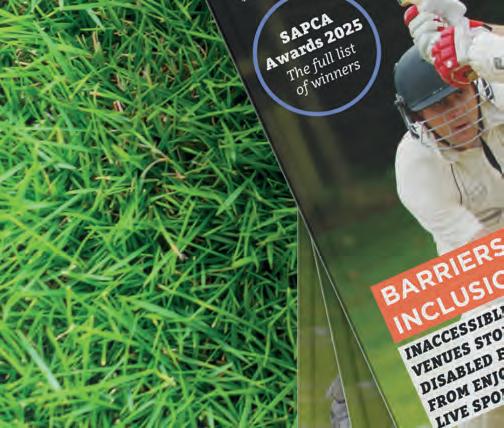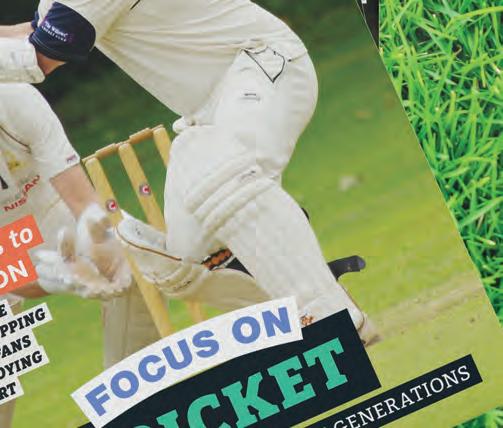
SAPCA Awards 2025
The full list of winners

BARRIERS to INCLUSION








INACCESSIBLE VENUES STOPPING DISABLED FANS FROM ENJOYING LIVE SPORT




SPORT MUST BE “ON THE RIGHT SIDE OF HISTORY” WITH SUSTAINABILITY




SAPCA Awards 2025
The full list of winners









INACCESSIBLE VENUES STOPPING DISABLED FANS FROM ENJOYING LIVE SPORT




SPORT MUST BE “ON THE RIGHT SIDE OF HISTORY” WITH SUSTAINABILITY


THE FOUR-YEAR PLAN TO INSPIRE GENERATIONS








A passion for creating the ultimate quality turf for a wide range of sports applications
Backed

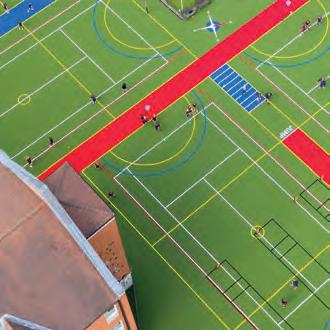
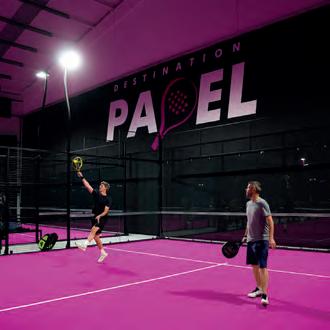



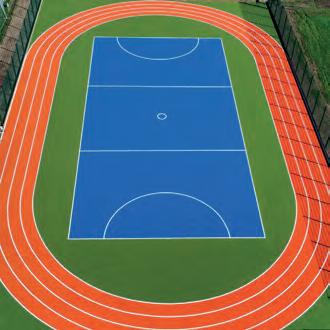



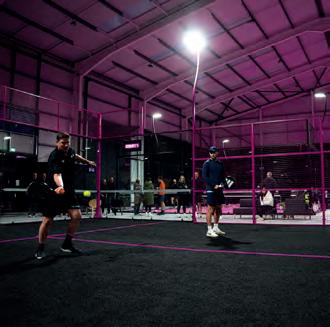

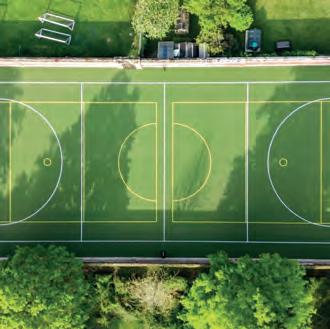











































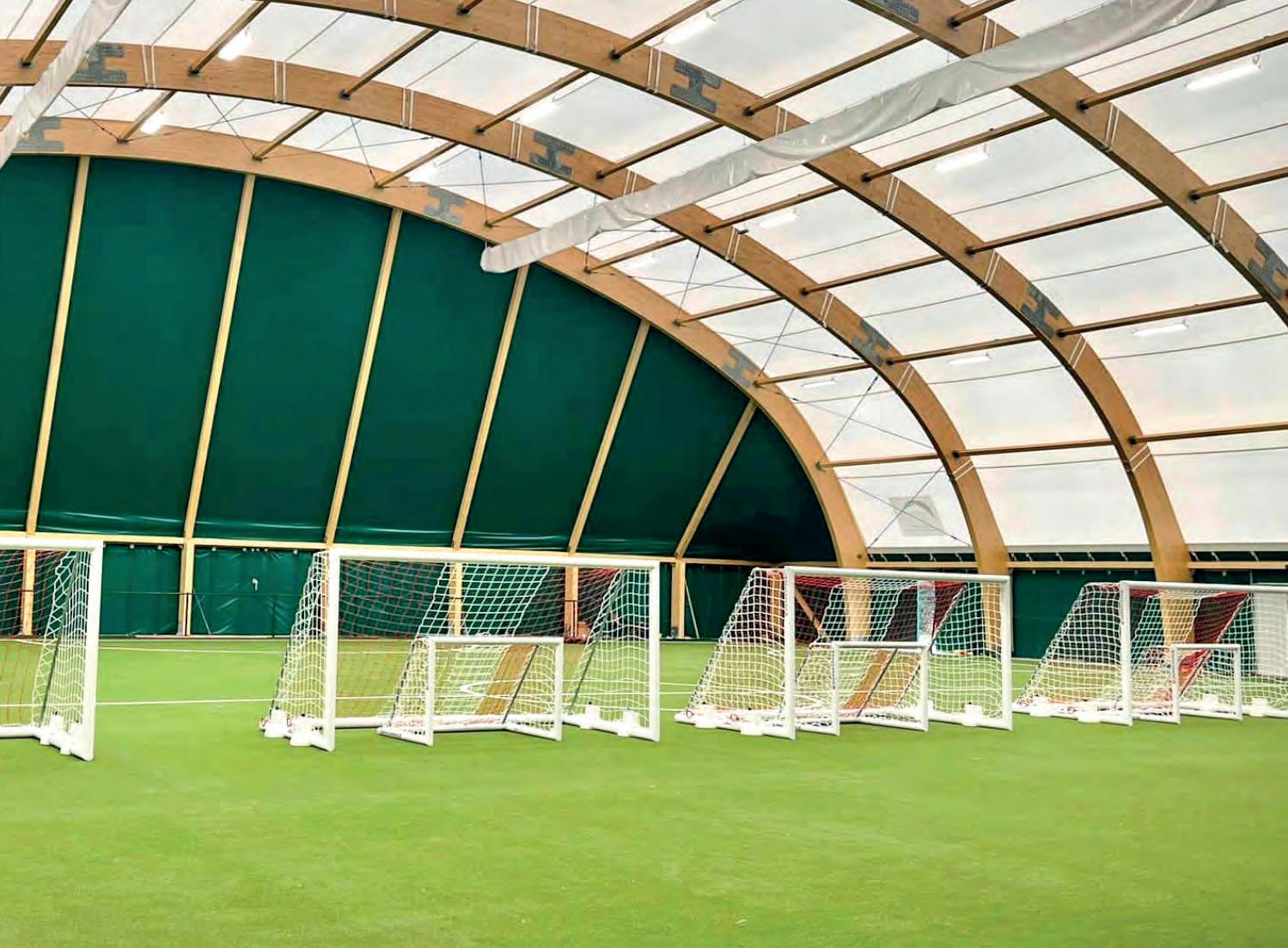

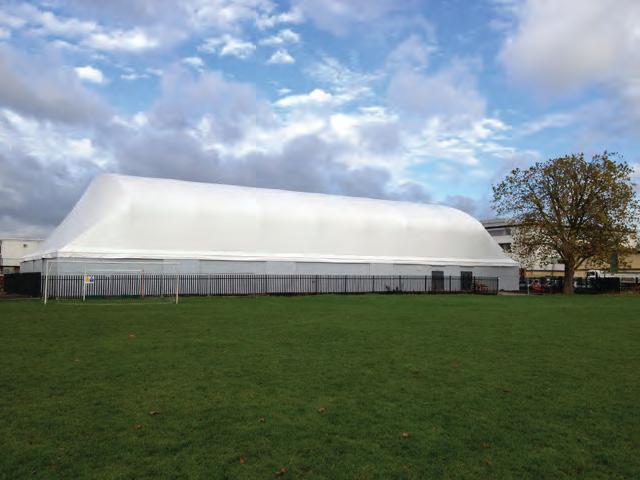
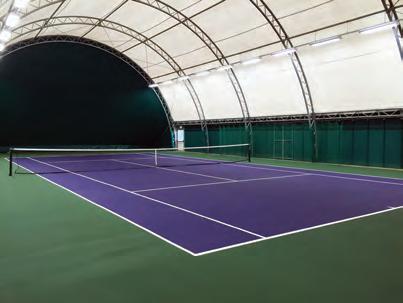

Many p olicies look good on paper and seem well-equipped to achieve their primary aims. Some, however, will have unintended consequences. A recent example of the latter is the government’s plans to remove Sport England’s status as a statutory consultee on planning applications.

Introduced with the aim of speeding up the planning process and to boost the rate of housebuilding, the move probably would make decisions quicker. Sadly, it also places playing fields, sports pitches and outdoor recreational areas at risk. Without Sport England, we would lose the only safeguard we have to ensure construction projects do not result in a loss of active spaces.
Losing sports pitches and playing fields is hardly the desire of any government –and certainly not the current one, which has committed itself to boosting economic growth and wants a fitter and more active workforce driving this change.
The drive to build more homes is an important one – but it needs to be balanced with the need to keep a nation physically active. You can read more about the threat to Sport England’s role (and what industry leaders think about the proposals) from page 74 onwards.
On the flip side, there are often long term benefits that can be achieved as a result of well-thought out policy implementation. Take play, for instance. The sector is now craving for a government-led strategy – and rightly so, seeing that the previous one was launched 17 years ago.
Encouraging developments and investment in play would not just provide an uplift to the physical and mental health of young people now. It would also help boost activity levels of parents, grandparents and carers - and instil in young people healthy habits that they will also carry into adulthood (more on this on page 94).
Jam today, jam tomorrow, as some might say. Given that the net result can only be positive all round, let’s do it!
Tom Walker, Editor
The o cial magazine of
Tom Walker Editor
T: +44 (0)7796 512769
E: tom@nationmedia.uk
John Challinor Publisher
T: +44 (0)7971 043396
E: john@nationmedia.uk
Register for your free subscription at www.sportsnation.uk
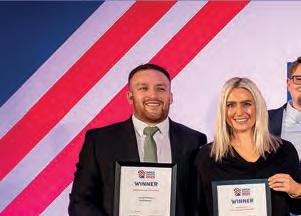





































Issue 2 / 25
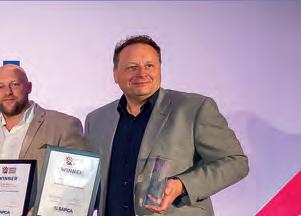


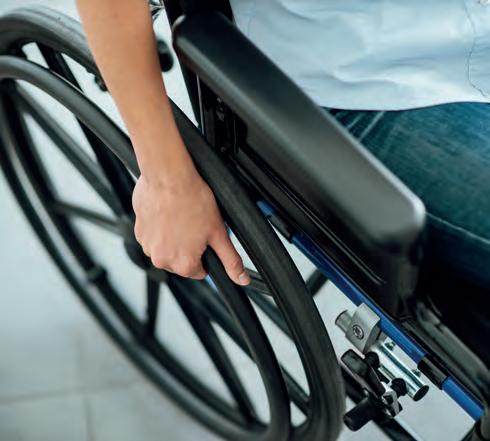
05 Leader
Unintended consequences
09 News
The latest industry news from around the sports and physical activity sector
22 Column: Richard Shaw (SAPCA)
Padel and the power of first impressions
24 Column: Lisa Wainwright (SRA)
The importance of growing sport for all
28 Event review: SAPCA Conference
Sustainability on the agenda at Manchester event
32 Rewarding excellence
Winners of this year’s SAPCA Awards revealed



36 Chris Boardman CBE
The Sport England chair calls on the sports and physical activity sector to be “on the right side of history” when it comes to sustainability
44 Sport in focus: cricket
SportsNation looks at the ECB’s new Inspiring Generations strategy and the plans to grow the sport over the next four years
52 Making football future fit
The FA has revealed its plans to improve grassroots youth football in England – so what will the new Future Fit proposals mean?
54 LED there be light
Why it is important to consider carefully who you hire to install and supply sports lighting solutions

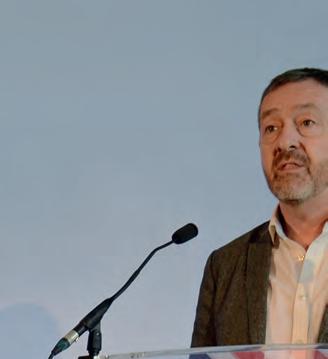


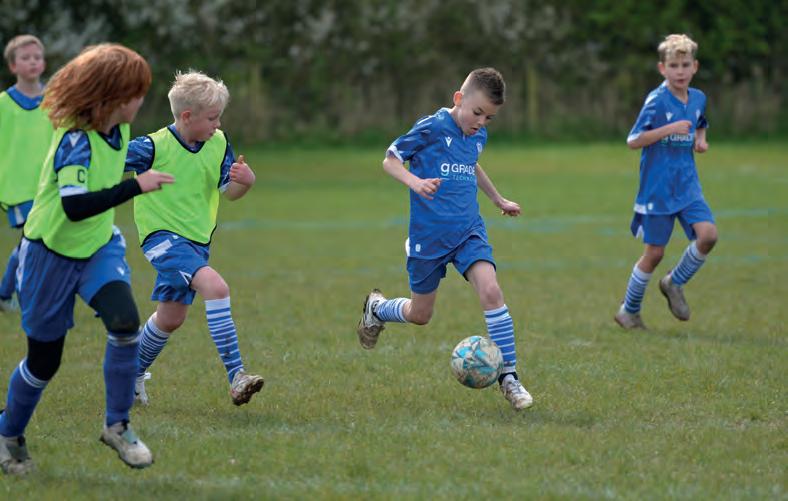


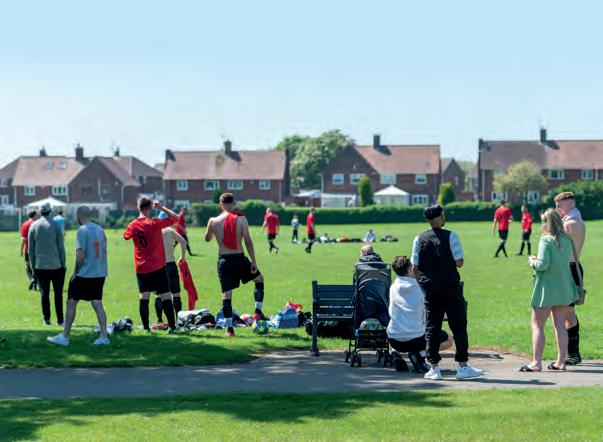


60 Tackling inequality
Inaccessible venues and a worrying increase in disability abuse are among the major barriers for disabled fans to attending live sport
68 What next for Sport England?
The government has announced plans to remove Sport England’s role as statutory consultee in planning decisions
72 Event review: Active-net
The latest Active-Net networking event took place in March, attracting more than 100 delegates from across the physical activity sector
74 SAPCA Showcase
SportsNation directory of selected SAPCA member companies
03 News
The news from across the UK play sector
94 Strategic play
There hasn’t been a new play strategy for England in 17 years – are we finally getting one?
96 Tom Hayes MP
The Bournemouth East MP is quickly becoming a true champion of the play sector
100 State of Play
The publication of the Play Commission’s interim report has been hailed as a significant milestone
108 Local success
A look at BCP Council’s ambitious strategy for play






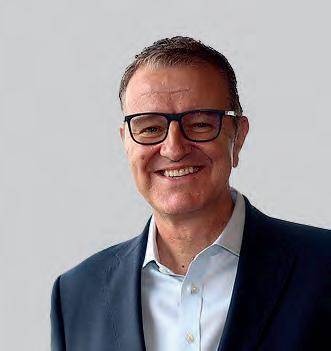

SportsNation is the single, authoritative voice for the provision, delivery, maintenance and management of sports and physical activity facilities. Published bi-monthly, the magazine focuses on the people, places, policies and products that help to build active communities throughout the UK. Subscribe now and we will email you a complimentary copy of the magazine every two months.
As the official magazine of SAPCA (the Sports and Play Construction Association), every issue of the magazine will also include information about technical guidance, funding, standards and product innovations.
The government has made a commitment to invest £100m in improving and upgrading local sports facilities across the UK.
The funding is expected to support hundreds of new and improved sports pitches, changing rooms, goalposts and floodlights to improve access to sport and physical activity for local communities. Financial support will be targeted at deprived areas, with a focus on improving access and participation levels among underrepresented people – including women and girls, ethnic minority groups and disabled players.
The funding will be invested in sites during 2025-26, with £82.3m allocated to projects in England (including a £2m uplift of new investment committed in the current financial year), £8.6m in Scotland, £6.1m in Wales and £3m in Northern Ireland. The government will work
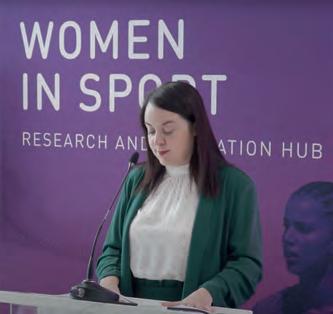
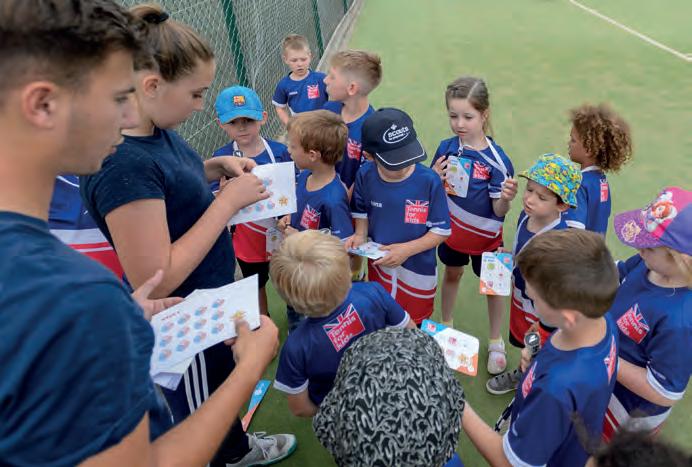
The £100m will be shared by the four home nations and will be distributed during the 2025-26 financial year
together with the English Premier League, The Football Association and the Football Foundation in England, the Cymru Football Foundation in Wales and the Football Associations in Scotland and Northern Ireland.
The package delivers on the Government’s Plan for Change, with the funding designed to break down barriers to opportunity and tackle persistent health inequalities through prevention.
Loughborough University has launched a new research facility to accelerate “growth and excellence” in the women’s sport sector.
The multi-million-pound Women in Sport Research and Innovation Hub has been designed to bring together leading academics, national governing bodies, elite-level athletes
and industry partners to drive positive change at every level of the women’s sporting ecosystem.
The hub will look to provide studies and advances in a wide range of areas – such as the menstrual cycle and its physiological impact on sport performance, the design of pregnancy and postpartum sportswear.
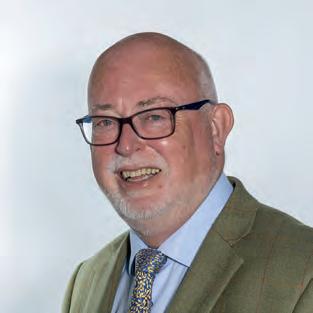
Gavin Boyd has been named the new Chair of the Sport NI Board. Boyd, who begins his fouryear tenure immediately, has previously served as a Sport NI Board Member and Vice-Chair.
“I am delighted to take up the role of Chair of Sport NI and as a Board member since 2021 I’d like to thank our previous Chair George Lucas for his leadership and expertise over the past eight years,” Boyd said.
“I am looking forward to working with colleagues, governing bodies
Swim England has strengthened its leadership team with the appointment of Lisa West as Financial Director. West joins the national governing body from Barratt Redrow, where she held senior finance management roles.
Previously, she has held finance positions at retailer Next, utility company E.ON UK plc and oil company ConocoPhillips Inc. She qualified as a chartered accountant with Deloitte.
She started in her new role in March (2025) and is the third new member to join Swim England’s senior leadership team, following the appointment of Helen Marney as Director of Community Participation and Health and Maria Papadopoulos as People Director.
Andy Salmon, Swim England CEO, said West had a crucial part to play for the national governing body.
“Lisa has a wealth of expertise and experience that will be so
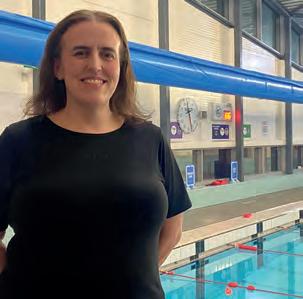
important for the organisation as we embark on our transformation programme,” Salmon said. “Swim England does not exist to make a financial surplus but it is vital that we manage our resources wisely.”
Commenting on her appointment, West added: “I am very proud to be able to play a part in delivering the new strategy, One Swim England, which I believe is a huge step forward for the aquatics community.”
and sports clubs to support our mission to increase participation in sport and physical activity and support our athletes to compete amongst the best in the world as we look ahead to the 2026 Commonwealth Games and 2028 Olympic and Paralympic Games.”
CEO Richard Archibald added:
“I’d like to congratulate Gavin on his new role. He has played an integral role on the Sport NI Board and we are delighted to have retained his expertise for another four years.”
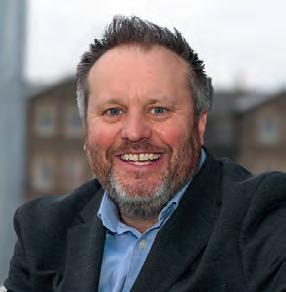
Neil Priscott named CEO of GCCC
Gloucestershire Cricket has appointed Neil Priscott as CEO after an eight-month period as Interim. In his role, Priscott will report to Gloucestershire Cricket Chair, Peter Matthews, and be accountable for the origination, implementation and execution of the longterm strategy of the club. The appointment comes after former CEO, Will Brown, stepped down in May 2024.

























In an industry where cost is often the focus, Active IQ stands apart by delivering more - more quality, more support, more value.
We know that price matters, but when it comes to qualifications, reliability, and long-term success, quality is non-negotiable. That’s why we offer:
Industry-leading qualifications – Designed with employers to meet workforce demands
Comprehensive support – A dedicated team invested in your success
Added value – Free CPD, FitPro membership with eLearning purchases, and extra resources at no cost
A trusted partner – Transparent pricing, no hidden fees, and a gold-standard reputation. Why settle for less? Begin with better. Choose Active IQ.
WHERE YOU GET MORE.... MORE QUALITY, MORE SUPPORT, MORE VALUE.

The Scottish Football Association has opened the 2025-26 application window for its Scottish Football Facilities Fund.
During 2025-26, the new grant programme will distribute £8.6m into key football facilities, identified as critical in retaining and increasing participation at grassroots level and where there is an evidencebased need for investment.
Facilities receiving funding will need to show how they promote healthy, physical activity through football and other sports, contributing to social inclusion and cohesion in safe and attractive environments and in a sustainable way.
The fund will invest across two separate funding streams. The Community Football Spaces (CFS) has been designed to support grassroots football facility development. Meanwhile, the Member

The CFS has been designed to support grassroots football facility development
Support stream will assist Scottish FA Member Clubs with their facilityrelated Club Licencing requirements. Within CFS, the programme will deliver investment into two types of projects:
• Maintain projects –The redevelopment or
upgrades of existing natural grass or 3G pitches, floodlights and general improvements to existing built infrastructure.
• Attain projects – the development and delivery of ‘new build’ football facility projects – whether natural grass or 3G pitches.
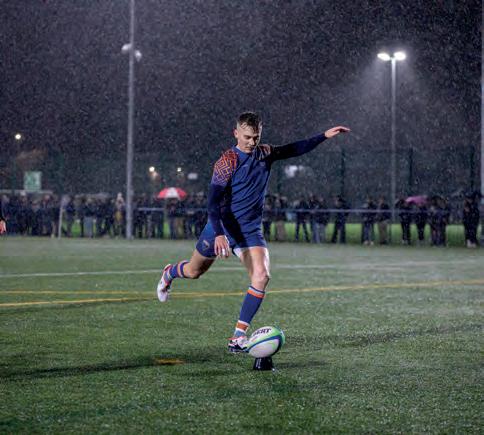
Sport Wales has announced that its Be Active Wales Fund will be run differently during 2025-26, with three ‘windows’ during which applications can be made.
The fund offers grants between £300 and £50,000, enabling sports clubs and organisations to buy equipment, enhance their facilities and support the development of volunteers and coaches so that they can support more people to become active. Sport Wales opened the fund for applications for the new financial year on 2 April and clubs and organisations will now have until Wednesday 4 June to submit their applications. The fund will then pause until the second application window opens between Wednesday 9 July and Wednesday 17 September, while the third and final application window of 2025-26 will open between Wednesday 5 November and Wednesday 14 January.










































































































































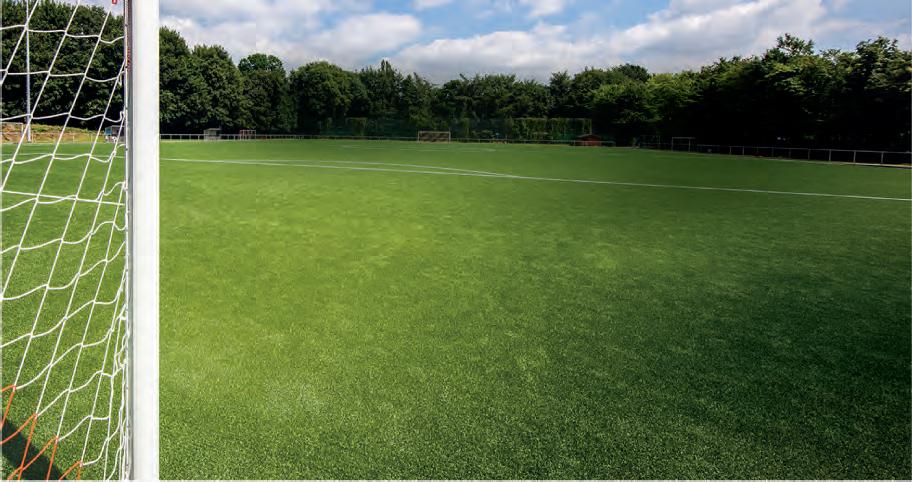
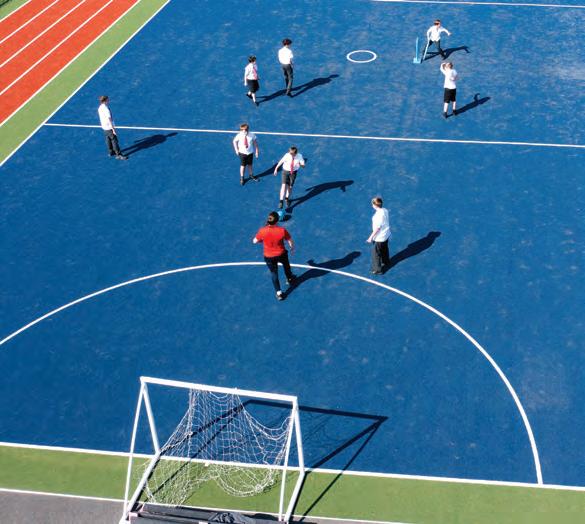
A number of physical activity sector organisations have signed an open letter which outlines concerns over the impact the Labour government’s benefits reforms could have on disabled people and activity levels across the UK.
Led by the Sport and Recreation Alliance, the organisations have come together to highlight the potential significant adverse impacts of the Government’s proposed changes to health and disability benefits and employment support – set out in Pathways to Work: Reforming Benefits and Support Green Paper – on disabled people and participation in sport, recreation and physical activity.
According to the letter, the changes risk creating even greater barriers for disabled people to access the physical and mental health benefits of an active lifestyle and “undermining progress made
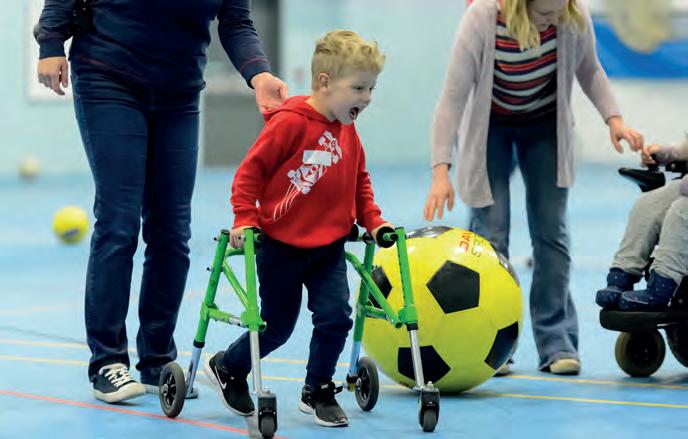
According to the letter, the changes risk creating even greater barriers for disabled people to access sport
by Sport England’s Uniting the Movement strategy” in tackling inactivity and social isolation among disabled people.
“We understand the financial challenges facing the Government and recognise that difficult decisions must be made,” the letter states.
“However, we urge the Government not to rebalance public finances at the expense of disabled people.
“The proposed changes create even greater barriers for disabled people to access the physical and mental health benefits of a physically active lifestyle.”

Manchester United FC has revealed plans to build a new 100,000-capacity stadium – replacing its current Old Trafford venue which has been the club’s home for 115 years. Designed by architect Norman Foster, the plan is to use modular construction techniques – with sections of the building to be constructed off site and transported along the Manchester Ship Canal – which would allow the stadium to be built in just five years, According to Manchester United co-owner, Sir Jim Ratcliffe, the stadium, and wider regeneration project, have the potential to deliver an additional £7.3bn per year to the UK economy – bringing large-scale social and economic benefits to the community and wider region. This would include the possible creation of 92,000 new jobs, more than 17,000 new homes as well as driving an additional 1.8 million visitors annually.


The standards are high. That’s why the University of Michigan turned to Musco for a lighting upgrade at its iconic 107,601-seat Michigan Stadium. The custom-designed lighting system improved uniformity and visibility, reduced glare, enhanced broadcast quality, and elevated the fan experience with cutting-edge light shows. promo.musco.com/sportsnation24





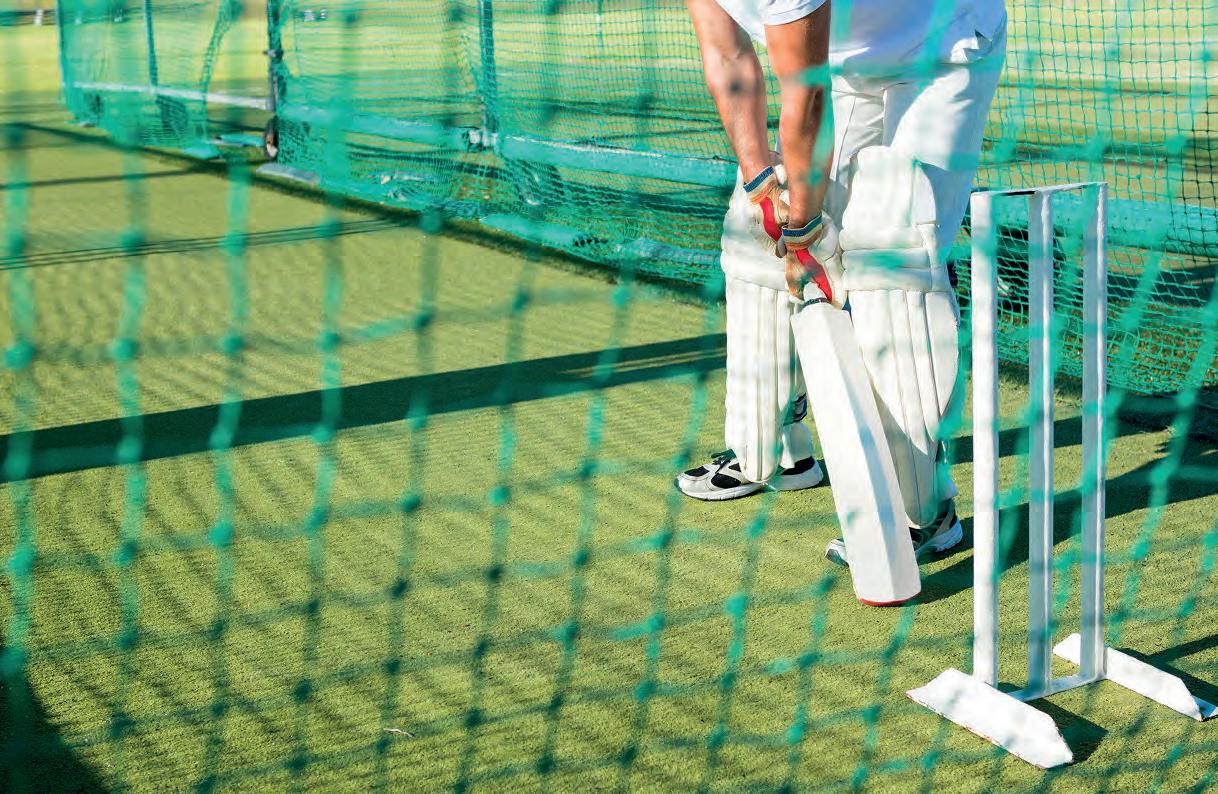

• For bonding synthetic grass to concrete, tarmac or shockpads
• Suitable for indoor and outdoor use
• Beads or trowels easily onto substrate






• Tough, flexible weatherproof bond


















info@obriencontractors.co.uk www.obriencontractors.co.uk/sport


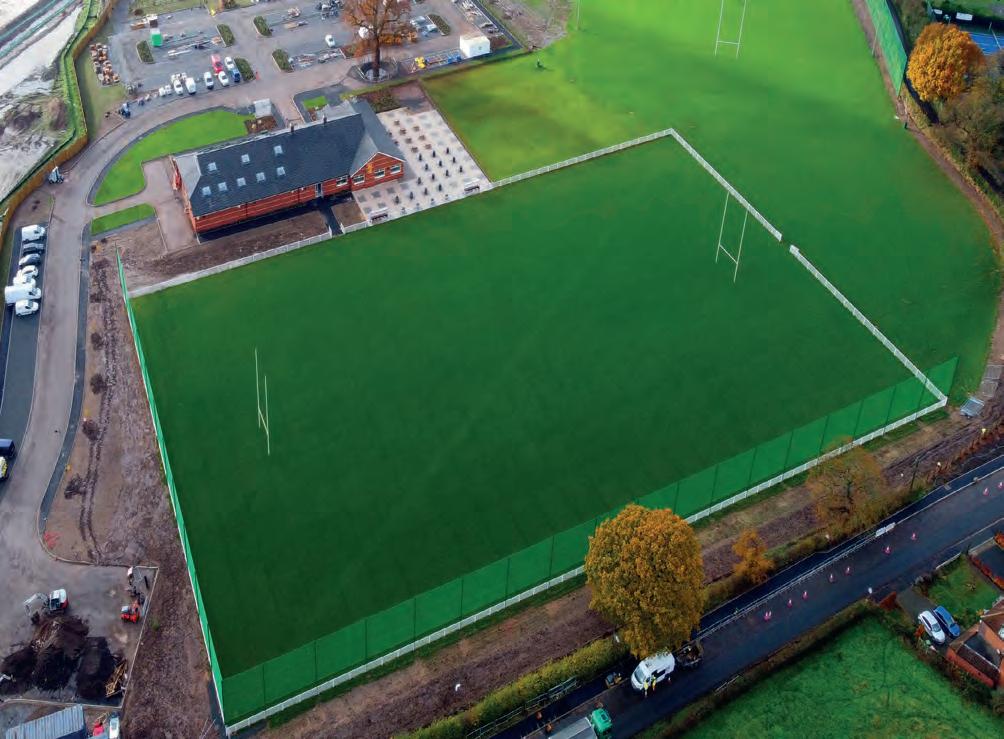

The Trocellen XC & XC Plus Series offers high-quality shock pads made from closedcell polyethylene foam. With ProGame Shock Pads in 2 m wide rolls, customizable lengths and excellent drainage properties, every installation is a breeze.
• Easy installation.
• High dimensional stability.
• Customizable thickness (6 – 14 mm) and density (30 – 90 kg/m3).
• High quality – EN 15330-4 certified.
Perfect for all types of sports fields!

TROCELLEN ProGame Shock Pads
TROCELLEN GmbH | Mülheimer Straße 26 | 53840 Troisdorf +49 2241 2549 000 | progame@trocellen.com | progame-shockpads.com






The London Lions Basketball Club has announced its ambition to develop a “world-class”, purpose-built basketball stadium in the capital. The plan is for the venue to serve as the longterm home for elite basketball in London while also fostering grassroots development and expanding access to the sport. As well as providing a training and game-day home for the London Lions men’s and women’s teams, the proposals would see the venue serving as a hub for youth programmes, community engagement initiatives and talent
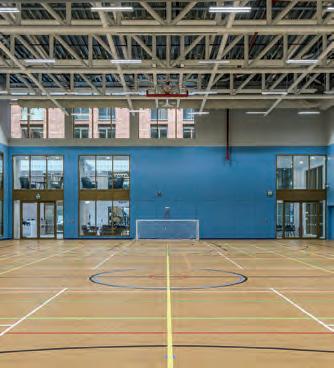
development. It would also play a part in the Mayor of London’s commitment to greener spaces.
In a statement, the club said: “With the Lions aiming to re-enter top European competition and the mayor’s desire to bring more NBA games and activities to the capital, a new stadium would put London in a prime position, helping to make the city a premier global destination for basketball.”
The plans follow a recent commitment from the mayor to set up a first-of-its-kind basketball taskforce to grow the game in London.
Sport England has revealed 53 areas in which it will look to tackle regional inequalities in activity levels. Each place is in the top 10% of the country for inactivity, social need, deprivation and health inequality at a national level.
The 53 areas will be the first to benefit from the new Place Partnerships programme, joining 12 areas that were included in local delivery pilots to test the new programme. In total, the programme will distribute around £250m towards battling physical inactivity in areas deemed to be in the greatest need. Sport England will announce an additional 27 Place Partnerships later in 2025. The programme’s coverage across England will grow further as Sport England phases in its Place Universal Offer, working with all 43 Active Partnerships.
Sport England chair, Chris Boardman, said: “Health inequalities have become embedded in our communities, with rising inactivity amongst children a particular worry.
One of Belfast’s largest purposebuilt student accommodations, Nelson Place has benefitted from a premium flooring solution supplied by SAPCA member, Gerflor.
The 774-bedroom city centre campus services Ulster University and Student Roost and includes high-quality accommodation, with
ground floor amenities elevated to incorporate a mezzanine level. The building also includes a state-of-the-art, four-court sports hall, gym, fitness suite, and training facilities. Central to the success of the sports and fitness project was the specification of 2,600sq m of flooring products supplied by Gerflor.
Chance to Shine has partnered with Sport England’s Moving Communities – a platform dedicated to providing data and actionable insight on sport and physical activity. The move is part of the national cricket charity’s drive to improve access to the sport in under-served communities across the UK.
The partnership will support Chance to Shine to target its cricket programmes more effectively, bringing the sport to young people in marginalised communities. Through Moving Communities, Chance to Shine will gain real-time insights into socio-economic factors, school demographics, and community needs, allowing them to strategically expand their reach and increase participation in under-served areas.
The platform will also aim to help the charity to tackle the growing inequalities in access to sport, by aligning itself to a place-based

approach. The approach will help ensure resources are focused where they can have the greatest impact. Historically, cricket has often been associated with independent schools and wealthier club environments.
When Chance to Shine was founded, cricket had largely
disappeared from state schools, limiting access for many children. Over the past two decades, the charity has challenged this perception, demonstrating that cricket can be played by anyone, anywhere – from school playgrounds to community centres.
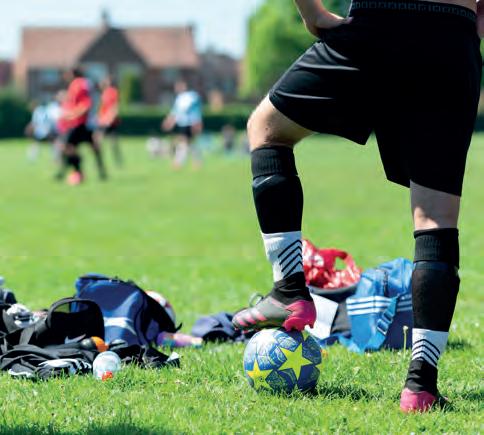
The government has confirmed plans to remove Sport England from the group of statutory consultees who provide feedback and views in planning decisions. Statutory consultees are official stakeholders legally required to provide advice on planning decisions to ensure developments can consider essential environmental, transport, heritage and safety elements.
The planned move is part of the government’s reforms to overhaul the planning system which are aimed at “putting growth at the heart of the statutory consultee system”. Under the plans, organisations such as Sport England, Theatres Trust and The Gardens Trust will no longer be required to input on planning decisions. The scope of other statutory consultees will be narrowed to focus on heritage, safety and environmental protection.












schmitzfoam.com/pro

















Richard Shaw CEO SAPCA
Ihave something to confess – I’ve started playing padel and I’ve noticed that how I talk about the sport has changed. It has been amazing to witness the birth of a new sport and see it develop over the past few years. Often the narrative, however, (at least in my own head), has been cautious. Seeing the data showing the oversupply in Scandinavia, witnessing the problems caused by poorly-designed courts and being fully aware of the difficulties that any emerging product or sector faces, have all added up to a concern that this was a fad that was going to disappear as quickly as it arrived.
What changed my mind was experiencing first-hand how accessible and forgiving the game was! Playing with three people – two of whom hadn’t played much tennis before – it took only minutes before we were having rallies.
Was the standard great? No, but I’m not sure we would have reached anywhere near the same level had we be playing tennis. The forgiving nature of the court, combined with the quick turnaround in gameplay, meant that the hour flew by and we’d all had a good run around.
Far quicker than golf, far easier than tennis and with less impact on joints than football, for four middle-aged blokes it’s a great way to get some exercise.
However (yes, there is a but). Would it have been the same, wholly positive experience if we had turned up to a shaky, temporary padel court with a slippery surface and glass panels that rattled? Would my view of padel be different then? Undoubtedly.
The danger for padel is that, in the race to provide courts, corners can be cut. Cost and speed of construction, rather than quality and longevity, can become the driving force.

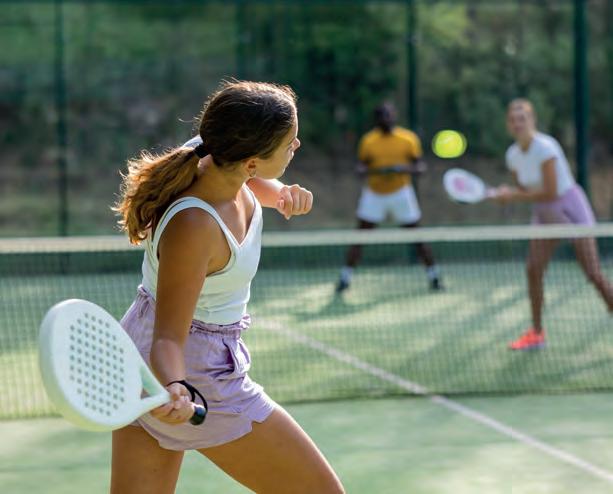
Anyone stepping on a padel court for the first time isn’t just judging that court – they’re assessing the sport as a whole
The problem is, first impressions count. They colour our opinion on things. A bad experience at a particular restaurant chain? We won’t visit again. The same for padel. Anyone stepping on a padel court for the very first time isn’t merely judging the quality of that particular court –they are assessing the sport as a whole. A great experience can turn into a lifetime habit. A bad one can deter them from ever trying padel again. Therefore, the long-term sustainability of padel, I believe, rests in those first impressions we provide. The best way to deliver a great one is to ensure we design, build and maintain courts to the highest standards.

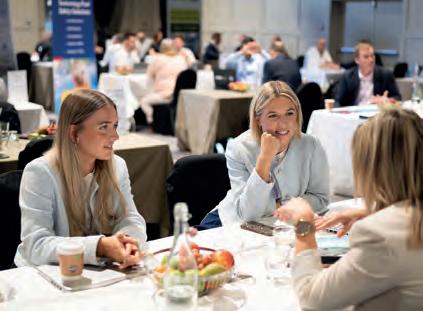

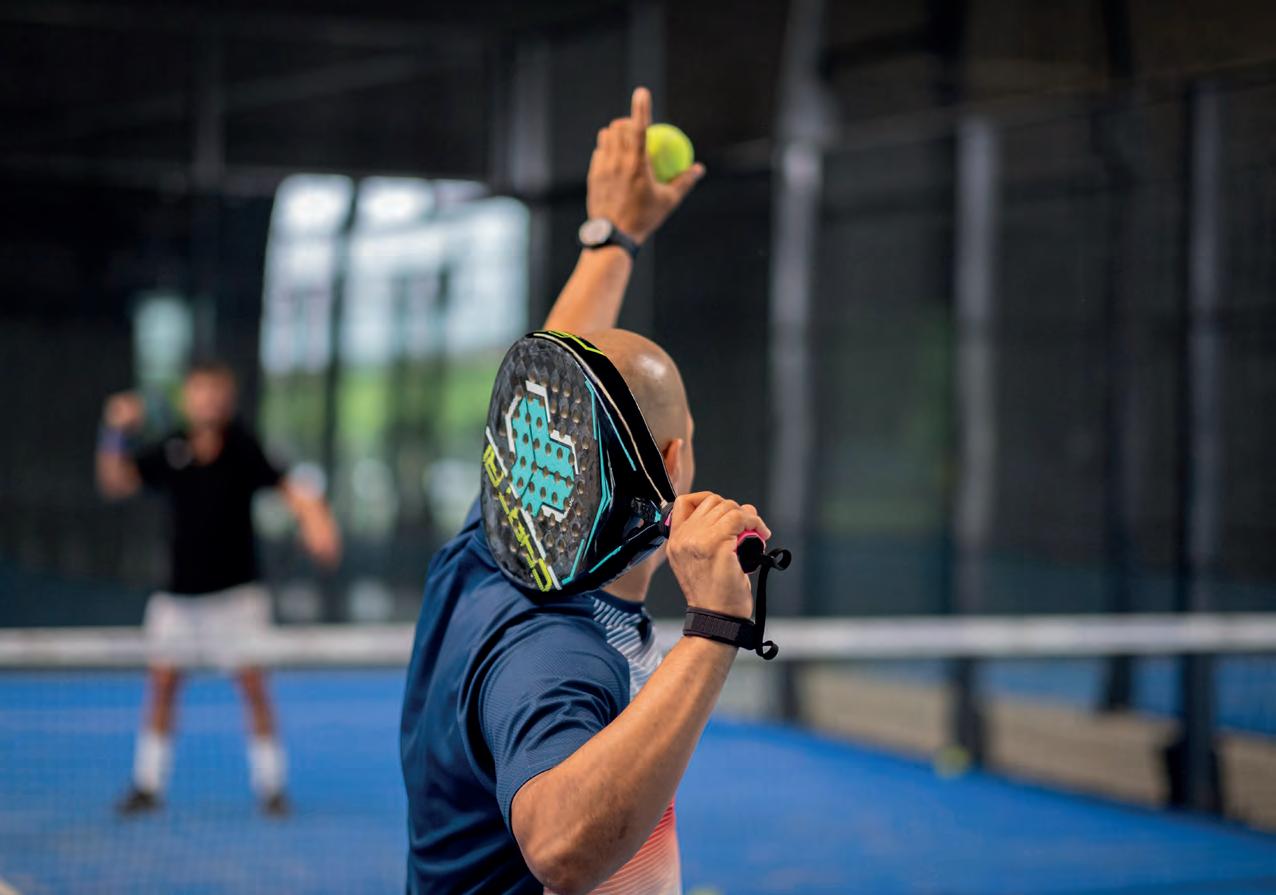

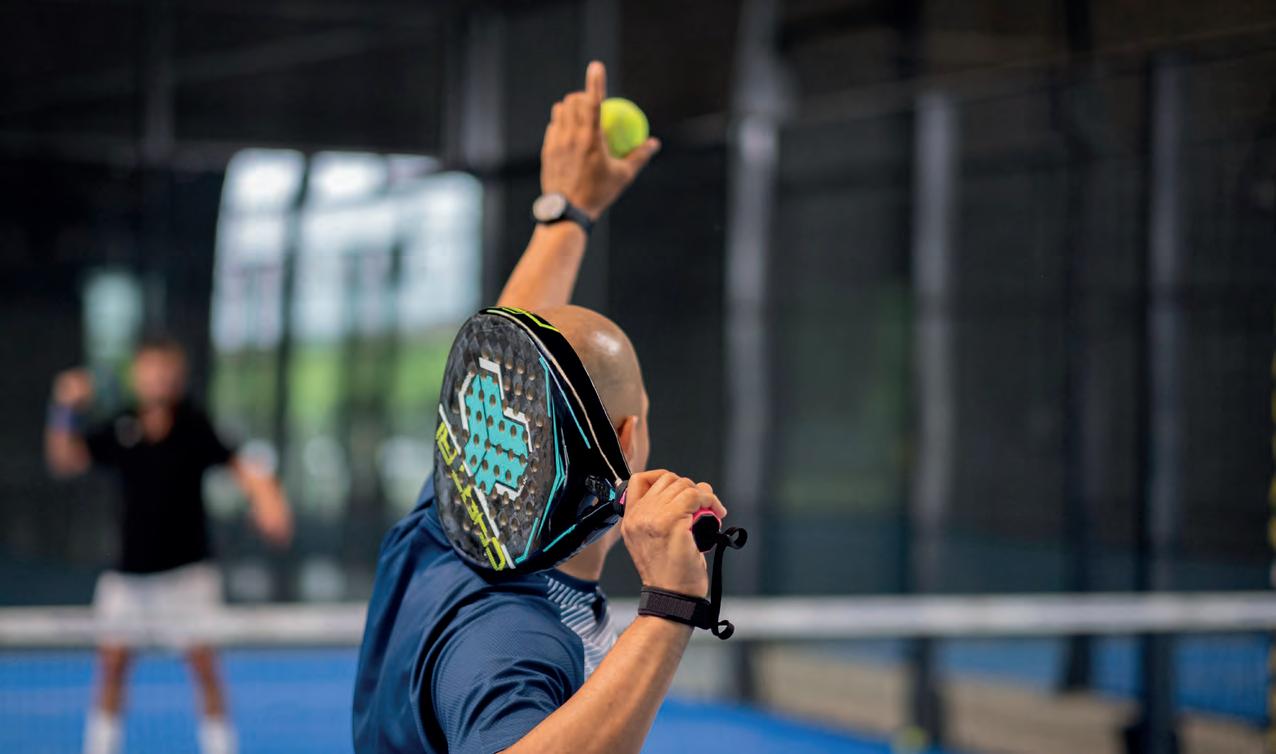






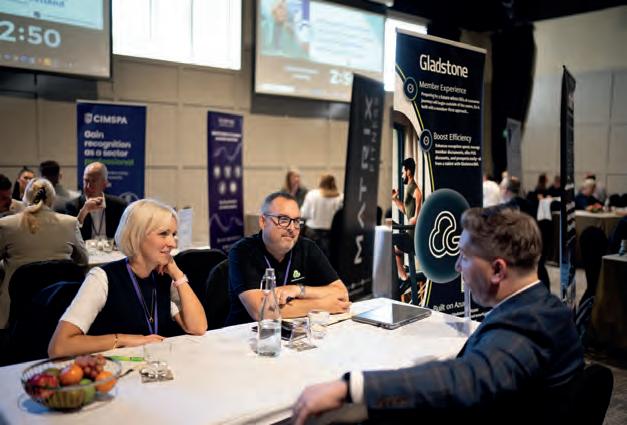


Lisa Wainwright CEO Sport and Recreation Alliance
In November last year the Department for Culture, Media & Sport Select Committee announced an Inquiry into community and school sport. The purpose behind the Inquiry is to take a deep dive into examining the overall health of sport in both our local communities and schools but just as importantly, whether more can be done to grow sporting opportunities for all.
As the CEO for the Sport and Recreation Alliance, I was delighted to be invited by the Committee to give evidence to the Inquiry in Parliament. Not only was it a great opportunity to present solutions to some of the questions being posed by the Committee, especially on how to improve funding streams for our members, support our volunteers, protect our green and blue spaces and reduce the tax and regulatory burden on the sector, but in doing so, highlighting some of the excellent work of our members already taking place in schools and communities across the country. For example, these include - but are certainly not limited to - the England and Wales Cricket Board’s work with partners in developing the hugely successful Bradford Park Avenue Cricket Dome facility and Swim England’s excellent Learn to Swim programme.
On whether more could and should be done to grow sporting opportunities for all, the answer is a resounding yes. We already know the enormous economic and social value of the sector and the contribution it can make in driving economic growth and reducing pressure on the NHS. But research shows that the UK is a relatively inactive nation, ranking 11 out of 15 among comparable European nations. As I explained to the Committee, by matching the best performing nations, we could generate a further £1bn in healthcare savings, £3.5bn in GDP and £70bn in wellbeing benefits.
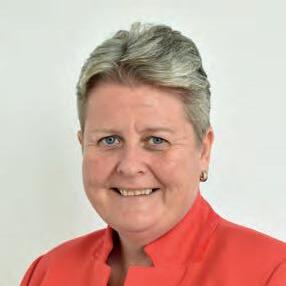

By matching the best-performing nations, we could generate £1bn in healthcare savings, £3.5bn in GDP, and £70bn in wellbeing benefits
To do so, and in a final point I made to the Committee, we need the Government to urgently bring forward a bold and ambitious strategy for the sector, leveraging the policy levers across all Government departments in Whitehall while ensuring that in the Spending Review, due to conclude in June, core funding is protected through the Department for Culture, Media & Sport and arms-length bodies.
The Alliance will continue to press the best possible case for the sector – and our members – within Government and beyond to help make sure we foster a more active, healthier nation and in doing so, making it easier for everyone –regardless of age or background – to participate in sport, recreation, dance and physical activity.











UK BUILT CORE GYM STRENGTH EQUIPMENT, REMANUFACTURED KIT AND CUSTOMISATION OPTIONS. NATIONWIDE COVERAGE, FULL SERVICE CONTRACTS TO ONE OFF VISITS. FROM ELECTRICAL, UPHOLSTERY, REPAIRS AND GENERAL ASSET MANAGEMENT.
RELOCATION AND REMOVAL OF PART OR FULL FACILITY. TRADE IN ANY FITNESS KIT.

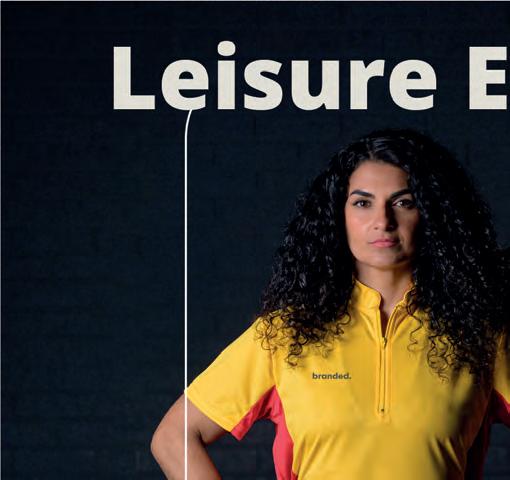
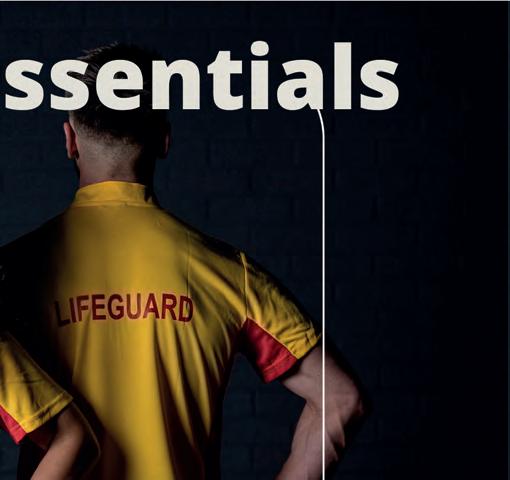


According to Leisure DB data, gym membership is higher than ever, with one in four now saying that health and wellbeing is their number one concern. With 80% of gym members visiting the gym at least twice a week, this poses a huge opportunity to engage each customer with additional sales opportunities
When at the gym, 71% claim to buy food and drink, and energy drinks are a key choice when there.
In fact, energy drinks are the #2 most bought product at gyms, behind water. Find out more about why functional products are key to increased sales revenue for gyms.
Increasingly, consumers are looking for products with added benefits to help them maintain a healthy, active lifestyle. So, it’s no surprise that ‘functional products’ are a fast-growing category, now worth £4bn, with sales up 23% in the last 12 months.
Despite the emergence of other functional beverages and supplements, sports and energy drinks continue to drive 63% of functional growth, so it is the most important category to get right.

Delivering both a physical and mental boost, energy drinks provide essential fuel for many throughout their workout journey.
However, with most energy drink sales taking place before gym-goers step foot in their local workout venue, either as part of the weekly shop or on their way, this presents a huge opportunity to generate sales and drive incremental revenue during their visit.
Granted, this isn’t news, and many gyms already provide a range of energy products on-site. However, current gym ranges are not meeting consumer demand, and many venues devote too much space to less profitable brands. As the number 1 energy drink, Red Bull holds double the market share of the combined brands stocked in this space, so

Functional products are a fast-growing category, now worth £4bn, with sales up +23% in the last 12 months
dedicating more of the chiller to recognisable brands, will help drive additional sales. Red Bull is the first brand consumers think of when it comes to energy, as well as being the most relevant and often used caffeinated brand for sports and fitness, so people expect to be able to find it.
The perfect serve
Getting the caffeine level right for exercise, is key, with 88% of gym-goers stating that caffeine content is important to them and the majority (58%) wanting under 100mg for fitness. with many ‘fitness’ Energy Drinks containing almost
double this amount, brands that offer under 100mg are more appealing to gym-goers.
For more information about Red Bull and driving Energy sales in your venue, please contact gympartners.smb@redbull.com

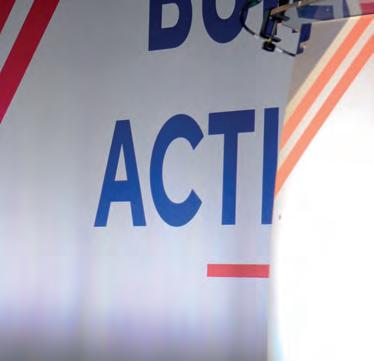
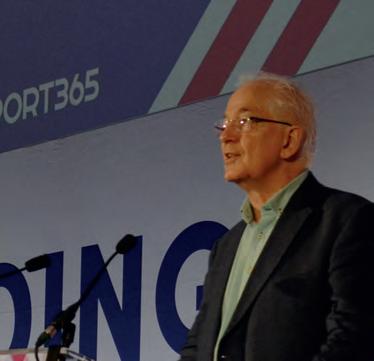

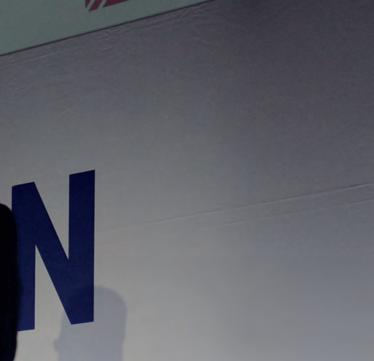
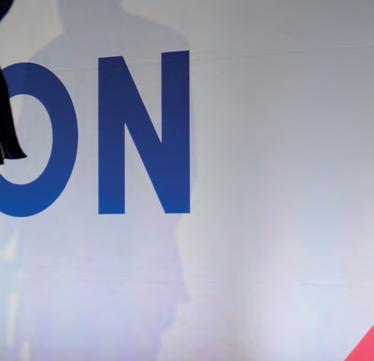
Cricket legend, David Gower OBE, opened the conference with a keynote on leadership
Sustainability and sports facility funding were among the topics that featured heavily at this year’s SAPCA Annual Conference, held in February
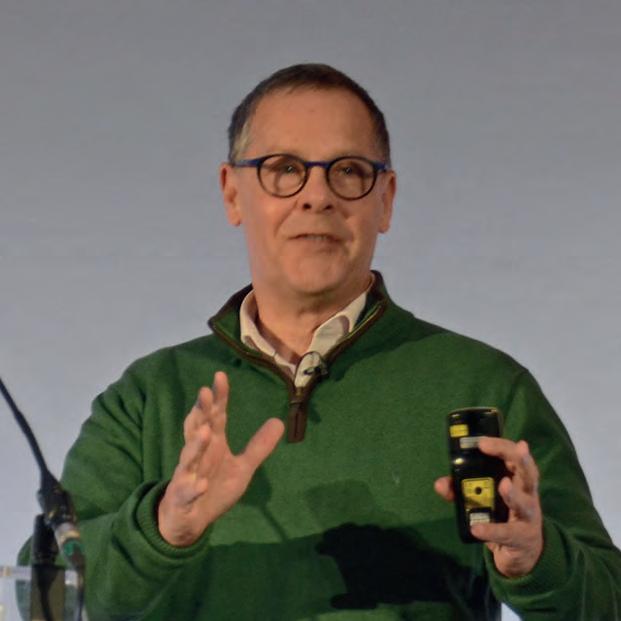
Andy Reed OBE offered his insights into the Labour government’s priorities
The SAPCA Annual Conference took place on Thursday 27 February 2025 at Emirates Old Trafford in Manchester. Featuring an educational programme of speakers supported by an exhibition showcasing the products and services of SAPCA members, the conference is one of the sports and play construction sector’s main events of the year.
The keynote speech at this year’s conference was delivered by former England cricket captain and commentator, David Gower OBE. Offering his views on leadership, Gower compared the role and responsibilities of elite sports captains
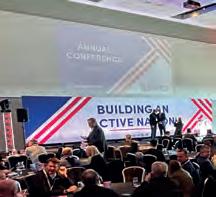
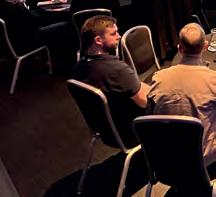
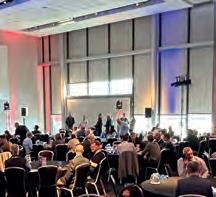


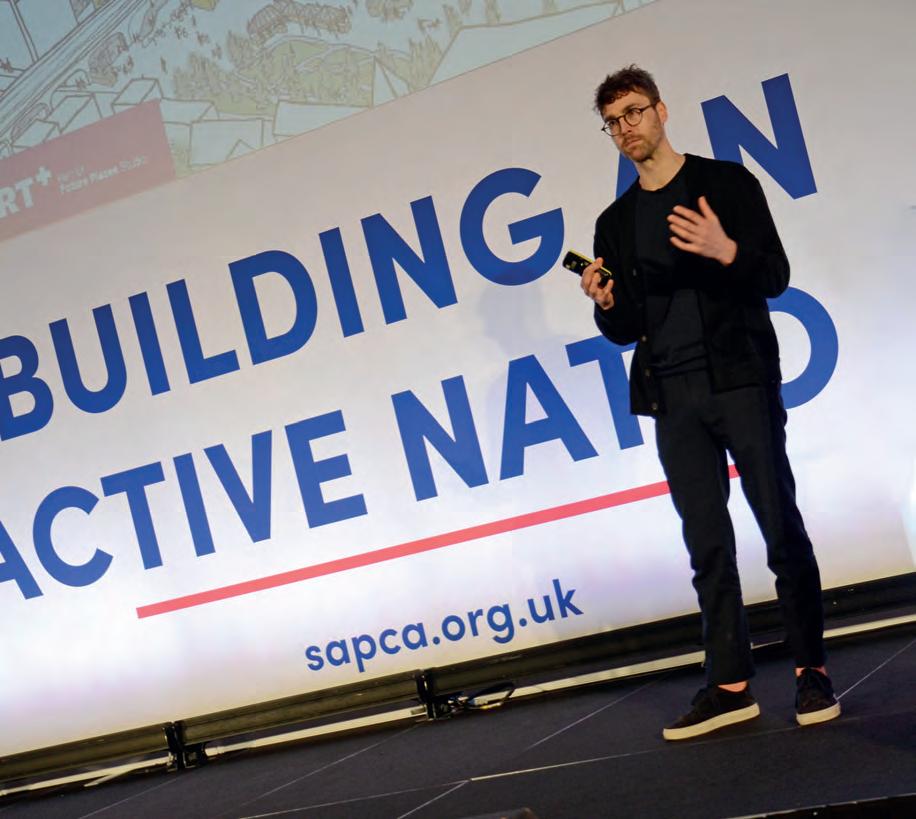



to those of business leaders. He did this by injecting his own experiences into the talk – with more than a sprinkling of humour and wit.
“Just as in business leadership, leading a sports team out as captain often means signing up to targets and goals which can then be used to measure success,” Gower said.
“As a leader you accept that there will be challenges and obstacles standing in your way to that success. It is then down to you to get the best out of your team and help them to tackle those challenges so that the entire team can benefit.
“One such challenge I had to deal with, as England captain in the 1980s, was to try and motivate my team to face the tremendous West Indies fast bowling attack. I say motivate – keeping batsmen alive was probably more accurate.”
Gower’s keynote speech was followed by Andy Reed OBE, founder of Sports Think Tank and former Labour MP, offering the inside track on the Labour Government’s plans for sport and play. According to Reed, the current government was very aware of the importance of physical activity –and especially how the UK population was trailing behind its European peers in activity levels.
“Prior to the election last summer, the National Sector Partners Group (NSPG) for sport did a good job in lobbying the parties,” Reed said.
“They highlighted how the UK ranks 12th out of 15 comparable European nations for levels of physical activity. This was accompanied by a call on the main political parties and their leaders to pledge to make the UK the most active nation in Europe.
“They asked for a commitment from all parties to champion growth in the sector and support crossdepartmental working to realise savings of up to £1 billion in healthcare spending linked to inactivity.
“The difficulty faced by the government is, of course, that while there is now recognition of the importance of physical activity across several departments, there is limited funding available.”
After Reed, it was time for Sport England chair, Chris Boardman CBE, to take to the stage. Boardman called on the sector to “be on the right side of history” when it comes to environmental sustainability. You can read more about Boardman’s speech on page XX.
Delegates also heard from Owen Faunt & Matt Bonney from GCP Architects – who offered an architect’s viewpoint to Mandatory Biodiversity Net Gain (BNG) – and Jack Sallabank, Founding Director of Sport+.
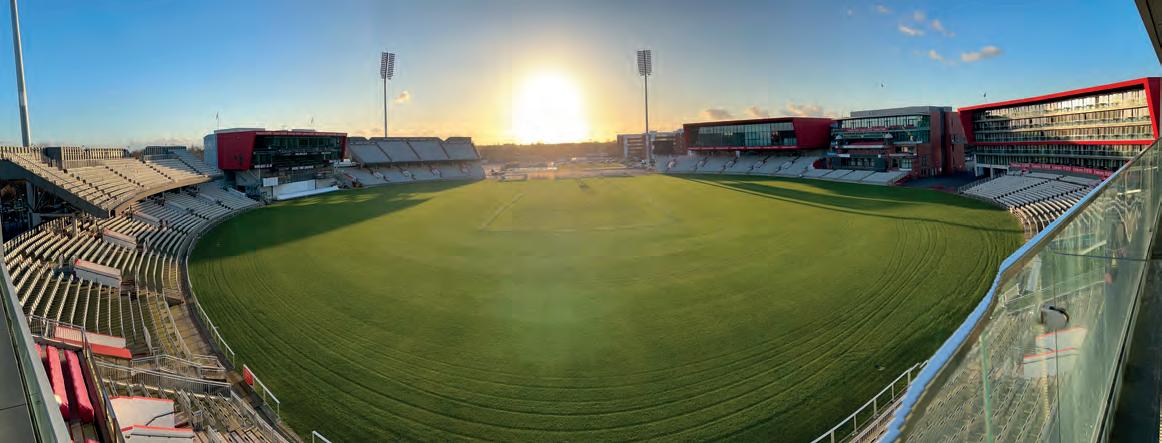
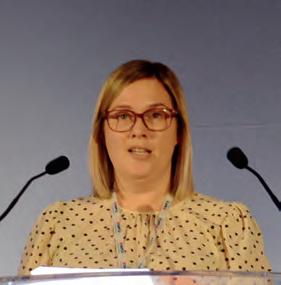
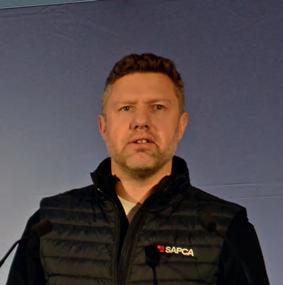
To close the event, Eugene Minogue offered delegates an update on the state of the play sector. He said that, while play had become a somewhat forgotten topic in government during the past 15 or so years – judging by the dismal track record of past governments – it was very much back on the item list with the current one.
He highlighted a debate led by Tom Hayes MP (the first on play in the past 17 years) and the positive moves towards the Labour government adopting Play Sufficiency Legislation.
“A lot has happened since I spoke at the SAPCA Conference last year,” Minogue said, referencing his appearance at the 2024 edition of the event. “We’ve had a new government and – while things haven’t changed radically yet – we are beginning to see a positive shift.
“Play England and sector partners stand ready to support the government in addressing the decline in children’s play by developing a new, cross departmental national play strategy. This strategy would ensure that play sufficiency legislation is brought into meaningful practice, and that England becomes a child-friendly country where all children have freedom to play at home, at school, in parks and public spaces.”
He added that there is plenty to do to reverse the decline in play, reminding delegates of the stark data which shows how the time spent
playing outdoors has declined by 50% in a generation – and that spending on play facilities in England fell by 44% between 2017-18 and 2020-21.
“Play is important,” he said. ”And it’s time that we give children their childhood back.”
The Conference was followed by the SAPCA Awards Dinner, completing a day which offered delegates plenty of networking opportunities. You can read more about the awards and the winners on page XX.
This year’s edition was the first to be held at Emirates Old Trafford and the third different venue for the SAPCA Conference in three years – following St George’s Park (2023) and Leicester TIgers’ Mattioli Woods Welford Road Stadium (2024). According to Richard Shaw, work is already underway to confirm the details – including the date and venue – of next year’s conference.
“Manchester was a great venue for us and the feedback from delegates has been great,” Shaw said. “The conference programme offered some great food for thought across some key topics. It was also great to have Chris Boardman join us and to offer some insight into Sport England’s work around sustainability.
“We are now finalising details for next season’s Conference, so watch this space!”







The winners of the SAPCA Awards 2025 have been revealed at a gala dinner held at the Emirates Old Tra ord in Manchester. Now in their 10th year, the awards celebrate the achievements of members of the Sports and Play Construction Association (SAPCA)
Ever since their launch in 2015, the annual SAPCA Awards have grown in scale, importance and recognition. The awards are a way of showcasing the successes and achievements of SAPCA members to those in the industry.
The awards recognise facility projects, products, services and people which show the wide range of innovation, technical excellence and reliability held across the SAPCA membership. While SAPCA’s core mission is focused on the technical standards and quality of construction projects, the awards
also celebrate the positive impact that the facilities created by SAPCA members make in communities across the UK. As a result, social value has become a key criteria considered by the panel of judges.
The 2025 edition of the awards saw more than 40 entries being submitted across the six categories. In addition to the six winners, there were eight finalists who were recognised for their entries. Former SAPCA Chair, Eric Page, was also given a lifetime achievement award during a gala dinner attended by nearly 200 people.

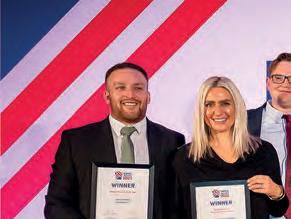





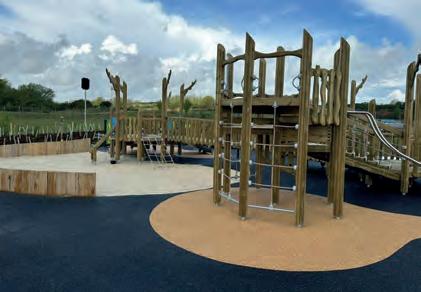


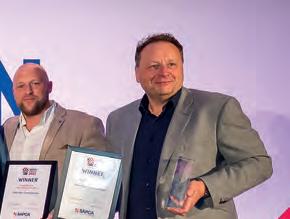


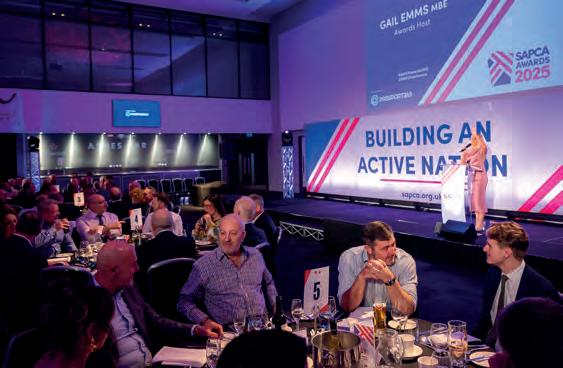
Small Sports or Play Project of the Year (under £350k)
WINNER: Jupiter Play and Leisure – inclusive play area at Stanway Community Centre, Colchester
FINALIST: Portico Sport – Club de Padel – a four-court padel club development in Deansgate in the centre of Manchester
Jupiter Play and Leisure won the SAPCA Award 2025 for Small Project of the Year for its work on an inclusive playground at Stanway Lakelands Community Centre, Colchester. Jupiter was commissioned to design, supply and install a play facility aimed at encouraging children of all abilities to be able to interact and play together.
The company designed and created a bespoke unit to provide a range of opportunities for different kinds of play, with sensory play being a priority. The colour palette was kept deliberately neutral, with gentle pops of blue helping connect to their community centre.
This allows neurodiverse children to not get overstimulated and be able to spend more time engaging with the play. Two outdoor “rooms” were created to allow children to rest and retreat from the main play without having to step away altogether.
WINNER: Louis Keeley, Senior Consultant, Labosport
FINALIST: Adam Collier, Head of Sales, Fordingbridge
As well as managing an extensive portfolio of clients simultaneously – and delivering outstanding results while maintaining a high level of professionalism and reliability – Louis is deeply committed to the growth and development of junior consultants within Labosport. He generously shares his expertise and provides invaluable mentorship to the next generation of industry professionals. His reputation as a trusted and dependable source of knowledge extends across the sector, where colleagues and clients alike recognise his commitment to advancing best practices and the technical knowledge within the industry. His daily contributions have been deemed to go above and beyond, not only supporting his immediate team but also positively influencing the industry as a whole.







WINNER: Ryan Latto, Field Technician, Sports Labs





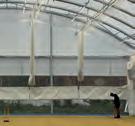

the Year (over £350k)



WINNER: Total-Play and Fordingbridge – a 10-lane “cricket shield” At Bradford Park Avenue Cricket Club
FINALIST: Dynamik Sport Surfaces – Coronation Square, the largest multi-sport sports flooring and acoustic walling project in the UK
FINALIST: Jupiter Play and Leisure – Skypark Interactive play area at Butlins Minehead
Total-Play partnered with fellow SAPCA member, Fordingbridge, to deliver a £1.5million, 10-bay all-weather cricket dome at Bradford Park Avenue. The facility – the first of its kind – was funded by the England and Wales Cricket Board (ECB) in partnership with City of Bradford Metropolitan District Council, and is set to provide cricket sessions for 10,000 people from the local community each year.
The building features two 40mx20m covered domes with a lighting system, elite cricket surface and a retractable netting system enabling both training and matchplay, replicating the features of an elite indoor facility. It will enable local cricketers to play all year round and in any weather.
The ‘Cricket Shield’ bridges the gap between a traditional outdoor system and an indoor centre, protecting players from wet and windy conditions while encouraging air flow and maintaining a comfortable temperature.
FINALIST: Lewis Turnbull, Apprentice Electrician, Halliday Lighting
FINALIST: Teddy Edwards, Project Co-ordinator, JHP Electrical Services
Ryan Latto won the SAPCA Young Person of the Year Award in recognition of his outstanding contributions and exceptional growth within Sports Labs over the past eight years.
Since joining the Sports Labs, Ryan has progressed into the role of Field Supervisor. He has travelled to more than 40 countries and has tested 600+ sports surfaces, showcasing not only his technical skills but also his adaptability and global perspective. His extensive experience allows him to provide invaluable support to Sports Labs’ global team of technicians, ensuring they are equipped with the knowledge and resources necessary for success.

Since September 2024, Ryan has also provided training to staff from six different countries across three continents. Eric O’Donnell, CEO of Sports Labs, said: “Ryan has consistently demonstrated remarkable dedication and expertise. His journey has been marked by a commitment to excellence and a passion for his work, evidenced by his status as an accredited technician for the entirety of his tenure.”
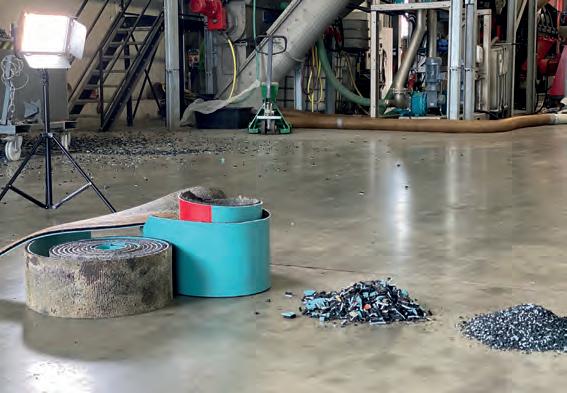
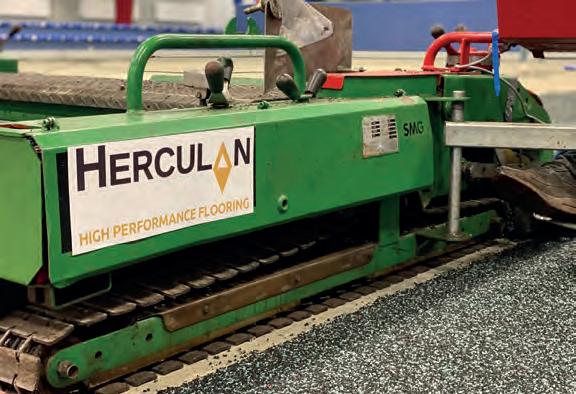
WINNER: Herculan – a 100% recycled indoor polyurethane sports floor solution
FINALIST: Polytan Sports UK / McArdle – Rekortan Gel GT, a non-porous athletics track surface
Herculan Full Circle is a 100% recycled Indoor polyurethane (PU) sports floor and one of the first of its kind. While companies are increasingly recycling artificial turf and athletic tracks, indoor sports floors tend to be forgotten about – and often end up in landfill. Herculan’s Full Circle looks to provide a solution to this issue by reusing the materials and providing an entirely new product without compromising on its performance.
The process to create Full Circle starts with an old PU floor being removed from the sub-base, ground down to a crumb consistency and reinstated as the cushion layer. The new base layer is then sealed, recoated, line marked and ready to be used again. The whole process can be repeated again and again.
Based on the size of an average sports hall, this process avoids approximately 6 - 7 tons of waste going to landfill, because the granulation process is carried out on site and combined with the insitu installation means a massive reduction in the shipping of the base layer materials.
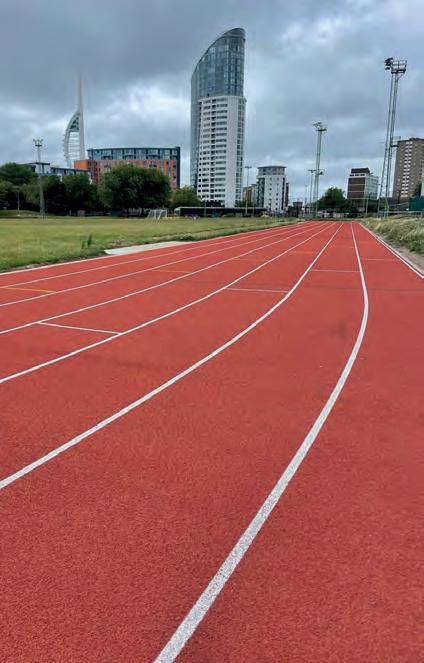
WINNER: Polytan Sports UK / McArdle – Rekortan Gel GT, a non-porous athletics track surface
FINALIST: Carbon8 Lighting / JB Corrie –retractable sports play lighting tower
Rekortan Gel GT by Polytan won the Product of the Year category at this year’s SAPCA Awards. Rekortan Gel GT is a non-porous athletics track surface made using renewable raw materials. Certified by World Athletics for highperformance athletics at the competitive level, the gel-based PU technology provides optimal, stable shock absorption, enabling high acceleration, even at extreme temperatures.
Thanks to the gel properties of the material, which is added in-situ, any irregularities are levelled out during installation, resulting in a completely level running track surface. The tested covering layer, which consists of a self-levelling PU coating interspersed with EPDM granules, guarantees high spike resistance and excellent colour stability. Green Technology and high performance are no longer mutually exclusive.
The first full track installation in the UK using the new product was at HMS Temeraire in Portsmouth. Covering a 7-lane, 400m track, the innovative surface was made of 60% renewable materials.

Sport England chair, Chris Boardman, has called on the sports and physical activity sector to be “on the right side of history” when it comes to sustainability. Speaking at the SAPCA Annual Conference, Boardman also recognised the importance of 3G pitches, but that there remain issues around recycling and the containment of microplastics

Chris Boardman has called for the sports and physical activity sector to “take action we can be proud of” on environmental sustainability. The Sport England chair made the call during the SAPCA Annual Conference in Manchester on 27 February.
Boardman was one of the keynote speakers at the conference, held at Emirates Old Trafford.
“All of us here have a vital role in making our sector sustainable,” he told the 200 delegates at the event.
“We know it’s not an easy task, and sadly 2025 has seen our headwinds strengthen. This year brings a raft of new reports and research highlighting the growing threat, and of course sport is being impacted along with everyone else.”
In his speech, Boardman offered his insights into Sport England’s future direction of travel and the organisation’s Every Move sustainability strategy, which was launched in May 2024. He also outlined the challenges posed to sport by climate change.

“Sport England’s mission is to get more people active and we can’t do that if pitches are unusable, or you can’t reach them because of flooding or it’s too hot to hold events,” he said. “So this is personal for us and to our stakeholders for very pragmatic reasons.
“People who are active are much more likely to be happy and healthy. And healthy people are what the health care system desperately needs. Active people already relieve some of the NHS burden, preventing 1.3 million cases of depression, 600,000 of diabetes and 57,000 of the UK’s leading cause of death – dementia – saving billions a year.

“We can also be the link here. Which is what led Sport England to publish our first-ever environmental sustainability strategy, Every Move, last year. In developing the strategy, we talked to the sector – many of you – and participants.
“We found three in five adults had at some point been prevented from taking part in a sport or being active by extreme weather. Meanwhile, four in 10 sports organisations had experienced weather-related disruptions to their activities.
“The FA alone estimated that 120,000 football matches are being lost annually due to adverse weather conditions. That’s the equivalent of seven million minutes of community football lost in one year alone.”


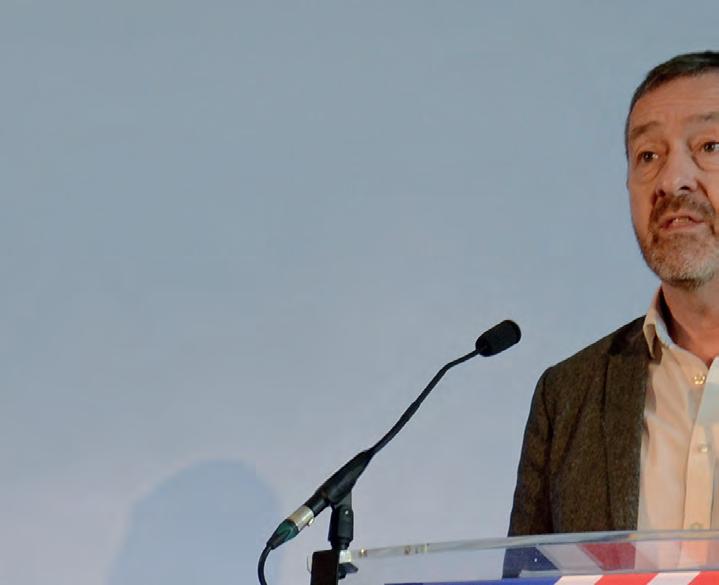

Let’s harness our commitment to innovation in the service of something even bigger
Boardman acknowledged that launching a strategy “wasn’t difficult”, but that delivering one was. That in mind, he said Sport England has already embarked on a number of actions to ensure the strategy will have a real-life impact. These actions have included the organisation reviewing its own practices and operations.
“We own three big national sports centres: Bisham Abbey, Lilleshall and Plas Y Brenin in Wales,” he said.
“We are working alongside their operators to insulate buildings and invest in new heating technologies, to make them energy efficient and ultimately, sustainable. We are being deliberate about the equipment and food we buy, favouring sustainable suppliers, and we are actively increasing our understanding of biodiversity to maximise our ‘ecosystem service’, such as creating places to hold excess rainfall.”
He also mentioned how the government was in the middle of investing £80 million to improve the energy efficiency of public leisure facilities with pools – which have, historically, been notorious for their high energy use. The actions being enabled

by the investments range from solar power installations to the fitting of air handling units.
“Each and every one of the 570 interventions enabled by the funding are improving the energy efficiency of a facility and, crucially right now, reducing running costs,” Boardman said.
One of the big focuses of the Every Move strategy is to promote the move to a circular economy.
Boardman said this is an area in which Sport England would be using its spending power to help move things forward – such as by promoting and enabling the recycling and redistribution of sports clothing and equipment to benefit grassroots clubs and participants most in need.

During his speech, Boardman stressed how important it was for everyone in the sector to become “part of the solution” – and applauded those who were already “joining the movement”.
He highlighted the Football Association (FA) and its Greener Game programme, which it is running in partnership with energy giant E.ON. The initiative supports grassroots clubs to


decarbonise, reduce their energy needs and cut their bills and environmental impact.
He also mentioned how the Premier League supports clubs to develop their infrastructure sustainably through the LED Floodlight Fund, which provides grants to clubs throughout the National League System and Women’s Football Pyramid to install energy-efficient floodlights, helping to reduce their energy costs and carbon footprint.
Another area in which Boardman said that great work has been done is limiting the use of single-use plastics.
“For example, The Oval cricket ground has become completely plastic-free,” he said. “The venue has banned the use of plastic straws, introduced compostable coffee cups, and has phased out the use of plastic bags in the club shop.
“Elsewhere, The Wimbledon Championships has reduced the number of single-use plastic water bottles by more than half a million over the last six years. They’ve proved it’s doable and, in doing so, created a positive pressure on others to follow suit.”
“We are not trying to sell something unpopular here either.






60% of British adults say they will try to cut down the amount of plastic they use over the next 12 months; they just need to be given a way to join in.”










60% of British adults say they will try to cut down the amount we
Minimising the use of plastics in operations is something the sports sector is increasingly doing




















While on the topic of plastics, Boardman then turned his attention to 3G pitches, describing them as a “difficult issue”.



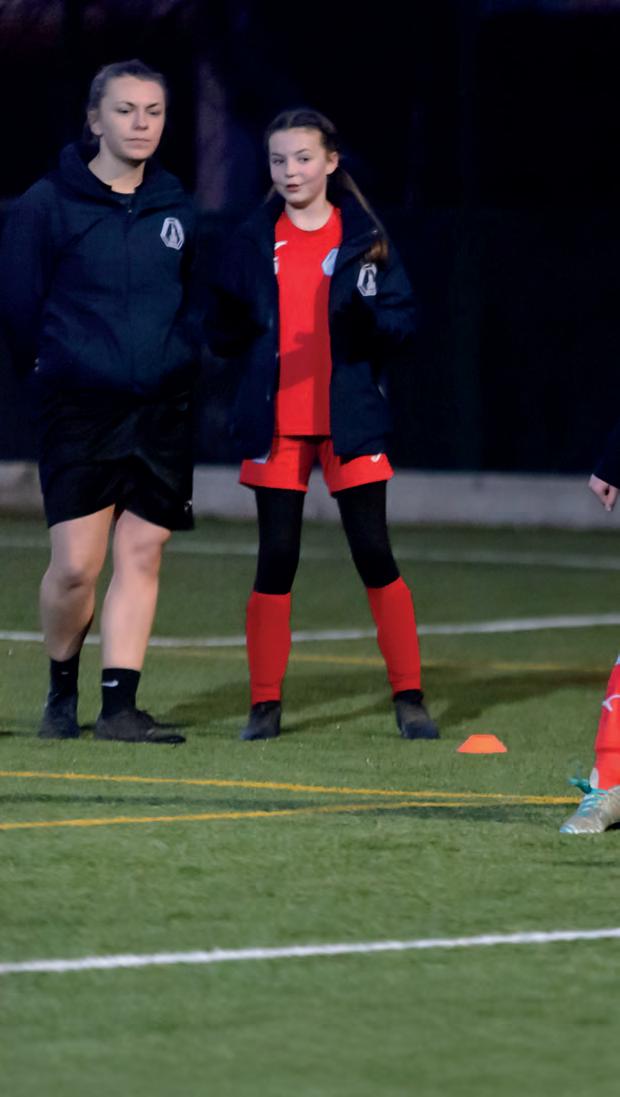


“If we are going to be authentic in talking about plastics, we do have to discuss artificial grass pitches, a topic that is one of the most difficult in Sport England’s in-tray,” he said.

“From a sporting point of view, artificial grass pitches have become an integral part of community sport because as far as activity is concerned, they’re brilliant. They provide a reliable, year-round playing surface, regardless of the weather.
“A properly maintained artificial grass pitch can sustain up to 80 hours of use a week, or 1,400 playing opportunities. Compare that to a natural grass pitch, which can sustain just six hours a week and around 100 playing opportunities.
That kind of difference is hard to ignore.
“This reliability of service and availability, often in areas of greater need, is incredibly attractive, especially as we’re now much more aware of what the burden of inactivity costs us. People who are already
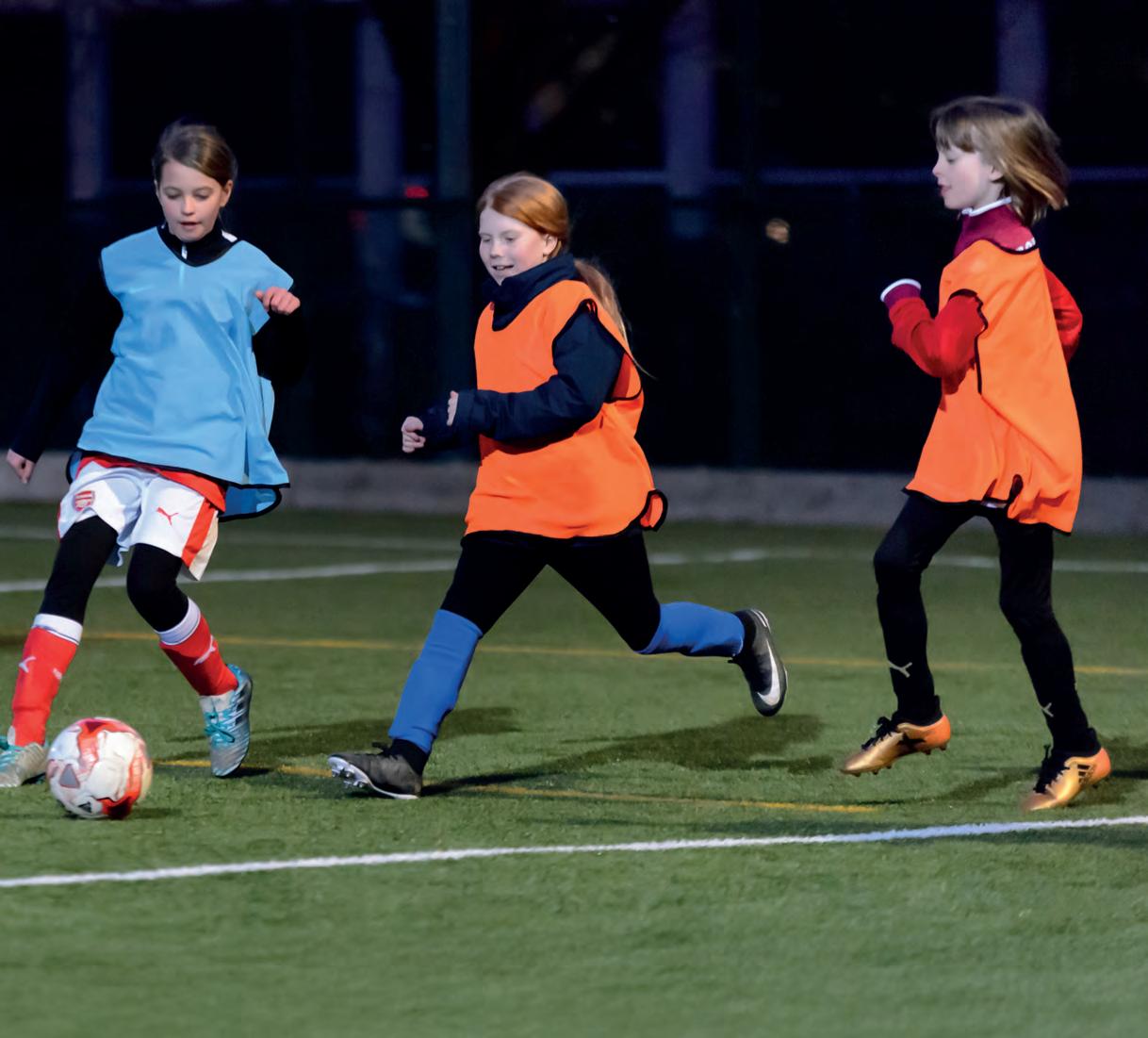
active save our country £540 million on reduced GP visits and £780 million every year on reduced mental health service use. Artificial pitches play a significant part in realising those benefits. In fact, our current stock of 3G pitches across England is estimated to be worth almost £500 million per year in social value.
“But we can’t shy away from the fact that these wonderful health benefits are producing negative costs downstream. The breakdown of plastic grass, and the roughly 50 tonnes of rubber infill each pitch currently requires, are producing microplastics.”
Boardman then outlined two actions that he would like to see from the sports and play sector.
“If we are to continue using artificial pitches, we must, in the short term, get very good at containment,” he said. “At the same time, we need to vastly improve end-of-life recycling.
Up to 500 pitches reach the end of their life every year – two to three times the current UK capacity for
All of us here have a vital role in making our sector sustainable
recycling at the single venue capable of doing it.
“If we don’t change, history will judge us and rightly so. I and Sport England are determined to be on the right side of it.”
Boardman then finished his speech with a clarion call for all sports.
“From wireless gears in cycling, super shoes and faster Mondo tracks in athletics, to the widespread use of wearable tech across all levels of sport, the sector has long been at the very forefront of innovation,”
“Let’s harness that thirst for improvement and commitment to innovation in the service of something even bigger. Let’s take action we can be proud of.”
Fitness equipment giant, Freemotion, is going the extra yard to help the US’s top skiers and snowboarders hit the slopes with confidence – while also providing top quality training content for athletes everywhere
In late 2023, Freemotion’s parent company, global fitness tech giant iFIT, inked a partnership with the U.S. Ski & Snowboard (the national governing body for Olympic and Paralympic skiing and snowboarding). The project included a complete re-design of the USANA Center of Excellence’s gym in Park City, Utah, with new Freemotion cardio and strength equipment, as well as select NordicTrack cardio machines, for nearly 250 elite athletes and staff.
“This partnership is a natural fit because both iFIT and U.S. Ski & Snowboard are deeply committed to excellence, innovation and the progression of athletic performance,” said Mark Watterson, iFIT Commercial CEO. “For iFIT, this collaboration aligns with our purpose to serve athletes of all levels and abilities by providing them with cutting-edge cardio and strength equipment and immersive training experiences.”
The Freemotion makeover at the gym – housed inside the 85,000sq ft Centre of Excellence building – began with adding state-of-the-art equipment such as the Incline Trainer and Reflex treadmills, Freemotion GluteHam Developers for lower body strength and more. The Dual Cable Cross, a favorite among the trainers, was also added to facilitate strength and mobility exercises.
“The Freemotion Dual Cable Cross is a standout piece in this retrofit,” said Watterson. “Its versatility allows athletes to perform a wide range of functional,
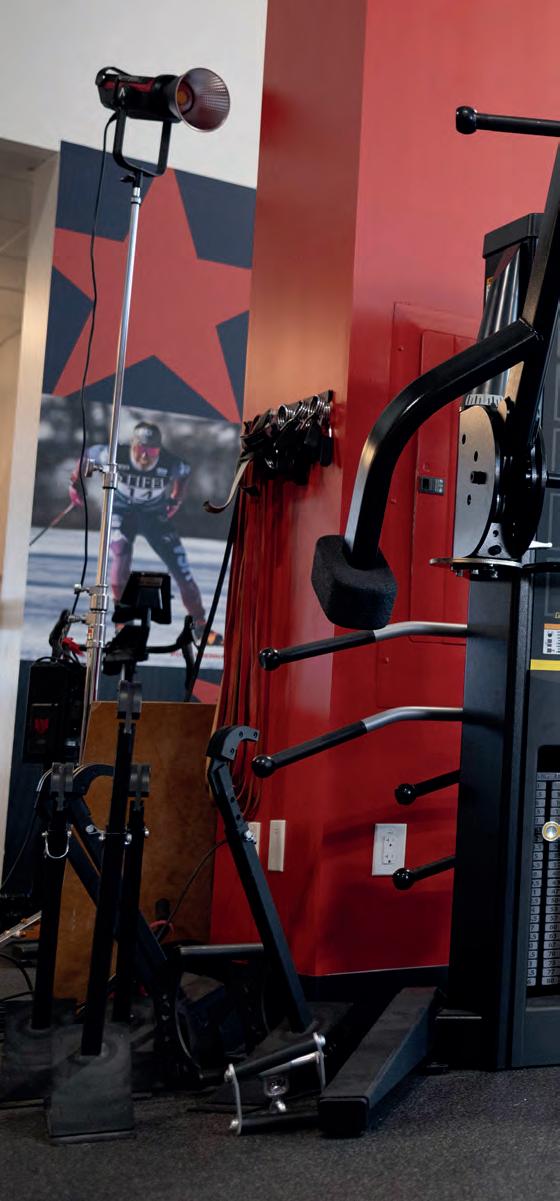
The Dual Cable Cross allows athletes to perform a wide range of functional, multi-plane movements
multi-plane movements, making it ideal for strength, stability and power training. The ability to adjust resistance and specific positioning ensures athletes can customise their workouts to target specific muscle groups relevant to skiing and snowboarding.”
The Incline Trainer represented another new supplement to the floor, which permits cardio training while simulating mountain-like conditions. New cardio bikes were installed as well as infused with engaging and informative visual content.

“I utilise the Freemotion bikes with athletes the most out of all the cardio equipment because the screens allow me to see their power output as well as their RPM, and their distance,” said Maddison Beck, Athletic Development Coordinator at U.S. Ski & Snowboard. “I can individualise each athlete’s program while allowing them to have that individual feedback.”
“These additions are particularly exciting because they cater to the specialised needs of elite athletes preparing for world-class competition,” Watterson said.
Freemotion also dropped in several of its versatile FitRigs during the remodel. Users can go from squatting to core-strengthening leg raises to simple pull-ups in a matter of seconds with the equipment. Foreste Peterson, the Athletic Development Coordinator at U.S. Ski & Snowboard, went as far as to call it the “one stop shop.”
“You literally can do everything there,” Peterson went on. “You can do any kind of lower body exercise, such as lunges, and then go right into a core exercise. You can target your whole body.”
The Freemotion equipment helps athletes with preparation while also ensuring efficient recovery and injury prevention
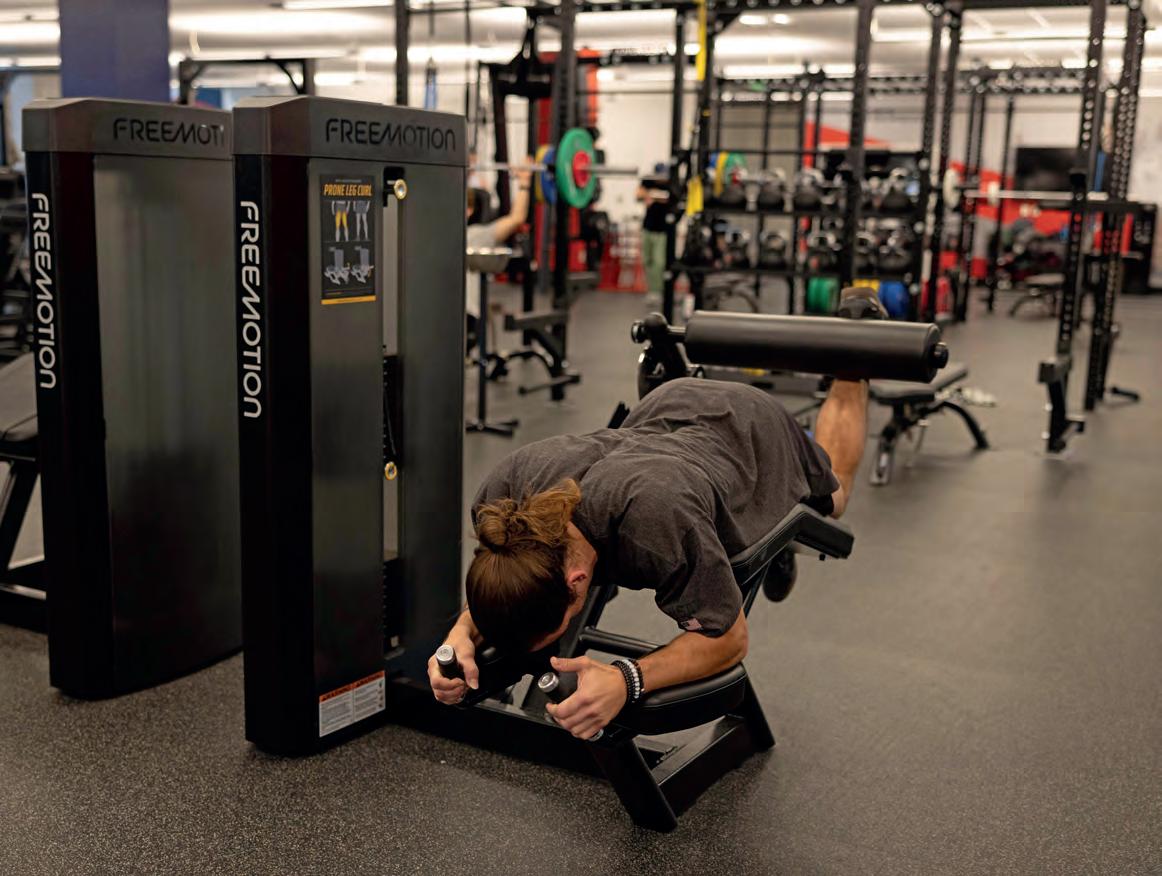
iFIT also recently introduced its Train for the Slopes workout series as part of the partnership. iFIT Trainers Knox Robinson and Shannon Cooper collaborated with professional snowboarder, Lindsey Jacobellis, and alpine skier, Ryan Cochran-Siegle, to assist athletes in their training – both from a physical and mental perspective.
In the content series, the four experts lead individuals through cardio, flexibility, balance and HIIT workouts to prepare for their trips up and down the mountain. Tricks and tips from years of experience are made available throughout the series as well.
Both U.S. Ski & Snowboard and Freemotion have benefited from the partnership thus far through new events and collaborations. As competitions have taken off for the season, seeing the athletes perform at their peak and bringing their expertise to the wider iFIT platform for the masses to enjoy has been equally pleasing.
“The equipment that Freemotion produces matches our desire to push the boundaries to help our athletes get fitter, stronger and faster,” said
Sophie Goldschmidt, President & CEO, U.S. Ski & Snowboard. “We love this relationship with Freemotion where we fully outfitted the gym with all the new equipment. There was a lot of excitement both from our high performance experts, doctors and medical practitioners. It’s really revolutionised this center.”
iFIT understands that the difference between a stuck landing and a wipeout or the between gold, silver and bronze, is sometimes made in the gym rather than on the mountain.
“By modernising the gym with state-of-the-art Freemotion cardio and strength equipment, we’re providing tools that not only enhance physical preparation but also ensure efficient recovery and injury prevention,” said Watterson. “Cutting-edge equipment isn’t just a luxury — it’s a necessity to keep athletes competitive and ensure they’re operating at their peak.”












The Freemotion Plate Loaded line provides ergonomic strength-training machines designed to target key muscle groups. With adjustable seats, non-slip platforms, smooth pivot bearings, and durable stainless steel storage, these machines ensure comfort, stability, and long-lasting performance for upper body, lower body, and core workouts.




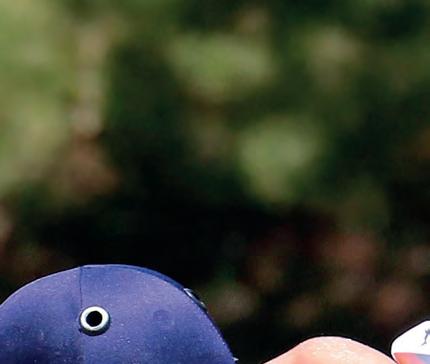

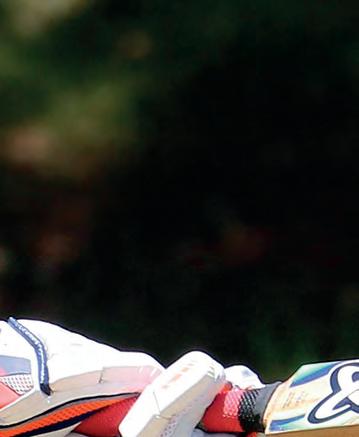


The ECB has published its new Inspiring Generations strategy for the next four years. SportsNation looks at the plans to grow the sport across England and Wales

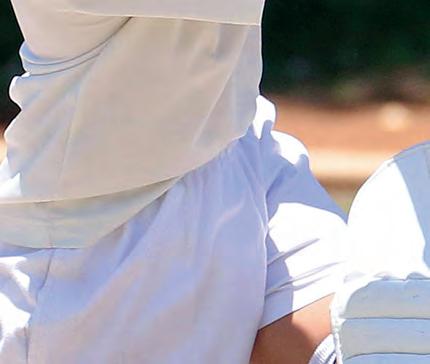
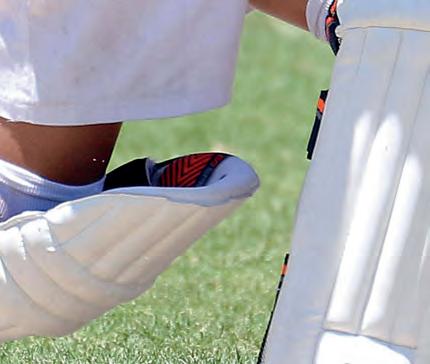


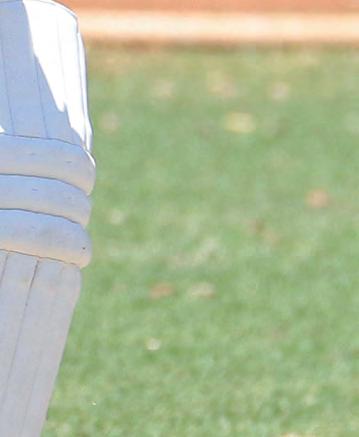

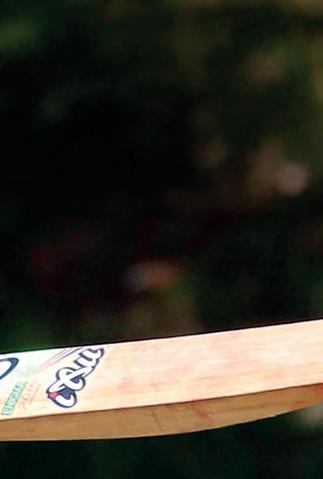




To become the nation’s most inclusive team sport remains our north star
Richard Thompson, ECB Chair

he England & Wales Cricket Board (ECB) published its updated Inspiring Generations strategy in October 2024. Covering the years 2025 to 2028, the strategy covers the national governing body’s plans for all levels of the game – from grassroots to the elite game.
At the heart of the strategy are three key aims. By 2028, ECB wants to “become the most inclusive team sport in England and Wales”, “grow and unite cricket” and “lead it through global transformation”.
ECB launched its first Inspiring Generations strategy in late 2019. The aims in the document were designed to build on the foundations laid by the previous strategy document, Cricket Unleashed, published in 2015. The plans (covering the years from 2020 to 2024) were, however, hugely affected by the COVID-19 pandemic.

Nevertheless, ECB says that cricket in England and Wales has seen “transformative growth” since 2020. Therefore, as the game enters a new strategic cycle from 2025-2028, the new gamewide strategy has been designed to represent “an evolution, not a revolution”, of the plans.

where necessary. This includes creating a pillar for driving forward a sustainable, thriving professional game – something that will be key in the years ahead.”
The document identifies a number of headline ambitions. These include expanding the numbers of people engaging with cricket – through playing, watching, attending or following online – to an average of 14m each year. Specifically, there is a target of growing the number of children playing cricket in an average week by 10%.
Improving cricket’s visibility, profile and access for women and girls is another key area, as is improving cricket’s diversity, inclusion, equity and fair access. At the elite end of the sport, there are plans for both men’s and women’s professional games, in particular to support the 18 professional county associations and further developing the Hundred.
“Many of the themes of the first Inspiring Generations remain just as relevant today, and will be familiar to those working in cricket,” says Richard Thompson, ECB Chair.
“To become the nation’s most inclusive team sport remains our north star. We want to be the sport of choice when it comes to feeling included, welcomed, and free from any form of discrimination.

To achieve the three main aims, the strategy outlines and defines six key objectives. Over the next few pages, we will look at each in detail.
“The strategy is designed to capture the positive work taking place across the game. It aims to take the best of the previous strategy, and turbocharge areas


The ECB wants to “measurably improve” cricket’s diversity, inclusion, equity and fair access. Therefore, there is a specific target – to increase Cricket’s EDI Dashboard grade from D+ to B. The ECB has created the internal dashboard to objectively monitor its progress. The dashboard rates cricket’s inclusion, diversity, fair access and equity using a standardised grading system of A to F for each metric. In addition, ECB will also capture qualitative feedback from people’s experiences through insights work.


To achieve the target, the NGB will deliver tailored EDI training to the game’s workforce and invest in creating accessible and inclusive spaces across the professional and recreational game. Targeted programmes will also look to address underrepresentation in key roles across the game.
At grassroots level, ECB will deliver its new Cricket Cities programme to engage more ethnically diverse communities. It will also boost access to cricket for state school students through its State School Action Plan and support talented young people to fulfil their potential through widening access to talent pathway programmes.
“Diversity is cricket’s superpower, bringing together people from all walks of life to bond over a shared love of the sport,” the ECB says. “Cultivating this superpower has sat at the heart of Inspiring Generations.”
Transform women’s and girls’ cricket
ECB wants to make sure cricket is seen just as much as a sport for girls as for boys. Currently, 59% of the general population things that cricket is gender equal. The NGB wants to increase the figure to 65%.
Increasing participation and opening pathways to players of all backgrounds is one of ECB’s main aims
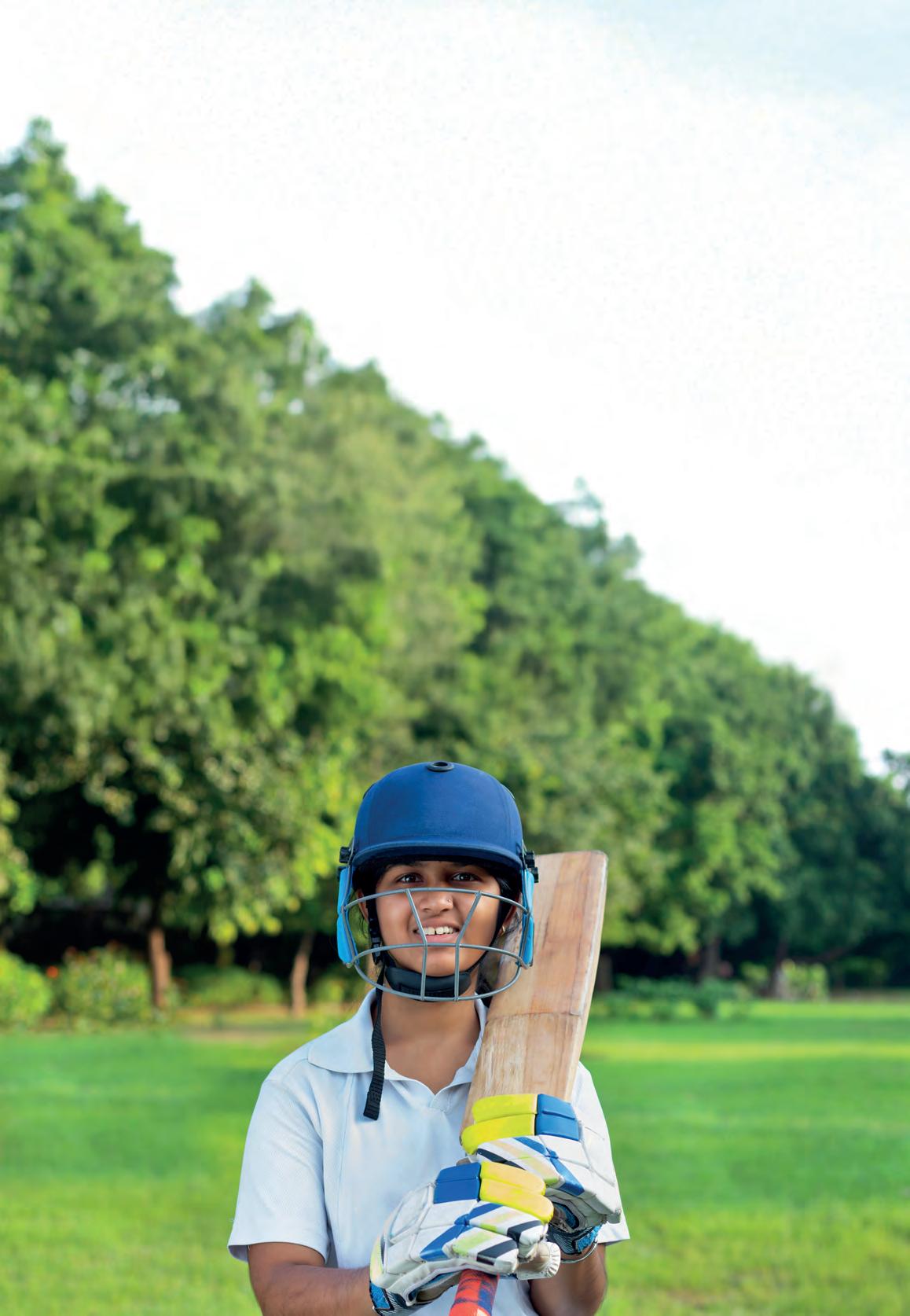
“The metric has been historically hard to shift,” the ECB admits. “But this boost would be in line with the increase that football saw following the UEFA Women’s Euros on home soil in 2022 and the Lionesses run to the final of the FIFA Women’s World Cup in 2023.”
Much of the work to achieve the target will focus on elite sport. ECB has set out to “optimise and grow” England Women’s home international schedule, while also aligning all men’s and women’s professional white ball domestic competitions to maximise their profile, visibility and scale. It will also look to fully utilise – and benefit from – the opportunity to deliver the biggest women’s cricket event in history when it hosts the ICC Women’s T20 World Cup in 2026.
Other plans include increasing the depth of the women’s professional game by launching an accessible and connected three-tiered domestic pyramid. This will see Tier 1 and Tier 2 teams being embedded within First Class County (FCC) structures and an increase in the number of women’s professional domestic cricketers to more than 180. All Tier 1 and Tier 2 counties will also be supported with commercial strategies and there will be a five-year broadcast and streaming plan for women’s professional domestic competitions.
The strategy describes recreational cricket as “the lifeblood” of the sport
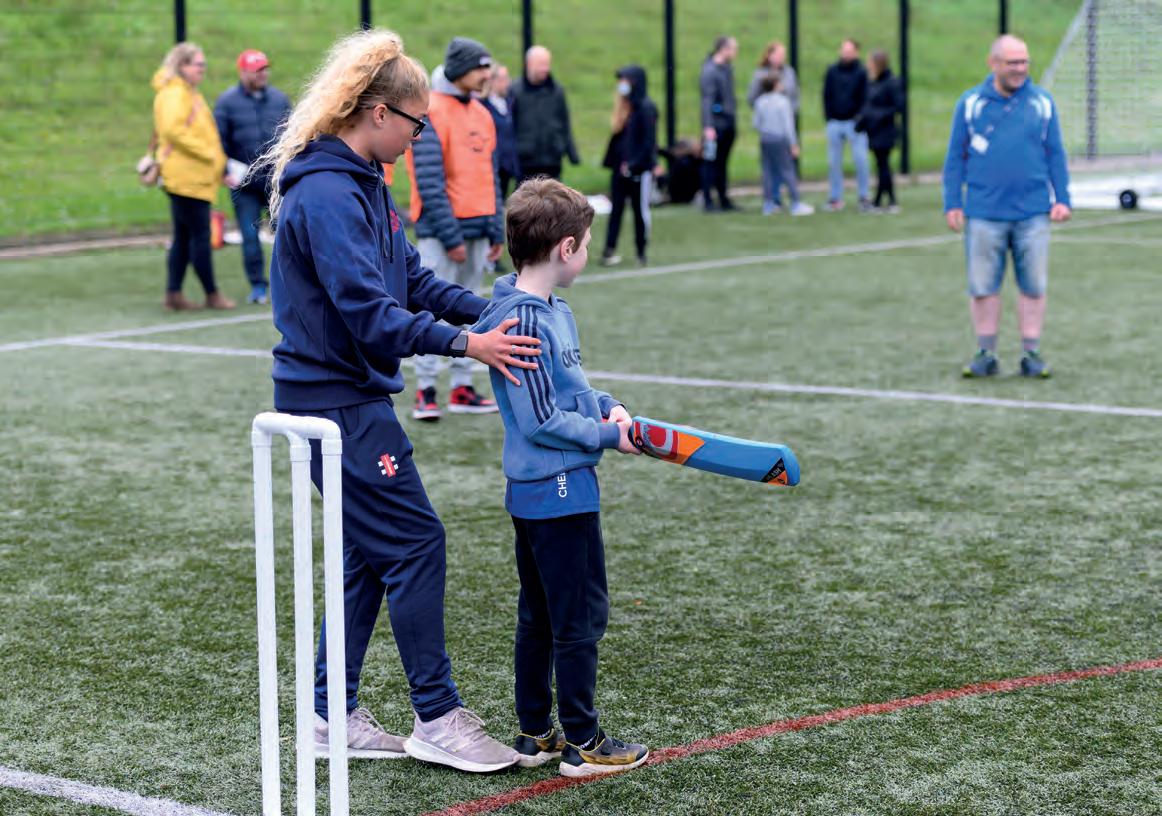
The ECB says it recognises that recreational cricket is the lifeblood of the game – and has the power to improve lives and connect communities. Therefore, it will look to support a network of diversified delivery partners to get more people playing than ever before. The target it has set itself for 2028 is to get 600,000 children to be playing cricket in an average week.
“We currently have around 2.5m active cricketers, with 1.4m under 16s, of whom 550,000 are playing in the average week,” the ECB says. “This is underpinned by 5,650 active clubs, 2,600 junior teams and 120 disability champion clubs.
“By turbo-charging this and finding innovative ways to create new partnerships, access new funding and reach new audiences, we can create an even larger network of communities saying cricket is a game for me.”
One of the plans to achieve its target is to deliver cricket to 850,000 young people and build cricket hubs in schools and urban areas. These will include flagship Cricket Domes, delivered in partnership with the government and Sport England. The ECB also wants to diversify revenue into the recreational game by supporting a network of Trusts and Foundations and national partners.
We currently have around 2.5m active cricketers, with 1.4m under 16s, of whom 550,000 are playing in the average week
The strategy maps out a plan to use both the men’s and women’s national teams to inspire the next generation of players by “winning the big series and events, playing entertaining cricket”. The mention of “entertaining cricket” is an interesting one and no doubt has been included with “Bazball” – the type of positive cricket instigated by Brendon McCullum (the current England men’s coach) and Ben Stokes (captain of England men) – in mind.
The targets are simple but ambitious, considering the recent performances of both the men’s and women’s teams: to win both the Men’s and Women’s Ashes, and a Men’s and Women’s World Cup at least once over the time period. On current form, any of those will take some doing.
Support a thriving and sustainable men’s and women’s professional game
Another of the objects primarily aimed at the elite end of the game, the ECB wants to ensure the long-term health of the professional game by developing players for club and country.
Inspiring Generations was published after the conclusion of the 2024 (the fourth) edition of The Hundred – the 100-ball, quick-fire version of the professional game aimed at making cricket more accessible to new audiences. The strategy confirms that the ECB remains wholly committed to the format, promising to “deliver private investment into The Hundred and launch a new operating model for the competition”.
The other notable commitment is to launch an aligned Vitality Blast (a T20 tournament) women’s competition alongside the existing men’s competition and optimise the structure and schedule from a player and fan perspective – similar to those currently in place with The Hundred.
In an increasingly competitive sport and leisure market, the ECB has recognised that it must grab the attention of new and existing fans, if it wants to get more people attending, watching and following cricket. This in mind, the strategy outlines plans to provide broader and deeper engagement with audiences through leveraging high profile events, including the Ashes and ICC Women’s T20 World Cup.
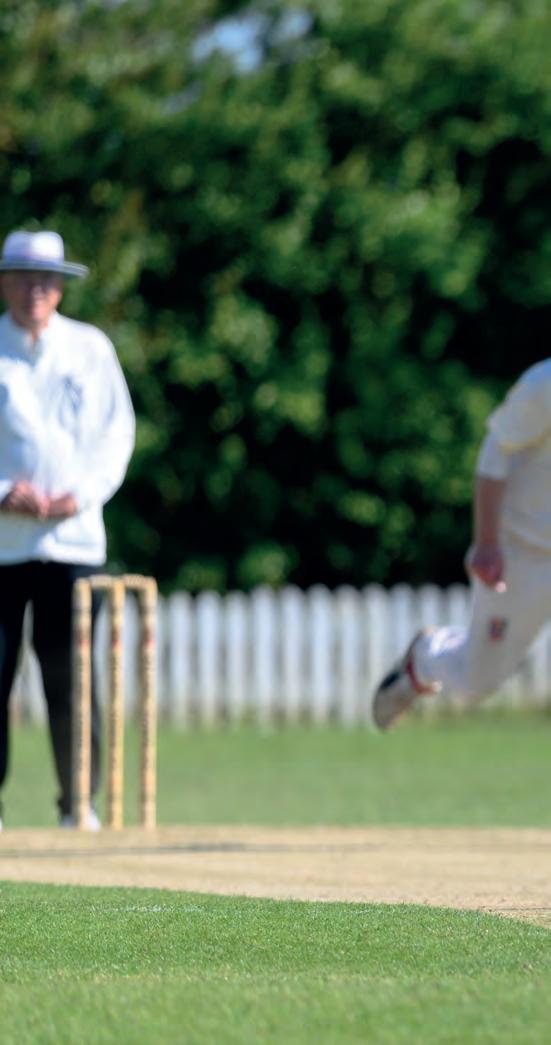
Interestingly, there is also a defined target of improving customer journeys with the introduction of an aggregated ticketing platform for the whole game. This will be undertaken in tandem with increasing the amount of cricket on free to air television to more than at any time since 2005.
“Cricket is in its best ever commercial health, with record viewing figures, record attendances and a more diverse audience,” the ECB says. “But we can’t afford to rest on our laurels, and working with world-class broadcast partners in Sky Sports we must continue to serve existing and new fans.
“We must provide a varied portfolio of cricket competitions and participation programmes, so that we provide the right product, at the right time and place, at the right price point and supported with seamless customer journeys.”
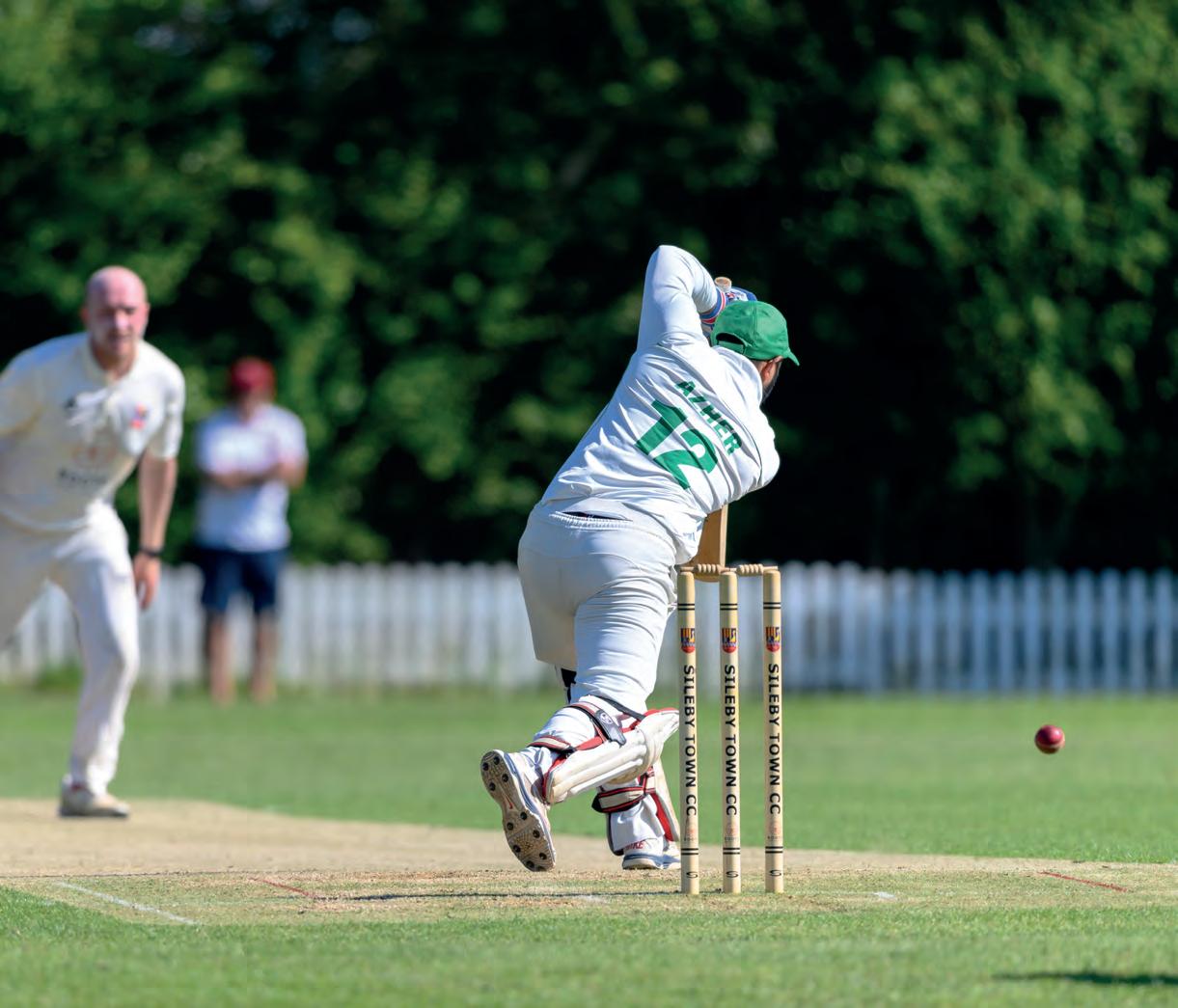
The new strategy recognises the importance of having quality facilities that attract and welcome players of all backgrounds. The nature of traditional grassroots cricket facilities – nearly all being owned by local clubs and only operated during the summer months – mean there have, historically, been limited plans for investing in them directly. However, in the document, the ECB commits itself to developing and investing in 400 projects to support recreational clubs becoming “more welcoming”. Furthermore, there are pledges to deliver 250 successful Grass Pitch Improvement projects through Sport England funding and investing in 200 new places to play in urban areas, including “cricket domes”. There is also a plan to invest in schools through the State School Action Plan.
What’s more, the push for equality and to improve opportunities for females to take part in cricket has resulted in the strategy listing commitments to investing in women’s and girls’ facilities. Among these are plans to invest in highperformance facilities to support a new women’s domestic structure and to fund more than 400 women’s and girls’ projects at recreational clubs. The strategy also showcases how the world’s first cricket dome – which opened at Bradford Park Avenue in 2024 – could pave the way for similar projects in the future. The dome is a covered outdoor space with elite surfacing, lighting and netting and includes two match play courts that convert to ten training lanes. The facility won the 2025 SAPCA Award for Large Sports project and was created by two SAPCA members – Total-Play and Fordingbridge.
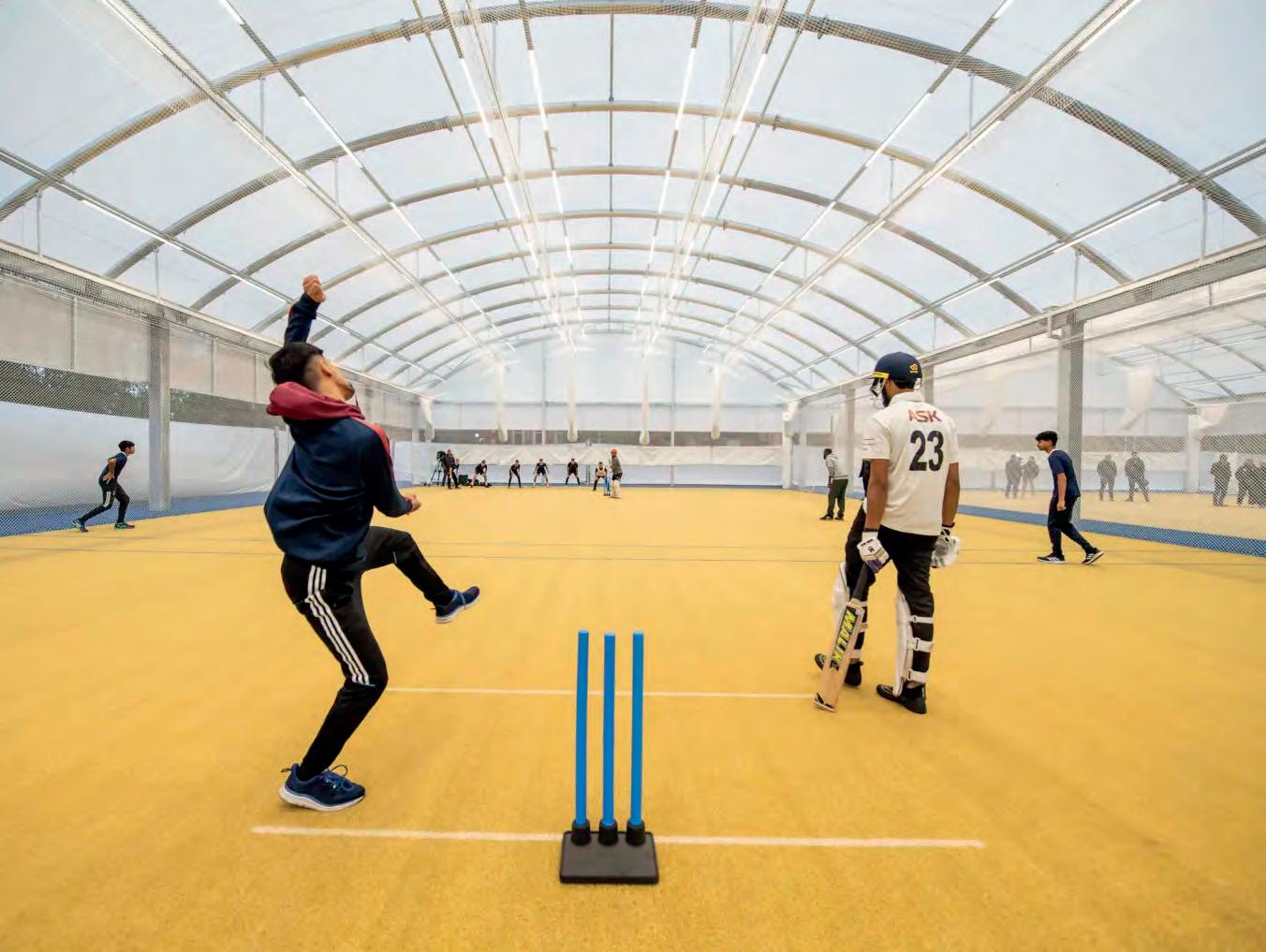
“The cricket-playing environment matters – it needs to be welcoming and inclusive for all,” the ECB states. “Working with partners such as Sport England, and turbocharged with Government investment, we are seeking to create world-leading, inclusive facilities at all levels of the game.”
The strategy also sets out the ECB’s funding plans for the next five years. There is a commitment to increase investment to the county network by 31% – to £512m – over four years. It is clear, however, that there is much more investment being made at the top end of the game than the grassroots.
A total of £404m distributed to the professional game, while £108m will be invested in the recreational game. “Alongside this distribution we will be working to maintain healthy ECB reserves, which were integral to navigating the COVID-19 pandemic for the whole sport,” the SCB says.
“We will also continue as signatories of the Voluntary Broadcast Code, where we seek to reinvest a minimum of 30% of revenue from broadcast rights for the long-term development of the sport.”
Ultimately, the strategy’s success will be judged on its ability to deliver the ECB’s main aims – getting more people playing cricket and ensuring the game’s long-term financial sustainability. The future looks bright and, according to Chair Richard Thompson, it is now down to ECB to build on the momentum.
“The game has been growing in every tangible sense,” Thompson said. “More young people are playing the sport at the grassroots level –cricket is just one of three team sports to see under 16 participation trending upwards.
“At grassroots level, we have the chance to give every young person the opportunity to pick up a bat and ball. We are working in partnership with the Government to maximise the legacy of the 2026 Women’s T20 World Cup, building transformative cricket domes across the country and delivering state school programmes for more young people than ever.
“Cricket is a unique game that can reach communities no other sports can. It can inspire the nation and bring people together from all walks of life. We have a once in a generation opportunity to inspire the next generation. This is cricket’s time.”








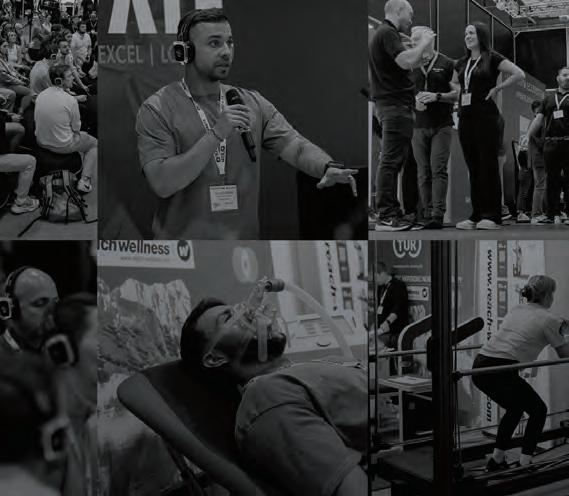

The Football Association has revealed its plans to improve grassroots youth football in England. What will the new Future Fit proposals mean when they are introduced from the 2026-27 season?

he Football Association will be launching a new, progressive framework for grassroots youth football in England from the start of the 2026/27 season. The aim of the new Future Fit plan is simple – to further improve the experience for young players across the country and to give them more time on the ball, more time on the pitch and increasing their physical activity levels.
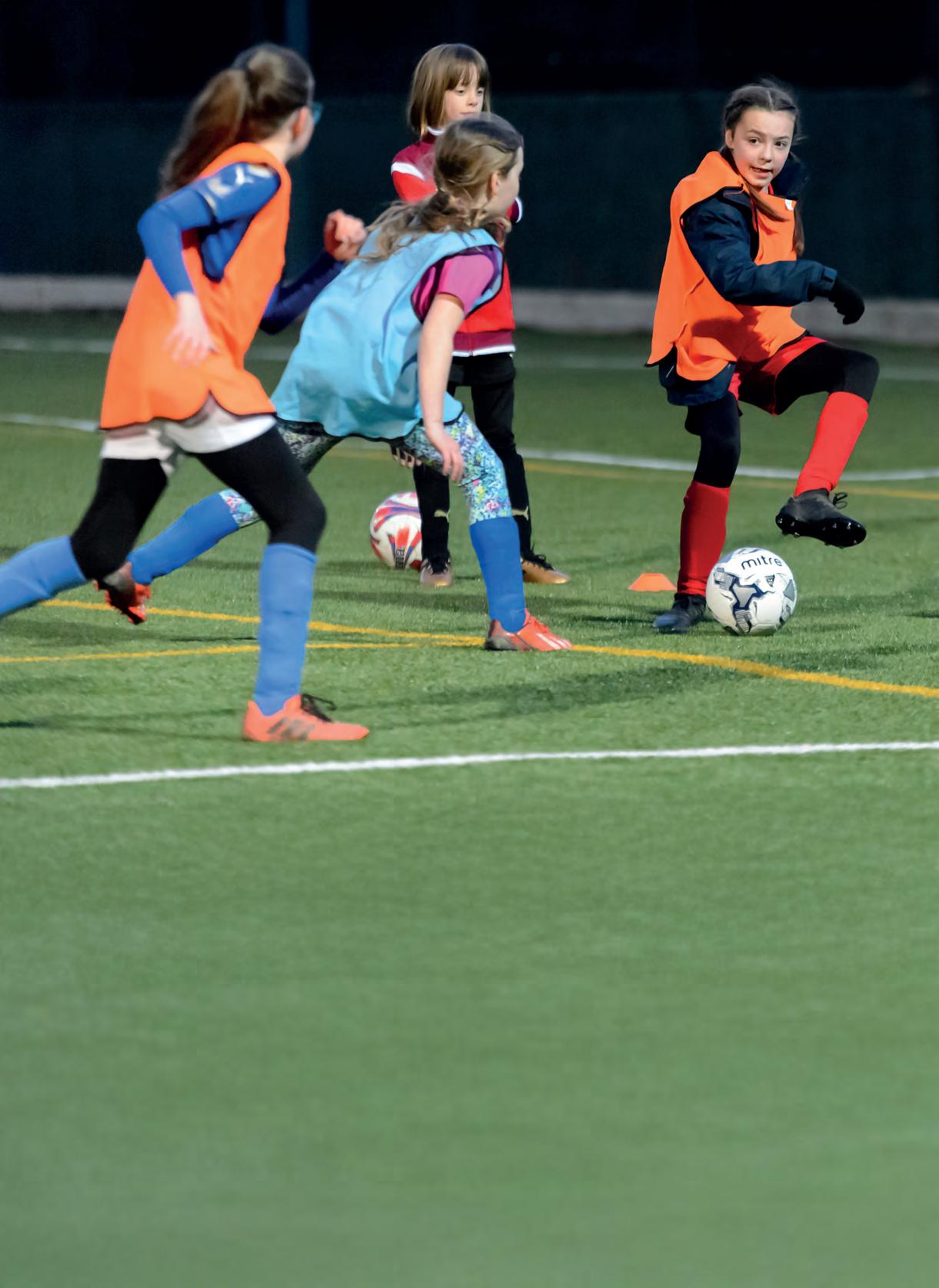
The plans will see comprehensive changes to the way grassroots football is played across all age groups. These include a new 3v3 entry format for the youngest players in the pathway at U7s level. Fielding three players on each side is seen as a way to maximise engagement and provide the best introduction to football. Currently, all FA sanctioned games are played using a 5v5 format up to the U8 level.
There will also be greater alignment with schools, with children playing smaller formats with simplified rules throughout primary school, before

progressing to 9v9 and more complex rules at secondary school. This will also see each format being introduced one year later as players transition through the pathway. For example, the 9v9 format, which is currently introduced at U11 level, will now begin at U12. The shift also includes the move to 11v11, which will move from U13s to U14s level.
Significantly, the laws of the game will be evolved to make them more age-appropriate – so they can best support the overall development of the young player. For example, amendments have already been made to game restarts for U7s-U9s to increase ball in play time.
To help clubs, coaches and others involved in grassroots football negotiate the changes, a new Future Fit: Digital Content Hub has been launched in advance of the implementation. Each local FA will also be hosting several workshops to make coaches more familiar with the plans.
The FA’s Director of Football Development, James Kendall, said: “We’re excited about these new changes which follow a two-year period of consultation with the grassroots game.
“Our approach is about evolution, not revolution, helping to increase the levels of engagement, physical activity, skill development and the volume of technical actions for every player.
“Together with the County FA network, we are fully committed to working closely with all those involved in delivering grassroots youth football, providing the support needed to implement these changes across the country.”
The changes to the grassroots game in England mirror those made in Germany in 2022 – and also fall in line with how youth football is played in Spain. The German football association, DFB, introduced 2v2 and 3v3 formats for the U6 and U8 age groups, while 3v3 and 5v5 formats are played at U8 and U9 level. The move to 9v9, like in England from next year, doesn’t take place until players reach the U12 age group. In Spain, the 3v3 format has been the norm for nearly all games below U8.
The shift to a 3v3 structure at the youngest age groups is designed to provide children with increased time on the ball and more active participation during matches. This should foster the development of technical skills, quick decision-making and agility, laying a robust foundation for future progression in the sport.
According to FA research, the shift to 3v3 can bring some significant advantages on personal development.
“Small-sided games give players the chance to take more actions on the ball, boosting their confidence when it comes to attacking and defending,” the FA said.
“We counted every action in a ten-minute 3v3 game played on a 30x20 metre fenced pitch by U9s. The ball was in play 100% of the time. With fewer players and the ball rolling for the full ten minutes, each outfielder had 71 touches on average. Compare this to 57 for a 5v5 game we observed and 37 for a 7v7.
“The result is many more opportunities to practise core skills, both attacking and defending.”
LEDs (light emitting diodes) are now the preferred lighting choice for sports facilities. In addition to selecting the right solution, however, it is important to consider who you hire to install and supply your chosen product
Sports lighting – from floodlights to internal solutions – have been transformed by the opportunities presented by LED (light-emitting diode) technology and LED light sources. When it comes to outdoor lighting, LED solutions now have the ability to offer comparable brightness at a fraction of the energy cost when compared to traditional, metal halide lamps. LED lighting has also proved to be more durable and show a lower reduction of performance over their service life.
As a result, LED has quickly become the preferred choice for sports facilities looking for a lighting system. It is estimated that around 90% of new installations now utilise LED technology, with some leading lighting manufacturers no longer producing metal halide systems.
The advantages of installing a LED system include lower running costs, longer lasting light fittings, better control of light spillage outside the playing area, greater flexibility in programming (such as to give different colour options), and reduced maintenance.
As the lighting sector has innovated and developed new solutions, The Sports and Play Construction Association (SAPCA) has been working with sports organisations to ensure
that the sector’s quality standards are kept up to date. As part of this, in late 2024 SAPCA established a new Sports Lighting Division.
The first meeting of the group – which included a number of SAPCA member companies – was held in London on 16 December. The group is primarily aimed at – and consists of – companies and individuals involved in floodlighting (including contractors, manufacturers and consultants). The first meeting was also attended by a number of national governing bodies of sport, who discussed and consulted on their future plans. These included the International Tennis Federation, LTA, Rugby Football Union, England Hockey, England Netball and UK Athletics.

Following the updates from each national governing body, there was a lengthy discussion on standards and issues facing the sector. During the discussions, it was decided that there is a need for a SAPCA Code of Practice for sports lighting, to ensure that a series of standards are laid out for SAPCA members to adhere to. As with the other SAPCA Codes of Practice, the sports lighting code will consider minimum standards, best/standard practices, design and delivery criteria, as well as new build requirements versus upgrades.

The second meeting of the Sports Lighting Division took place in February and SAPCA aims to have the new code available to members by the end of Q2 2025.
While there are many companies offering their services for sports-related electrical and lighting work, it is essential to choose a contractor that is a genuine specialist in the sports facility industry. In addition, any company involved in a sports project should have the requisite expert technical knowledge and experience. Visiting previous examples of their lighting installations at similar facilities is always time well spent.
Choosing a SAPCA member as a lighting contractor provides important reassurances that the company is a specialist in lighting solutions – and has a track record of delivering successful projects.
SAPCA sets standards with its new Sports Lighting Division and upcoming Code of Practice
SportsNation showcases some recent examples of completed lighting projects involving SAPCA members
Sports facilities across the UK are under increasing pressure to improve their energy efficiency while maintaining highquality environments for their users. High Wycombe Leisure Centre’s recent upgrade to its five-a-side football pitch lighting is a prime example of how thoughtful investment in technology can enhance both performance and sustainability.
SAPCA member, Earlsmann Lighting, designed and supplied a tailored LED lighting system for the facility, ensuring an optimal level of 120 lux. This strikes a balance between
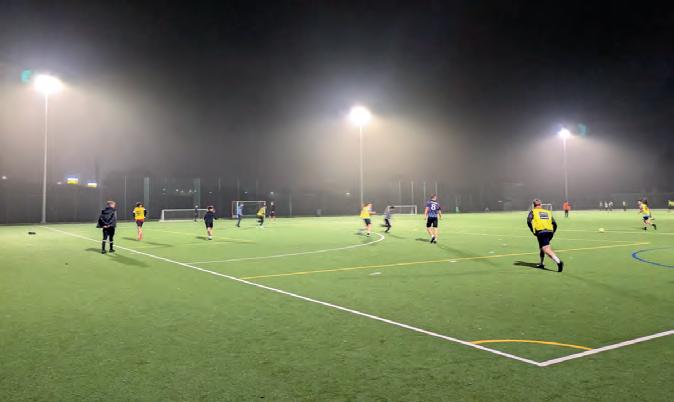
visibility and efficiency, providing players with a well-lit environment while reducing glare and shadows that can impact gameplay.
More importantly, LED technology offers substantial long-term savings by lowering energy consumption and maintenance costs compared to traditional lighting systems.
Beyond financial benefits, the upgrade also prioritises player safety. Uniform light distribution across the pitch ensures that every part of the playing surface is clearly visible, reducing the risk of accidents.

Sports lighting specialists and electrical contractors, JHP Electrical Services, has completed a project to upgrade the floodlights at Brightwell Tennis Club in Farnham. The project involved replacing the existing floodlights, mounted on the masts surrounding the club’s five all-weather floodlit courts, with superior Legacy Lighting LED floodlights to ensure a 500-lux lighting standard meets with the LTA’s requirements.
As members of SAPCA and NICEIC-accredited electrical contractors, JHP Electrical is committed to excellence and compliance with stringent safety
protocols, sustainability standards and rigorous performance testing. At Brightwell, this commitment saw the company take meticulous care to protect both the courts’ principal playing areas (PPA) and total play areas (TPA) by using surface protection below the cherry picker during the installation.
The LED floodlighting installation has significantly enhanced the club’s facilities, by providing it with high-quality, well-lit courts which have uniform lighting, improving visibility and a reduction in energy.


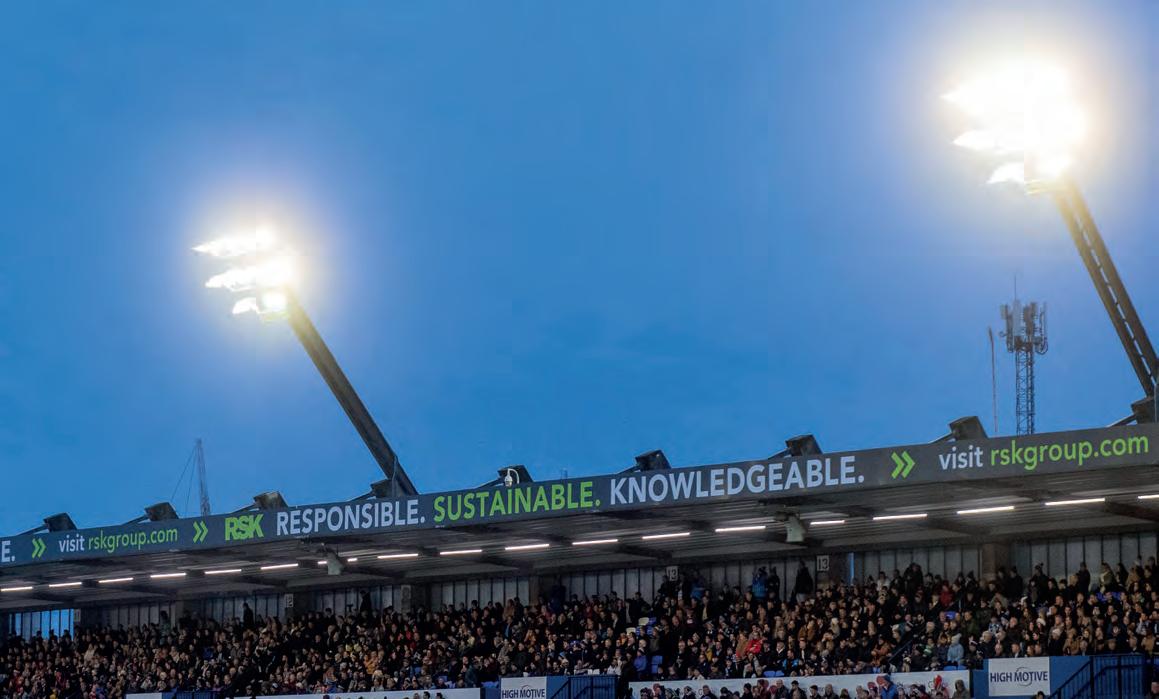
Light up every game with high performance LED floodlights!
From football and rugby to tennis, cricket, and MUGAs, great sport needs great lighting... and that’s where we come in.
Our LED floodlights stay bright, clear, and energy-e cient, so matches can go ahead whatever the season.
Proud to be partnered with:
•New Installations: Providing industryleading columns and floodlights.
•LED Upgrades: Energy-e cient solutions for lower costs and better performance.
•Floodlight Design & Planning: Achieve project goals and secure approvals.
•Repairs & Maintenance: Get your metal halide floodlights back in action.
•Condition Reports & EICRs: Ensure your infrastructure is up to standard.
•Certification & Testing
Our services include: Get in Touch:


Proud member of:

Helping sports have a more sustainable future
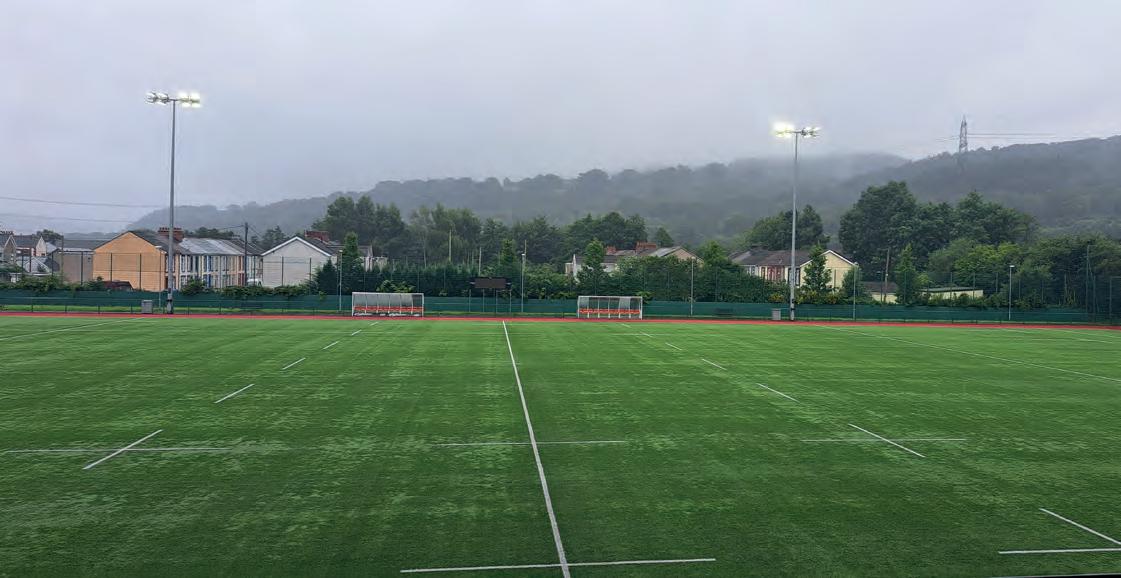
SAPCA member, Floodlighting and Electrical Services, has been working with clubs, schools, and stadiums across England and Wales, helping them switch from metal halide to LED. Recent installation projects range from Wrexham Tennis Centre and Marine Academy Plymouth to Cwmbran Stadium and the Football Association Wales HQ at Colliers Park.
“Our LED installations are keeping the game going longer and better,” a spokesperson for Floodlighting and Electrical said.
“Rugby clubs like Llandovery RFC, and Ystradgynlais RFC now have match-quality floodlighting, while Gol Centre Newport and Paignton Academy have switched to energy-efficient, cost-saving LEDs.
Upgrading to LED makes a real difference for players, clubs, and communities
“And it’s not just the big venues. Schools and local sports centres like Abertillery Leisure Centre and Hawthorn High School are seeing the benefits of safer, more reliable floodlighting. Whether it’s a main pitch, training area, or MUGA, upgrading to LED makes a real difference for players, clubs, and communities.”
Thorncliffe Tennis Club near Sheffield has upgraded its floodlights from halogen to energy-efficient LED lights. The lighting installation forms part of a larger redevelopment of the club, which has seen the facility being transformed from a club with aging courts to a fully renovated, floodlit facility.
“This move isn’t just about better visibility – it’s a game-changer for sustainability and performance,” the club said in a statement. “We now have brighter, clearer courts for safer play thanks to the energyefficient and environmentally-friendly lights. It also means that we now have more opportunities to put on evening games and events.”
The lighting solution was supplied by SAPCA member, Lumosa.
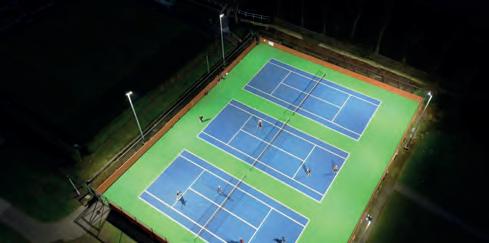
“With our Lumosa LED lighting, players can now enjoy crystal clear visibility, extended play hours and massive energy savings,” Lumosa said. “It’s a win for the club, the community and the future of grassroots tennis.”


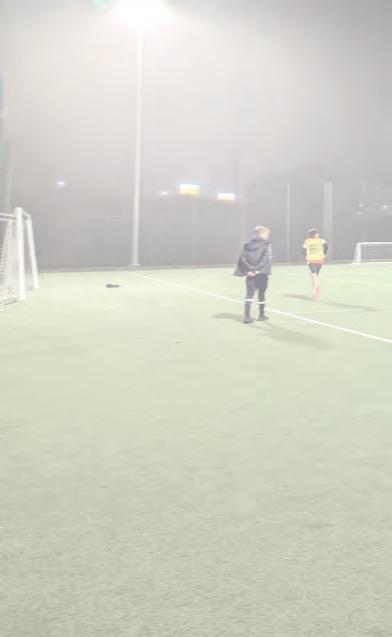

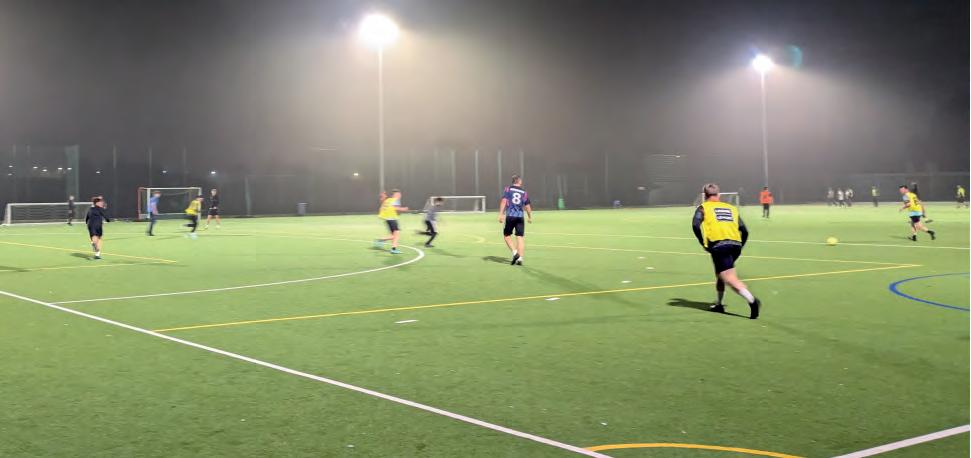












Inaccessible venues and a worrying increase in disability abuse are among the major barriers for disabled fans to attending live sport
Asurvey of sports fans has shown that there remain a number of persistent barriers to live sport for disabled people. The annual Level Playing Field Annual Fan Survey reveals the top 10 overall barriers to disabled fans, with ‘cost of attending’ seeing the largest overall rise, while physical access at stadiums and ‘attitudes of others’ remain in the top two spots respectively.
This year’s survey, the fourth edition of the report, saw a record number of disabled supporters take part. Commissioned by Level Playing Field – a charity which campaigns and advises to improve the experiences of disabled fans attending live sporting events – the report is based on 2,055 responses from fans who between them support 156 different clubs.
According to the report, the biggest barrier to attending sports events remains physical access at stadiums, with a third (33%) of respondents identifying it as their main concern. Worryingly, there has been a 3.5% increase in the number of people listing it as the main barrier – when compared to the previous year’s report – suggesting that progress in providing accessible venues is disappointingly slow.
Meanwhile, 71% of respondents confirmed that accessibility considerations had an impact
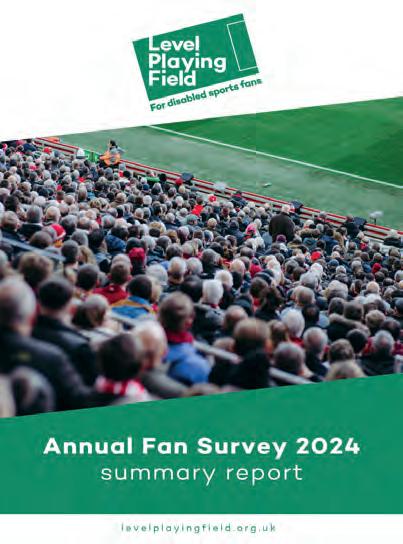


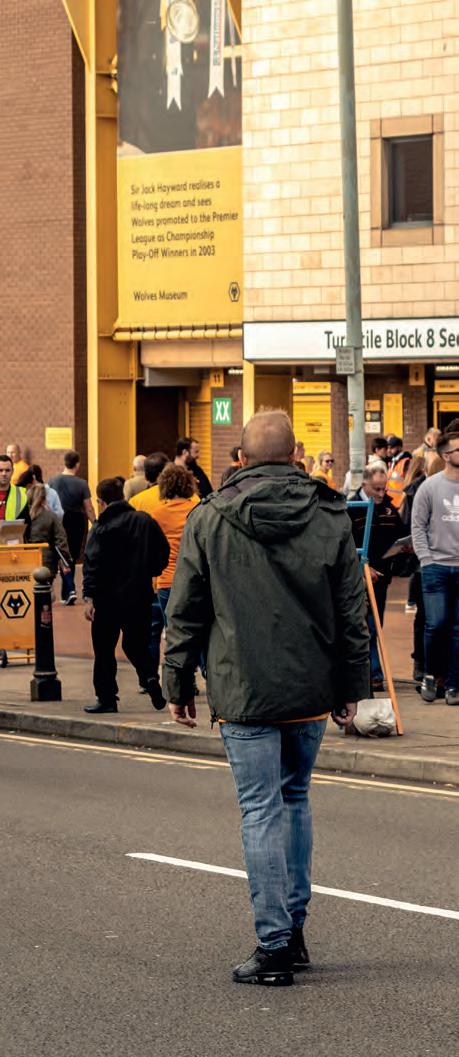

on when they arrived at or left live sports events. Of these supporters, two-thirds cited ‘crowding concerns’ as one of the reasons for that impact, with over half also citing ‘queuing for long periods of time’ as a reason.
Damningly, the report suggests that there are still a number of venues which disabled people are unable to visit at all. When asked if there are any sports or sporting venues that respondent feel unable to attend because they are inaccessible, 22% said yes.
In response, Level Playing Field said: “It remains unacceptable that more than a fifth of disabled fans are unable to attend some sports venues and stadiums because of inaccessibility. While this figure represents the percentage of supporters – rather than the percentage of

stadiums that are inaccessible – it is clearly an issue for any sports venue to be considered entirely inaccessible to disabled fans.”
The report also highlights how there are often significant considerations for disabled fans when planning for their matchday and travelling to the venue. Even before entering the stadium, disabled fans will often have certain access requirements.
When asked which services and facilities they might benefit from when planning for and travelling to matches, the most often cited ones were accessible parking (63.5% of respondents), the option to bring a personal assistant (55%), accessible entrances (50%) and clear accessibility information (43%).
“The percentage of supporters stating that they would benefit from the option to bring a PA has
More than a fifth of disabled fans are unable to attend some sports venues because of inaccessibility
increased year on year over the four years we have conducted the survey,” Level Playing Field says.
“Clubs should adopt a flexible approach to this and treat PA requests on a case-by-case basis.
“The percentage of respondents stating that they would benefit from the use of an accessible
● Physical access at stadiums
● Attitudes of others
● Difficulty purchasing tickets
● Anxiety or lack of confidence
● Cost of attending
● Inaccessible public transport
● Unable to travel to stadium
● “I don’t think stadiums are inclusive for disabled people”
● Lack of information
● No access to a companion or personal assistant

entrance has also increased year on year, from 37% of disabled fans back in 2021 up to 50% of fans this year. This includes 44% of disabled supporters who do not use a wheelchair. So it is important for club stewards to be aware of this.”
Perhaps unsurprisingly – when considering the wider economic environment – the ‘cost of attending’ is the barrier that saw the biggest increase in 2024. Nearly a quarter (22.5%) now list the price of watching sport as a barrier, compared to just 17% in 2023.
Sadly, there has been a steady, year-on-year increase in the number of disabled fans who say that ‘disability abuse is a barrier when attending live sport’. When the first Level Playing Field report was published in 2021, just 5.5% of respondents listed abuse as a barrier. By 2023, the figure had increased to 7%. In the latest report, the figure has risen to 8.5%. What’s more, the ‘attitudes of others’ remains the second-highest barrier to attending (26% of disabled fans).
In response to the trend, the report provides clubs and venues with some practical advice to tackle abuse. “Venues and clubs should ensure there is a clear process for fans to report any disability discrimination they experience on a matchday – and that this process is known to fans,” the report states.
“All reports should be taken seriously, investigated, and responded to. Stewards should be given appropriate training to recognise and act on any disability abuse.
“We also recommend that all stewards and customer-facing staff receive some level of disability awareness training. It’s also very important for clubs to have a named (and contactable) Disability Access/Liaison Officer who can answer any accessibility questions they may have.”

According to Level Playing Field, the report makes it clear that certain technologies are not accessible or available to everyone. Specifically, the option to pay contactlessly and use of a smart phone for digital ticketing.
A fifth of respondents (20%) said that they would benefit from having the option to pay using cash inside stadiums. while over a quarter of respondents (26.5%) said that they would benefit from having a physical ticket.
Clubs who have chosen to make use of these technologies, particularly those who have decided to implement a ‘cashless stadium’ policy, should be mindful that they may not be accessible to all. Clubs should therefore continue to provide alternative means of payment and ticketing, which take into account disabled supporters’ access requirements.

In addition to publishing the full report, Level Playing Field has sent clubs and venues their own specific reports with the full responses from disabled supporters relevant to them. This has resulted in more than 130 individual reports being shared with organisations – who will have data to work with when they look to improve experiences and access for disabled fans.
Level Playing Field Chair, Tony Taylor, said: “Engagement from different clubs and organisations with their individual results has already been very encouraging in some cases. With the annual survey now in its fourth year, they are now able to track developments since 2021, as well as compare their performance to the overall picture across sports.
“This gives these organisations a tool to measure the effectiveness of steps they have taken and identifies areas which must be rectified. Level Playing Field staff are happy to assist in understanding these results more fully and working to find solutions where necessary.
“The importance of listening to supporters as we develop the survey was also shown through more

The services and facilities that disabled people say they would benefit most from inside stadiums
● Accessible toilets
● Easy access seating
● Accessibility stewards
● Priority use of lifts
● Additional legroom
● A wheelchair user space
● Disability identifiers
● A seat near to toilets/food
● Easy-access toilet cubicles
● The option to use cash
● Low-level counters
● Quiet room/area

● Changing Places toilet facility
● Sensory room
● Sensory pack


Disability abuse as a barrier has steadily risen, from 5.5% in 2021 to 8.5% in the latest report
than a fifth of disabled fans identifying physical tickets and the option to pay using cash within the stadium as services they would benefit from.
This survey was the first time each of these was measured and will greatly inform the charity and other stakeholders.”
The collapse of ISG in September 2024 threw a number of large-scale sports construction projects in limbo. Among those affected were Alliance Leisure developments. Paul Cluett, MD of Alliance Leisure, recalls how the company responded to ISG’s demise
When construction giant ISG went into administration in September 2024, it left more than £1bn worth of government construction schemes – 57 ongoing projects and 33 awarded contracts – in disarray. The collapse had a devastating effect on the sector and also saw 2,200 workers made redundant with immediate effect.
ISG was involved in several sports and physical activity projects. Among those, it was the lead construction partner for a number of developments led by Alliance Leisure. The impact on these projects was severe and immediate. However, within 100 days of ISG’s collapse, Alliance Leisure had every affected project back on track.
Alliance MD, Paul Cluett, reflects on how Alliance navigated the challenges, the lessons learned and the power of relationships and collaboration.
When ISG Construction went into administration last September, in addition to all the employees and subcontractors who lost their jobs and income on that day, the potential impact on our clients and their committed build projects was immediate and profound. ISG was the principal contractor on several major leisure development projects, being delivered by Alliance Leisure through the UK Leisure Framework, and representing approximately £250m worth of investment. Overnight, these projects faced the threat of significant delays or even cancellation. Recognising this, we triggered an urgent and comprehensive response. Our first priority was to stabilise the situation. With projects in various stages of development, we needed to
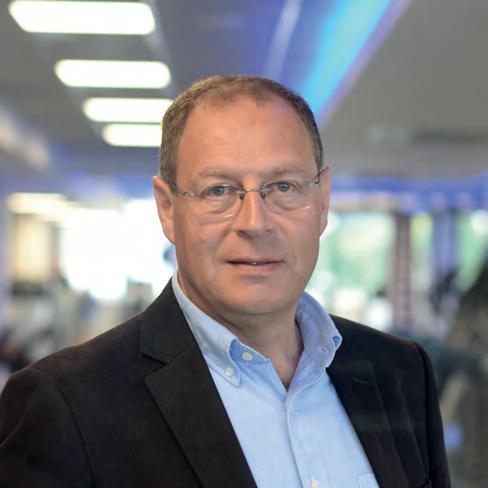
act quickly to secure all sites and took specialist advice to ensure the legal and financial positions of our clients were protected. This initial phase was all about gaining clarity amidst uncertainty. Our teams moved swiftly to assess the impact on live projects and those in preconstruction, engaging closely with clients to understand their concerns and outline a clear path forward.
Simultaneously, we began engaging with alternative contractors. This rapid mobilisation was possible thanks to our established relationships and the robust mechanisms of the UK Leisure Framework, which is managed by Denbighshire Leisure Limited (DLL) and allowed us to respond quickly and effectively. Our goal was to minimise delays and cost escalations, ensuring continuity and confidence for all stakeholders.
As a relatively small business, we are more agile than larger organisations. Our team were just fantastic. During those first 100 days, we met every evening to report on the latest updates and set the following day’s actions. I felt like a conductor of an orchestra, I was just directing our immensely talented team and knowing that I could trust each individual to deliver. I didn’t have to ask twice; we were all on the same
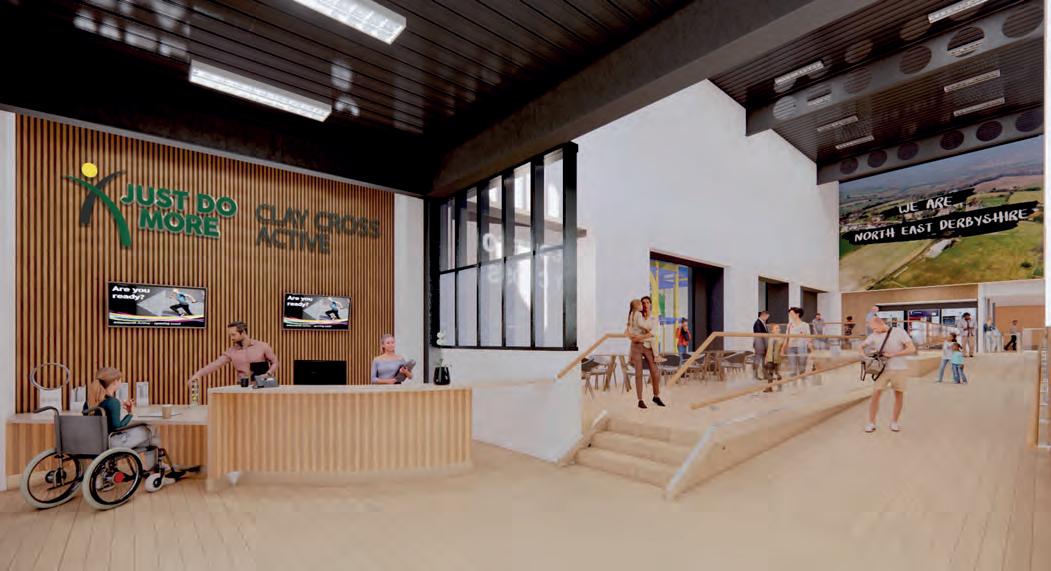
One of the projects affected by the ISG collapse was the £24.1m replacement of Sharley Park Leisure Centre in Clay Cross, Derbyshire, with a new community hub. Designed by GT3 Architects, the new hub is set to deliver a swimming pool and learner pool with spectator seating and a large, modern health club with a gym area, indoor cycling studio and sports hall.
The project is part of North East Derbyshire District Council’s (NEDDC) Clay Cross Town Investment
Plan, which aims to deliver a number of projects to ensure Clay Cross is a thriving place to live and work.
Matt Broughton, Director of Growth & Assets at NEDDC, said: “When we first heard the news about the ISG fallout, it was a shock. We were concerned about the potential impact on the Clay Cross project and the community.
“Sarah Watts, CEO at Alliance Leisure, personally rang me to inform me of the situation, which left us with many questions about the next steps. It was a time for cool
page and in harmony, which is what got us through. The experience was both challenging and exhilarating, but not one that I would want to repeat again.
The live projects presented the most immediate challenges. Each site was in a different state of progress, and the sudden exit of ISG left behind an operational tangle that required meticulous unpicking. Our team undertook detailed reviews of each project to understand their exact status and scope, working closely with clients to keep them informed and reassured throughout.
Leveraging the UK Leisure Framework, we engaged alternative contractors to develop Contractor Proposals (CPs) for each project. These CPs formed the basis for new contracts, allowing work to resume without unnecessary delay. This
heads and professional advice.
“Alliance Leisure’s response was swift and reassuring. They immediately provided advice and leveraged their extensive supply chain and framework partners to address the situation. During those early days, their clear communication and proactive approach were invaluable. They kept us informed at every stage and quickly appointed new contractors to ensure the project stayed on track. It was everything you could wish for from a true partnership.”
phase was complex and demanding, but our team’s dedication ensured that every project moved forward efficiently in alignment with our clients’ objectives.
For projects still in the pre-construction phase, our focus shifted to ensuring they remained viable and set for progression. We engaged alternate contractors to conduct high-level cost reviews, providing clients with confidence that their investments were secure. Once these reviews confirmed the feasibility of proceeding, we began preparing CPs for these projects.
To maintain momentum, we also secured contractors to undertake enabling works where possible. This approach minimised programme disruption and kept projects moving forward, even as the broader construction industry adapted to the repercussions of ISG’s collapse.
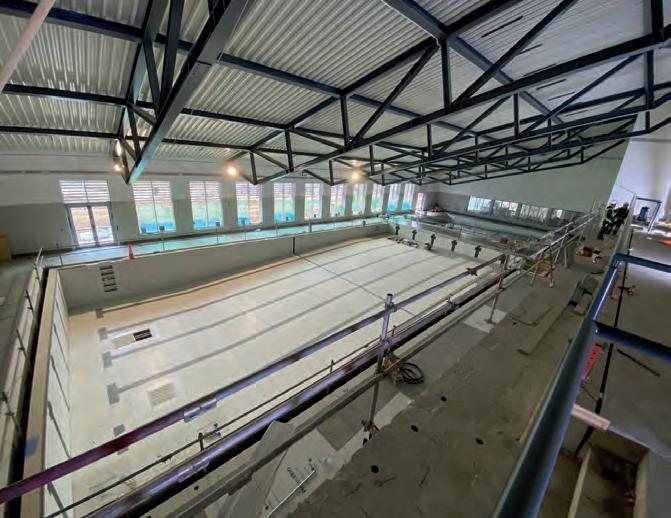
The Clay Cross project was quickly back on track, thanks to the effectiveness of the team

Reflecting on the past three months, I am immensely proud of how our team and our network of professional advisors rose to the challenge. Their resilience, resourcefulness and commitment ensured we found effective solutions to keep projects moving forward.
The success of this recovery is due to collaboration at every level. Internally, our teams worked tirelessly, pooling expertise and resources to deliver effective solutions under pressure. Externally, we relied on the strength of our partnerships with contractors, consultants and of course, our clients. Their trust and cooperation enabled us to implement solutions quickly and effectively. Open and transparent communication was key, ensuring that everyone involved had a clear understanding of the steps being taken and the outcomes we were working towards. The UK Leisure Framework also proved invaluable, providing a flexible yet robust platform that allowed us to navigate the complexities of the situation with confidence and agility.
The experience of managing the fallout from ISG’s collapse has reinforced several core principles for Alliance Leisure. First and foremost, it highlighted the importance of adaptability. The construction landscape is inherently unpredictable, but by staying agile and solution-focused, we can continue to deliver for our clients, even in the face of significant disruption. It has also reinforced the importance of relationships. I firmly believe you reap what you sow. The relationships we have built with clients and partners over the years paid dividends. It was especially rewarding to see Sport England supporting affected schemes by providing
additional funding to help ensure committed projects remained viable. People could see we were working exceptionally hard to achieve the best outcomes for all involved. They were understanding, supportive and despite everyone feeling some degree of pain during this experience, they were prepared to dust themselves off and stand shoulder to shoulder with us.
The experience also reaffirmed the value of the UK Leisure Framework as a tool for resilience. It allowed us to respond quickly, secure alternative contractors and maintain project momentum, ensuring that our clients’ objectives remained achievable.
Finally, it underscored the strength of our team. The professionalism, dedication and expertise displayed by everyone involved were nothing short of remarkable. Their efforts not only mitigated the immediate impacts of ISG’s collapse but also strengthened our processes and partnerships for the future.
Despite the challenges, the outcome has been overwhelmingly positive. We got all ISG-affected projects back on track, with minimal cost increases and disruption to timelines. This is testament to the effectiveness of our approach. As we move forward, we remain focused on completing these projects to the highest standards, ensuring they deliver long-term value for our clients and their communities. The lessons learned from this experience will continue to inform our work, helping us to navigate future challenges with confidence and clarity.
I am also very pleased that many of the ISG employees and sub-contractors that we have worked with over the years have found new roles with main contractors delivering Alliance leisure projects.
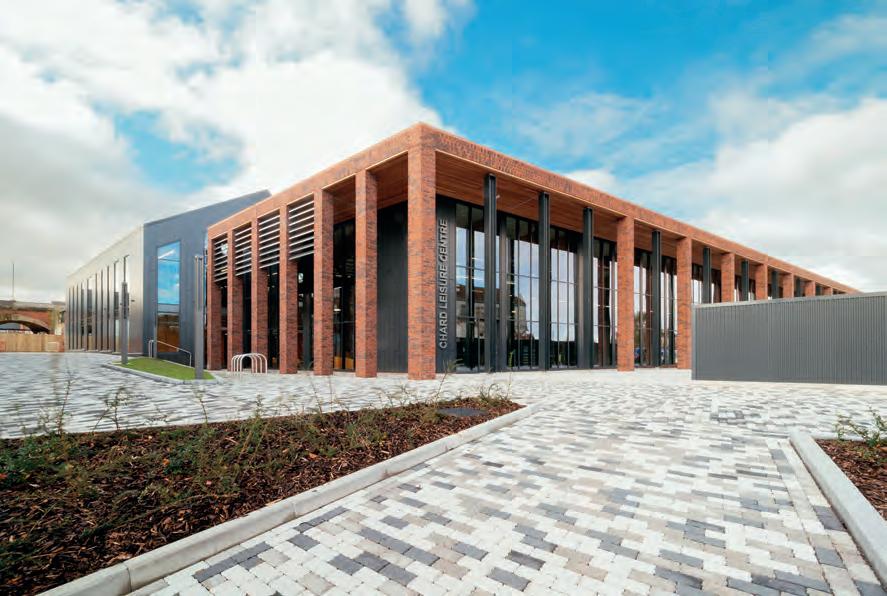
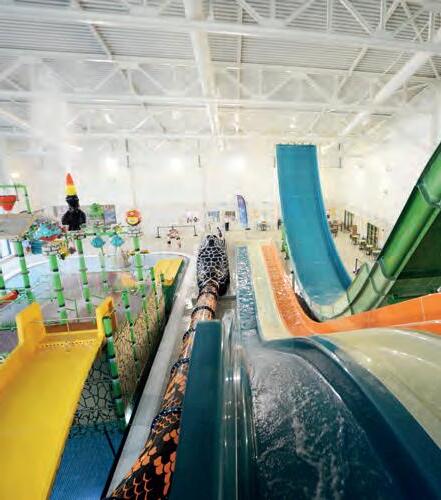
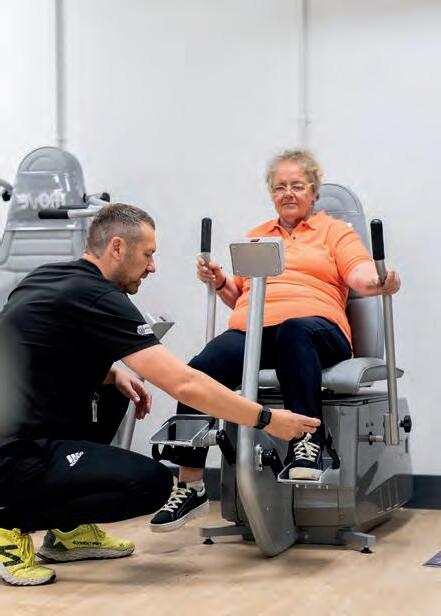


The government has announced plans to remove Sport England’s role as statutory consultee in planning decisions. What would the move mean and what has the sports sector’s reaction to the news been?
The government has confirmed plans to remove Sport England from the group of statutory consultees who provide feedback and views in planning decisions. The planned move is part of the government’s reforms to overhaul the planning system, set out on 10 March, which are aimed –according to the government – at “putting growth at the heart of the statutory consultee system” and helping deliver the government’s Plan for Change milestone of delivering 1.5 million new homes.
Statutory consultees are official stakeholders legally required to provide advice on planning decisions to ensure developments can consider essential environmental, transport, heritage and safety elements. Under the plans, the consultees – organisations such as Sport England, Theatres Trust and The Gardens Trust – will no longer be required to input on planning decisions. The scope of other statutory consultees will be narrowed to focus on heritage, safety and environmental protection.
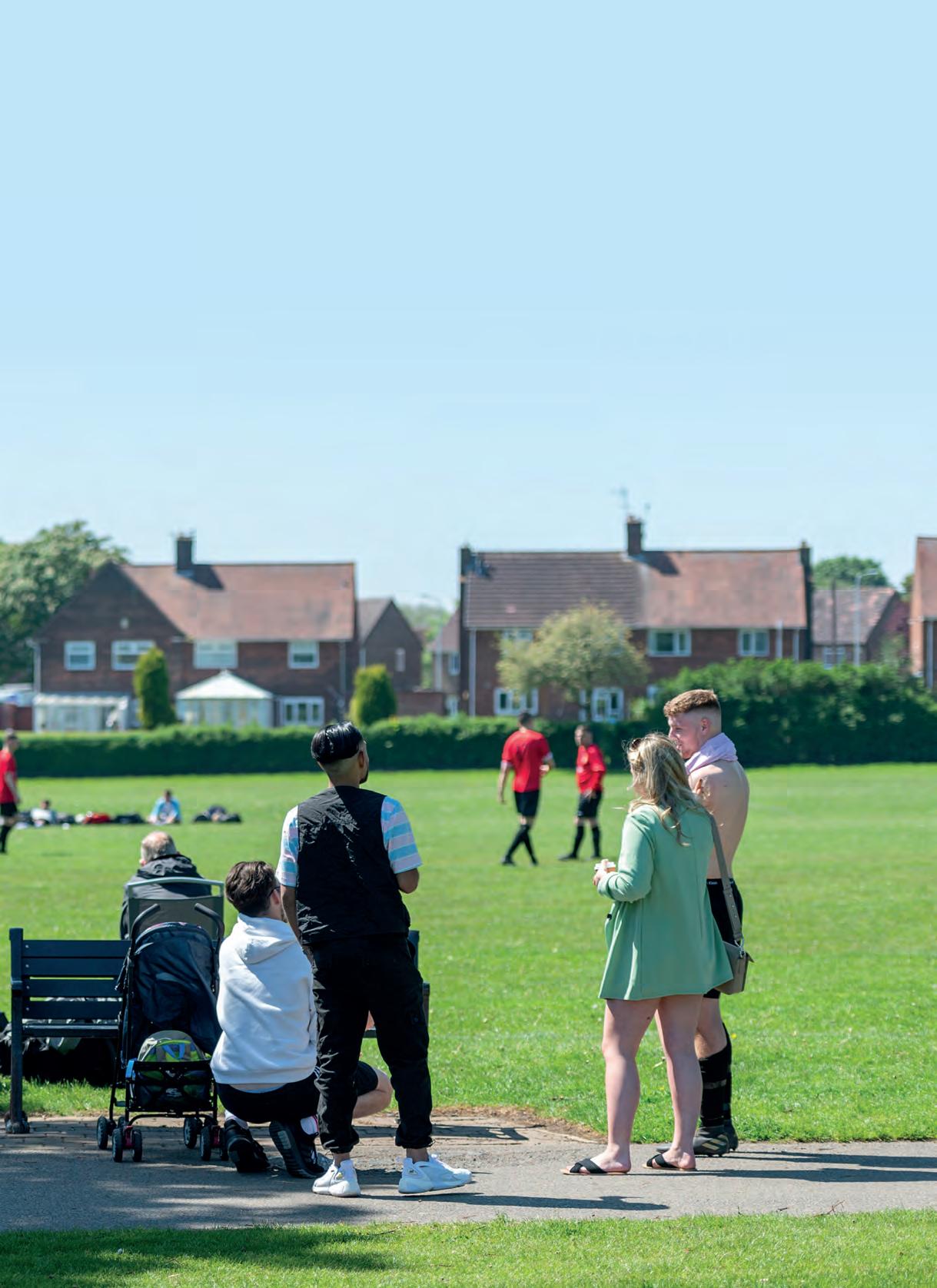
Although the government said the consultees “play an important role” in the planning system, it also claims that local authorities and developers are reporting that the “system is not working effectively”. The list of statutory consultees has grown over time and now includes more than 25 organisations.
Deputy Prime Minister and Housing Secretary, Angela Rayner, said: “We’ve put growth at the heart of our plans as a government, with our Plan for Change milestone to secure 1.5 million homes and unleash Britain’s potential to build.
“We need to reform the system to ensure it is sensible and balanced, and does not create unintended delays – putting a hold on people’s lives and harming our efforts to build the homes people desperately need. New developments must still meet our high expectations to create the homes, facilities and infrastructure that communities need.”
We asked sports organisations and leaders in the sector for their views on the plans to strip Sport England of its role in planning.
Tim Hollingsworth CEO, Sport England
We understand the Government’s priority around housebuilding and the need to stimulate growth. However, it is vital we balance this with the need to keep a nation moving – and the places and spaces that currently support sport and activity in our community.
We therefore look forward to working constructively with Government through the consultation to seek to achieve these aims. History shows us that without effective action taken to protect playing fields, we will see vital facilities lost, particularly often in those areas that are already least well served.
Once you lose a playing field or pitch, it’s gone forever. With more than half our playing fields in this country within school grounds, and with a child obesity crisis and £7.4billion lost to the economy each year to inactivity, it’s essential we get the balance right ensure any future legislation continues to protect the facilities base in this country.”
“Women in Sport is concerned that the Government is considering removing Sport England from the list of organisations who must be consulted on planning applications. Sport England are the only expert consultees who specifically aim to protect spaces for sport and the only statutory consultee championing the opportunity for women and girls to be active.


Removing their expertise from the planning process could have a hugely detrimental impact: on women and girls, on English sport and on the Government’s missions to increase opportunity for all and improve the health of the nation. Given sport generates £4.20 for every pound spent on it, it could also threaten the drive for economic growth that reform of the planning process is intended to support.
Access to outdoor space for sport and physical activity is vital. Anything that removes outdoor space –
whether that is formal sports pitches, school playgrounds or open green space – from the places where people live and work will create an unnecessary barrier to people being active. This is especially true for women and girls. Women and girls are less active than men and boys at every stage of their lives. Because of gender stereotyping that tells young girls and their parents that sport is not important for girls, we know that they are already having fewer opportunities to experience sport. Having less access to open space near where they live will exacerbate this.
Teenage girls, who are experiencing a crisis in their mental health, need local open spaces where they can be free and feel safe to be active. With 37% of teenage girls already only getting active at school, and with the pressures on schools to deliver school sport that works for girls, any loss of open space could have a huge impact. And take away yet another way of supporting their mental health.”
Lisa Wainwright MBE CEO, Sport and Recreation Alliance
We are disappointed to see the Government’s proposal to remove various statutory consultees – including Sport England – from planning decisions in England. We, of course, recognise the need to build more homes and are wholly supportive of the Government’s mission to boost growth.
But the proposals as conceived risk being a case of ‘cutting off your nose to spite your face’. The UK is already markedly less active than countries like Finland or Ireland. And low physical activity levels already cost our economy £7.4bn, with long-term sickness and childhood obesity acting as a major drag on the economy and the NHS and putting our children’s health at risk. It is therefore essential we preserve and grow places for
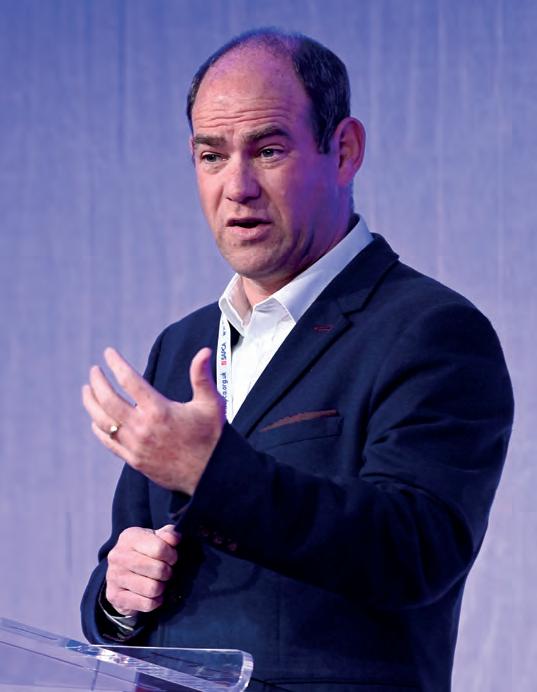
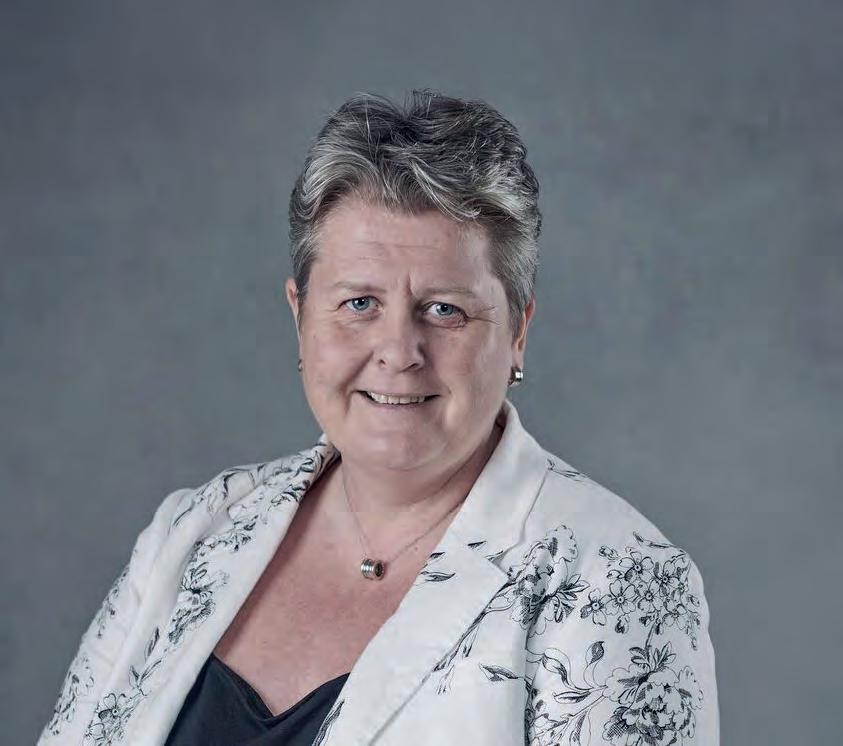
people to participate in grassroots community sport and recreation, and safeguard that within our planning system.
Planning applications must give proper and due consideration to fostering healthier, happier, more active lives in communities across the country.
Removing Sport England and other statutory consultees might have, at best, a marginal impact on speeding up planning decisions.
But it risks having a significant detrimental effect on the UK’s long-term growth prospects, as well as the quality of neighbourhoods and the activity levels of our children.
We will be working closely with members and sector partners to engage in the Government’s formal consultation in due course.”
Robert Sullivan CEO, Football Foundation
The Football Foundation, in supporting Sport England, plays a vital role in protecting and investing in community sports facilities. We believe every community should have a great place to play; and the individual, societal and economic value of these facilities is fundamental to the nation.
We are committed to delivering government investment in grassroots multi-sport facilities. We also recognise and support the ambition of the government to drive economic growth through development but believe this should not be to the detriment of quality sport facilities and the nation’s ability to get active and healthy.
Reform of the planning system should be focused on expediting the process, allowing for greater certainty for all developers, including the Football Foundation, as we seek to improve community sports facilities across England. We look forward to engaging in the consultation process in due course.”

The latest Active-Net networking event took place in March. Matthew Smallwood reviews the event, which attracted more than 100 delegates from across the physical activity sector
Two back-to-back days, packed with more than 100 like-minded peers from across the physical activity sector, each attending 16 personalised operator and supplier meetings to forge new connections. Throw into the mix seven inspirational guest speakers with unique insights and two high energy exercise classes and you have, in a nutshell, what active-net is all about.
Active-net is one of the UK’s leading physical activity networking events, blending a mix of education, insight and connection to create an approach that drives best practice, innovation and partnership. The format is designed to invite operators and suppliers from all aspects of the sector to meet, aiding each other’s expansion and progression, against a back drop of shared research and learning.
The event opened with a keynote speech by Mike Hill, founder of active-net. ukactive’s Marianne Boyle, CIMSPA’s Colin Huffen, Carl Bennet and Dr Hussain Al Zubaidi were then invited to take part in a panel discussion exploring the language of health.
The day also tackled key topics facing the sector right now – specifically, weight loss injections and whether they act as a friend of foe to the physical activity sector. On the topic, Dr Hussain Al Zubaidi provided his perspective on how the physical activity sector can position this movement. There was also a discussion on how investment from the NHS can benefit by driving new people into physical activity and evoke behaviour change alongside medical intervention.

Delegates were also given an opportunity to learn about data-driven decision making in a session led by Julie Allen, Business Development Director for Active Insight. The session also included Emma Bernstein, Sport England’s lead on Moving Communities; HireBOB.ai’s Tamara Bailey and Suzanne Gabb from Good Boost. The session shared a number of new findings from the recent Active Insight Consumer Panel, which took place earlier this year, looking at opportunities to improve data-lead decision making on secondary spend, service provision and retention.
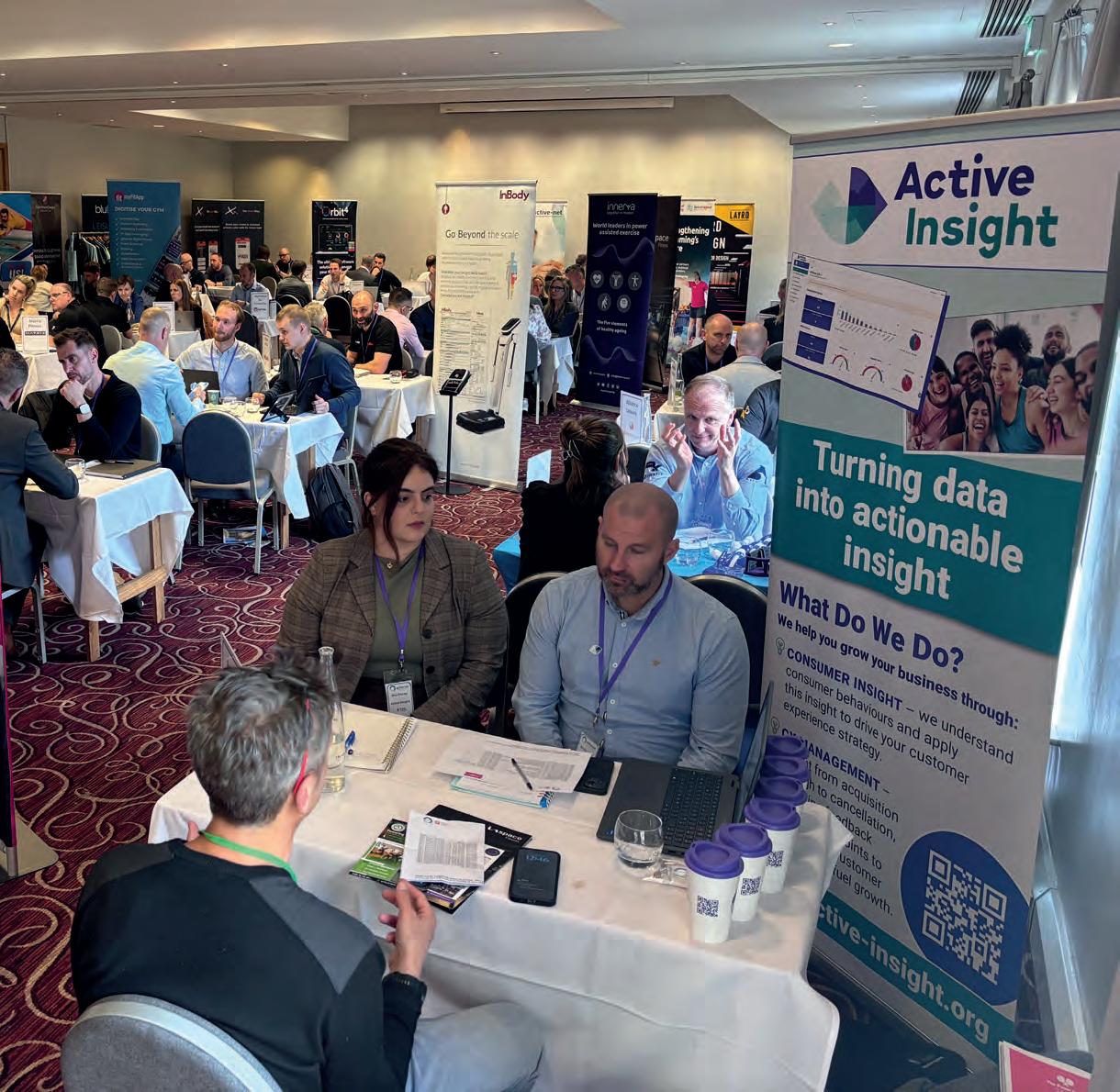
Following the presenter and panel format, delegates broke off into the one-to-one networking format, with pre-arranged 20 minute meetings between buyers and suppliers. A wide range of suppliers, ranging from uniforms, training and CRM solutions to equipment, had the opportunity to meet local authorities, LATCos, universities and leisure operators. During the meetings, new connections were made and old partnerships strengthened and developed.
With active-net’s headline event now completed for 2025, attention turns to the remaining
calendar of events. This include active-net Padel on 3 June – a brand new event focused on the fast growing padel sector – and activenet Education, which targets multi-academy trusts, county education authorities, independent schools and colleges looking to open up their sports facilities to their communities. Later in the year, Crieff Hydro will host an event aimed at the Scottish physical activity sector, while October will see the hosting of an event targeting the open water swimming market. l For more information on the active-net event series for 2025, please visit https://active-net.org/ or connect at https://www.linkedin.com/company/active-netuk







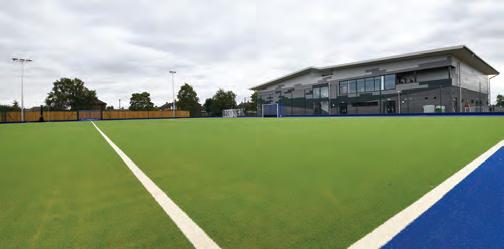













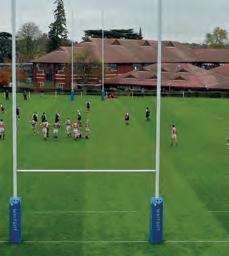









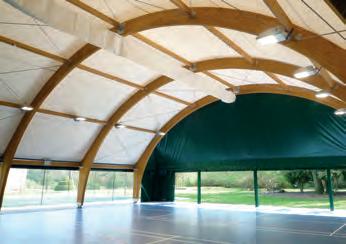








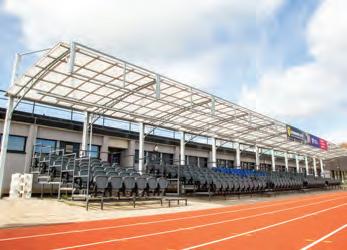












































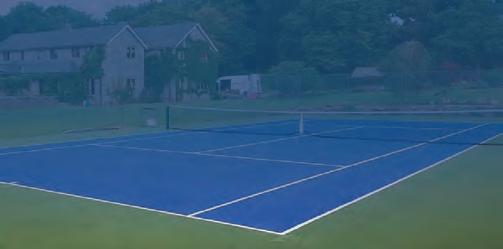
































































































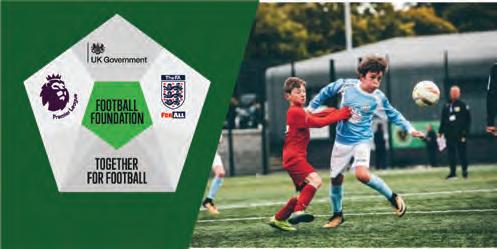












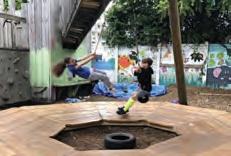
































Play England campaigns for all children and young people to have freedom and space to play throughout childhood.
We work with national partners and other organisations with shared aims to raise awareness about the importance of play. We lobby government to make fundamental policy changes to protect and promote play, and encourage everyone who has an impact

on the lives of children and young people to recognise and plan for children’s play.
Play England has also built up considerable experience and resources to help support individuals and organisations that work in these particular areas:
Government
Local Authorities
Schools
Playwork

We need your support
The new UK government is making positive noises about understanding the importance of play. However, against this positive backdrop, Play England is suffering from a lack of funds to pay for our essential work campaigning for children’s right and freedom to play. Donate today to support our work. www.playengland.org.uk/donate

www.playengland.org.uk






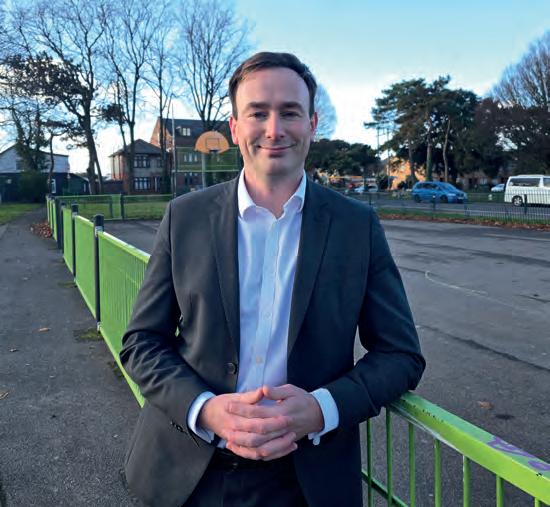

A round-up of the latest news and most recent facility projects from the play industry
There hasn’t been a new play strategy for England in 17 years – are we finally getting one?
The Labour MP for Bournemouth East is quickly becoming a true champion of the play sector. He reveals to PlayNation where his passion for play originates from
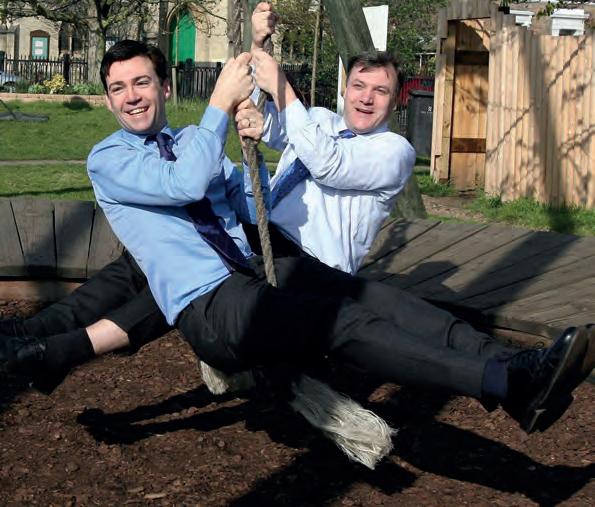

The publication of the Play Commission’s interim report has been hailed as a significant milestone in the journey towards improving the status of play for children across England. PlayNation takes a detailed look
Bournemouth, Christchurch and Poole Council has introduced a strategy for play with the aim of providing high quality, accessible, safe and inclusive play spaces for all. But how does it plan to implement it?




















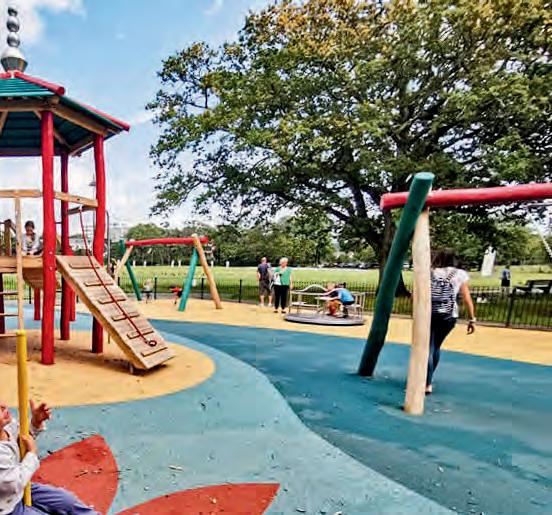
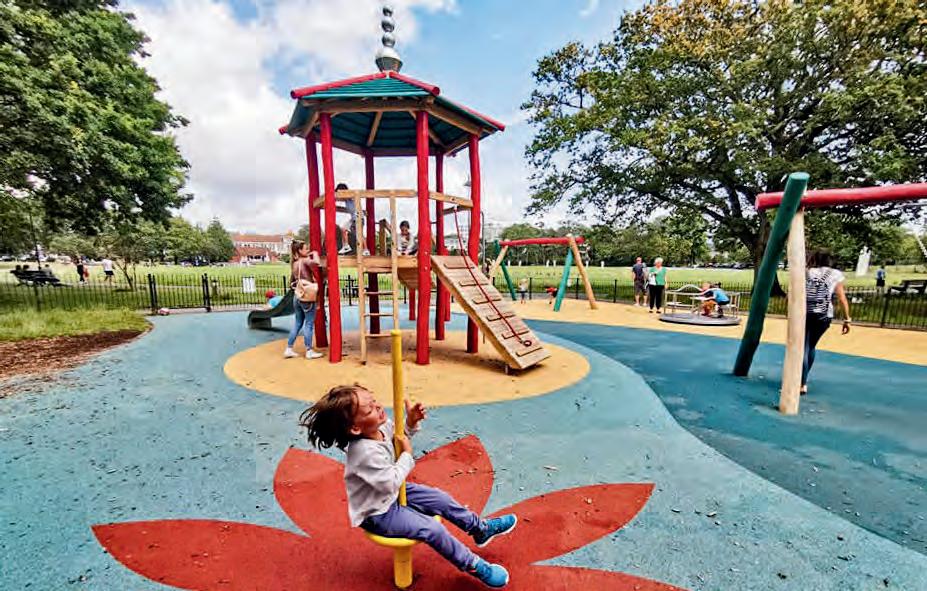
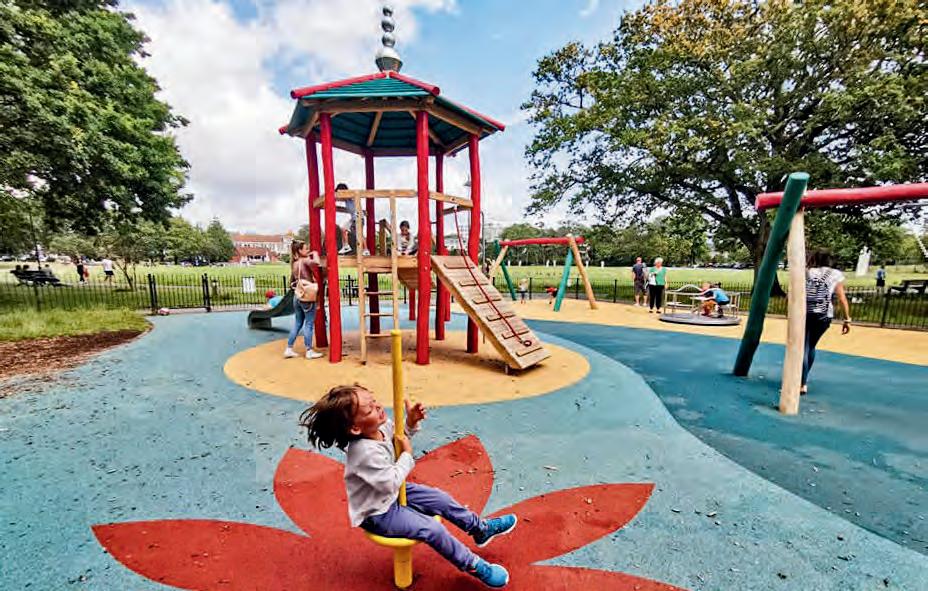




At Jupiter Play, we’re dedicated to delivering playgrounds that leave a lasting legacy. With our unique design approach, clients and end-users are included throughout every stage of the project, from render to reality.



DISCOVER OUR PROCESS today
Design-led Approach

Community Consultation
















3D Renders and Fly-throughs



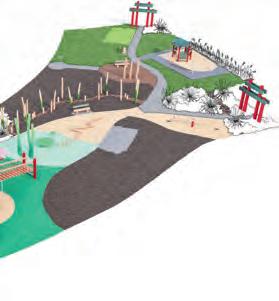

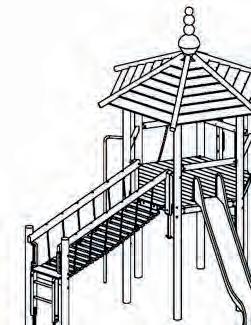

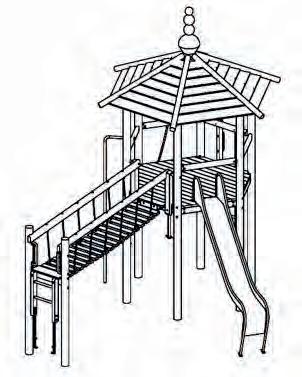
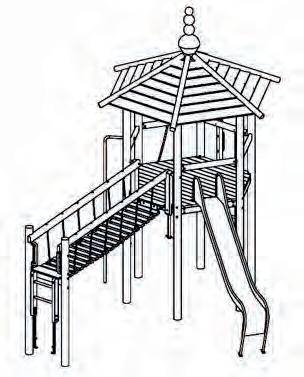
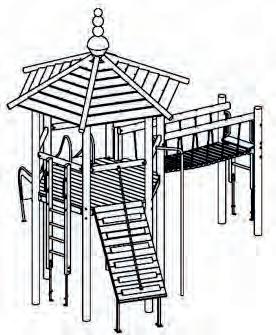
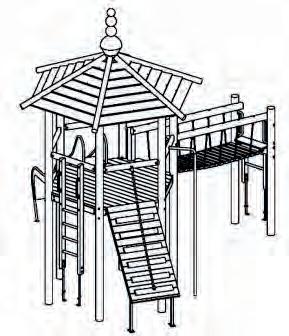

John Challinor
Publisher
PlayNation
john@nationmedia.uk

Millie Earl
Leader
BCP Council
@BCPCouncil
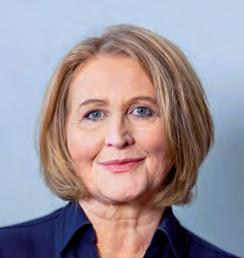
Baroness Anne
Long eld CBE
Center for Young Lives
@annelong eld





Tom Walker Editor
PlayNation
tom@ nationmedia.uk
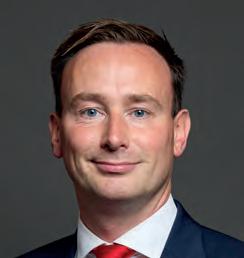
Tom Hayes MP
Labour MP for Bournemouth East
@TomHayesBmouth
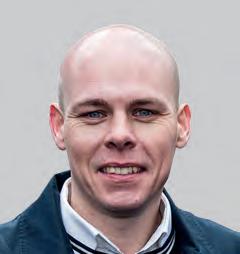
Eugene Minogue
Executive Director
Play England
@EugeneMinogue






PlayNation, in partnership with Play England and SAPCA (the Sports And Play Construction Association), is dedicated exclusively to the dynamic and growing sector of play and physical activity for children and young people. Published bi-monthly, the magazine focuses on the policies, people and places that help young people to play and be more active. Subscribe now and we will email you a complimentary copy of the magazine every two months.
This publication is protected by copyright and no part may be reproduced, transmitted or stored in any print or electronic format without the written permission of the publisher. Every effort has been made to ensure the accuracy of the contents of this publication and PlayNation accepts no responsibility for any error or misrepresentation. Opinions expressed by the contributors and advertisers are not necessarily those of the publisher and we do not accept responsibility of losses or damages arising from them. Printed by BCP Media Group Ltd. Advertising opportunities Contact John E: john@nationmedia.uk www.linkedin.com/ company/playnationmag @PlayNationMag
PlayNation is published by SportsNation Ltd in association with Play England (www.playengland.org.uk) and the Sports And Play Construction Association (www.sapca.org.uk)
Scotland’s First Minister, John Swinney, has dedicated £25 million worth of funding to local authorities to invest in the renewal of play parks across Scotland.
All councils will receive a share of the funding to improve the standard of existing play parks –helping to ensure children have access to safe environments to play and socialise in.
The funding is supported by the Play Vision Statement and Action Plan for 2025-2030, which was published last month (March 2025).
Swinney said: “Playing is key to a child’s healthy development, and by enabling councils to invest in outdoor play parks, we will ensure families can access a safe, high-quality place to play within their communities.
“This is all part of my driving mission to eradicate child poverty. Other steps we are taking include investing £3 million to develop mitigations for the UK Government’s two-child benefits cap, £37 million to deliver the

expansion of the free school meals programme, and putting more money in families’ pockets through the Scottish Child Payment.”
The Convention of Scottish Local Authorities (COSLA), the organisation for Scottish Local Government, welcomed the news.
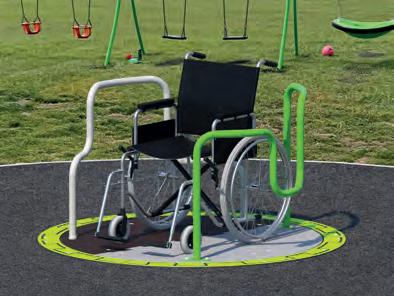
COSLA Spokesperson for Children and Young People, Councillor Tony Buchanan said: “The launch of the Play Vision Statement and Action Plan is very important not just for the enjoyment it brings, but also for the part it plays in developing social skills, interests and curiosity.”
Sutcliffe Play has added a new product to its expanding range of inclusive play equipment. The new Small Inclusive Roundabout is a compact, durable spinner which offers thrills for children of all abilities. A pair of shaped handrails provide standing and seated support while forming a safety stopper for wheelchairs, enabling users to spin in comfort and with peace of mind. The roundabout’s deck features a non-slip surface, a floor graphic to indicate optimum wheel position and an inspection hatch to monitor underground conditions. The outer rim is coloured in contrasting lime green, aiding partially sighted users.
Work has been completed on a new soft play facility at Kings Park Leisure and Learning Centre in Boscombe. Owned by BCP Council and set to open at the beginning of April, the new facility was created as a result of direct community feedback, which highlighted the need for affordable local indoor leisure activities for young people.
As well as brand new soft play facilities, upgrades include an extended café/multi-use function space, new heating and ventilation throughout the centre and improved accessibility with new ramps.
An additional £100,000 has now been secured from central government to install a multiuse sports floor with work set to be complete before 1 April.
This will provide an enhanced leisure offering and mean sports such as badminton, pickleball and martial arts can be introduced. The

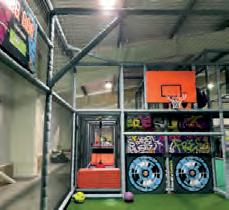

The facility was created as a result of direct community feedback
centre currently supports more than 2,000 individuals who are enrolled on to the Adult Skills and Learning courses on the first floor. The ground floor is home to 500 members of the internationally competitive Bournemouth Elite Cheerleaders.
It is anticipated that the new refurbishments will see an additional 11,000 participants take part in sports and activities.
Cllr Richard Herrett said: “The facility will help generate income which the Council can then reinvest.”
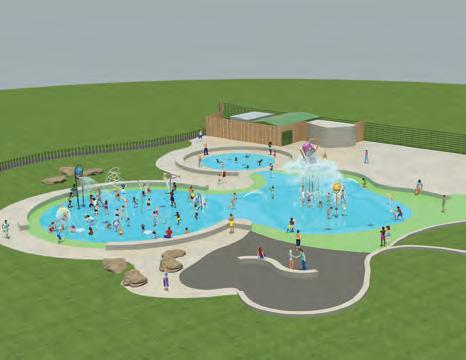
The park has a paddling pool and splash pads
Rotherham Metropolitan Borough Council is working with Ustigate Waterplay on a new water play facility, which is set to open at the town’s Clifton Park for the 2025 season.
Originally created in 2008 as part of a Heritage Lottery Funded project, the waterplay area has been a firm favourite among children and families for the last 15 years. The environmentally friendly revamp will now bring the park back to life.
The new £900,000 facility – delivered by Ustigate – will include enhanced safety standards and modern, interactive equipment, which will encourage imaginative and active play. Improved accessibility will ensure all children can enjoy the space, which will encourage learning about water conservation and the environment.
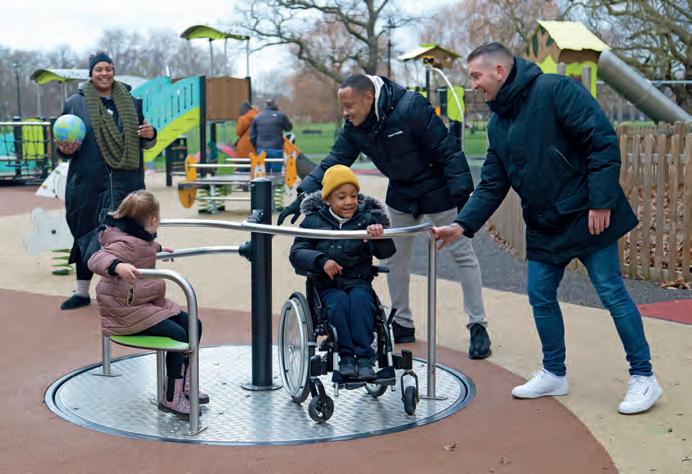
Lambeth Council identified the need for a fully inclusive playground in Clapham Common, as existing play areas did not meet all users’ needs.
The goal was to create an inclusive space that would achieve a PiPA (Plan Inclusive Play Areas) gold award.
Following a tender process, Proludic was awarded the contract to design a 1,400sq m playground where children and families could play together.
The zonal design featured 45 pieces of inclusive play equipment and underwent an
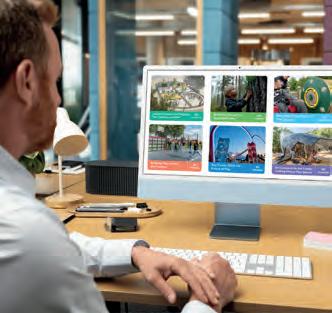
The webinar will explore the merits of ditching a “throwaway culture”
independent PiPA assessment, achieving the highest gold award.
The project – which had a total cost of £405,091, made up of different obligations for S106 funds to be spent in and around the vicinity of the Common – involved local councillors and the Friends of Clapham Common to ensure community needs were met.
The nature-themed design focused on a woodland journey, with Diabolo and Adventure multiplay units, accessible ramps, a sensory path and interactive panels.
In 2021, Frome Town Council commissioned Children’s Scrapstore Bristol to write a four-year play strategy for the town. The recommendations and ambitions of the strategy encouraged the development of parks and green spaces in which people could play, as well as offering the time and permission for everyone in the community to enjoy the social and wellbeing benefits of play.
Since the launch of the strategy, the council has committed to embedding the recommendations laid out in it into its work programme and management plans for green spaces and parks across the town.
Developments have included localised ‘door step’ pop-up play sessions with local providers and a children’s takeover of the town hall, to name but a few.
Among the biggest projects has been the redevelopment of the Showfield playpark, which was funded by Section 106 money.
Designing playgrounds for resilience involves creating spaces that can adapt to the changing needs of children, communities and the environment over time.
Jupiter Play & Leisure is hosting a webinar on the topic, exploring how moving away from a “throwaway culture” can foster truly long-
lasting play areas. Among the areas discussed will be how – by prioritising durable, sustainable materials and flexible design principles –playgrounds can become more than just short-term entertainment and serve as an enduring community resource. To sign up, visit: jupiterplay.co.uk/our-webinars/
Four in 10 children in Northern Ireland and Ireland say a lack of play space is the biggest barrier to their play. The finding comes from a recent survey conducted by PlayBoard NI and the National Childhood Network in the Republic of Ireland.
It also found that half of children and young people do not have enough time to play, more than a fifth have no one to play with in their area and almost a quarter are concerned about traffic. These barriers are standing in the way of children and young people’s well-being and enjoyment of their free time, as 93% agree that play is important, 81% say it makes them happy, and 50% report that it keeps them active. With the newly formed coalition government, the two play organisations say that there is now a critical opportunity to protect, promote and prioritise

The study shows that half of children do not have enough time to play
children and young people’s opportunities for play and to make a positive impact on their lives.
Alan Herron, CEO of PlayBoard NI, said: “Similar to the feedback from children, our recent survey shows that children and young
people need more places to play, easier access to these spaces, and more time to enjoy them.
“In 2023, the UN Committee on the Rights of the Child identified a number of key actions for the Irish government.”
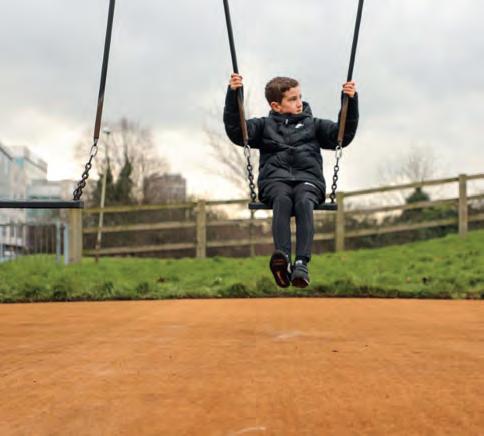
CocoTurf has been designed to be durable
SAPCA member, Notts Sport, has launched CocoTurf, the world’s first non-plastic artificial turf made entirely from natural coconut fibres. The product aims to offer a sustainable, ecofriendly solution for playgrounds and recreational spaces, combining durability, performance and environmental responsibility.
Notts Sport says it wants to “redefine the concept of artificial turf” by eliminating the use of plastics, microplastics and per- and poly-fluoroalkyl substances (PFAS), all while maintaining the high standards of performance and safety expected from play surfaces.
The materials used in CocoTurf are entirely natural and non-toxic, providing a safer option for outdoor play without the environmental concerns typically associated with artificial turf.
sutcliffeplay.co.uk
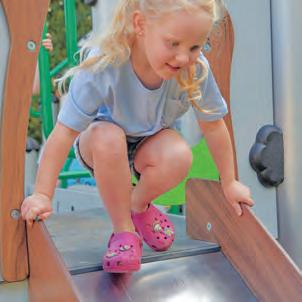
We design play equipment and play spaces that open up play to all abilities.
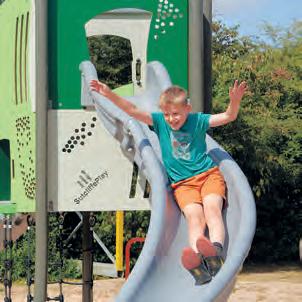
Our skilled engineers and fabricators all take pride in putting quality first.
Your local British Manufacturer leading the way with sustainability, quality and after sales support.





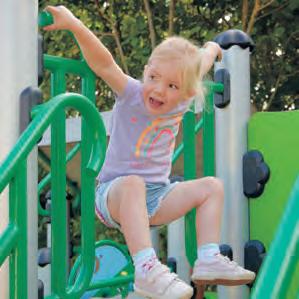
Sourcing and manufacturing locally is the most sustainable solution for all.

Our local designers are ready to consult and help design your next play project, give us a call on +44 (0)1977 653 200 or email info@sutcliffeplay.co.uk






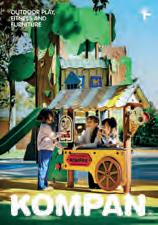























London Sport has partnered advertising agency Saatchi & Saatchi to launch a compelling new campaign, More Ball Games, to highlight the need for unlocking sport, play and physical activity opportunities for all.
The campaign will lobby policymakers to take urgent action to remove outdated and restrictive ‘No Ball Games’ signs that stifle play, physical activity, and community connection across London and England.
It is estimated that around 7,000 “No Ball Games” signs remain across London alone.
The “Banksy-style” campaign looks to remove the thousands of signs, or amend them to “more ball games”, across London – and eventually across the UK.
The campaign was launched in Lambeth, South London, where – with the support of the London Lions basketball team – London Sport helped local youngsters transform an infamous ‘No Ball Games’ sign into an invitation for play.
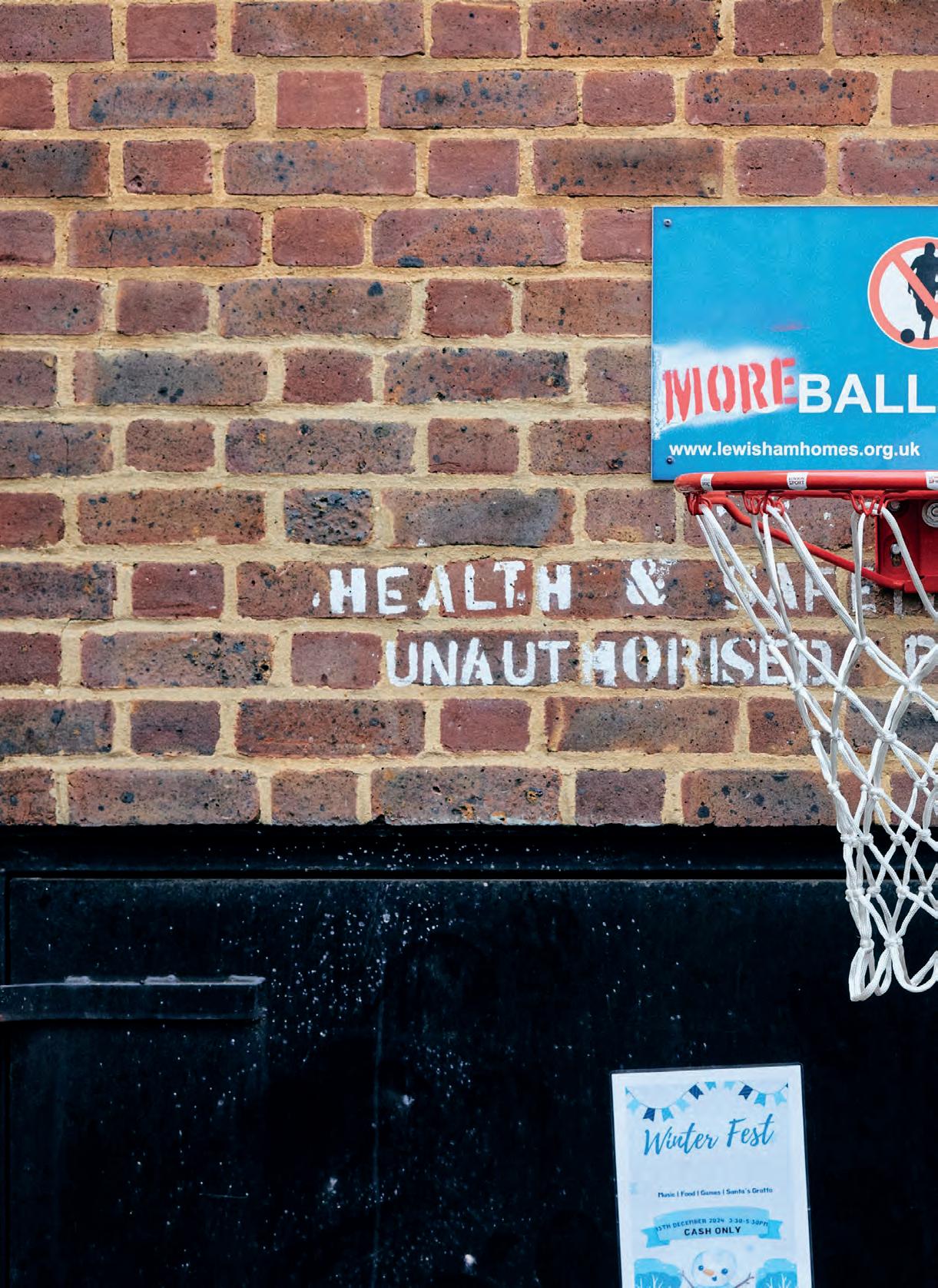
The first reimagined sign, now a fully functional basketball hoop, was unveiled at Lambeth’s Mursell Estate.
Members of the public are invited to join the More Ball Games movement and sign a petition (www.change.org/p/join-the-moreball-games-movement-reclaim-physicalactivity-movement-and-play) to demand the removal of No Ball Games signs, reimagine public spaces and commit to removing systemic barriers to play, sport and physical activity, particularly in disadvantaged communities.
Companies and brands are also encouraged to join the More Ball Games movement and work

No Ball Games signs are a ban on play, a ban on health and a ban on fun
Franki Goodwin, CCO, Saatchi & Saatchi
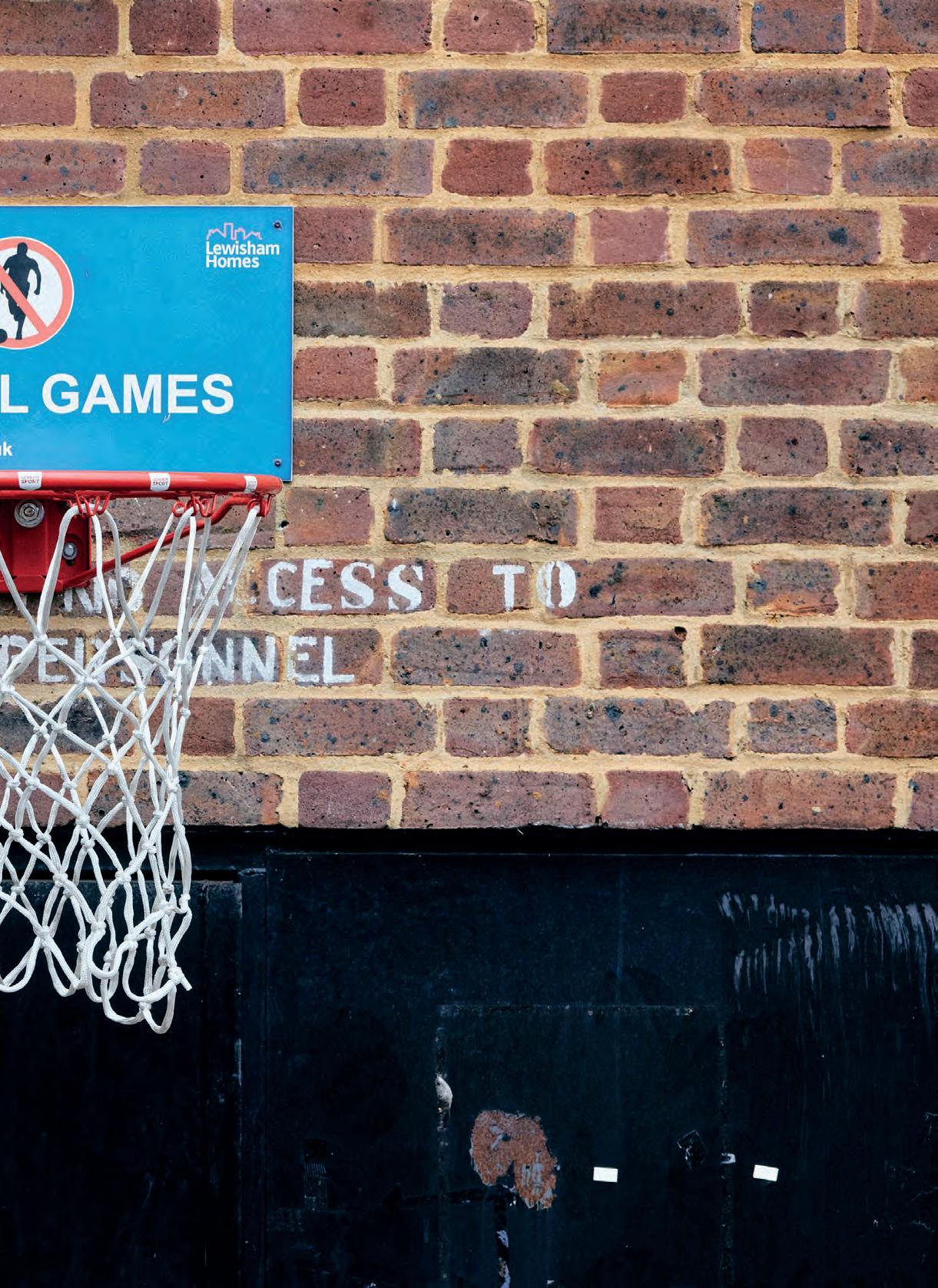
with the charity to drive change together.
Franki Goodwin, CCO, Saatchi & Saatchi said: “No Ball Games signs are a ban on play, a ban on health and a ban on fun.
“They are placed in the heart of communities full of kids. When you stop to think about how damaging and pernicious they are you can’t believe they have endured for 50 years.
“We are so proud to partner with London Sport to reclaim these spaces and to turn them into resistance movements. We believe this work will drive real social change and we’re honoured to be a part of London Sport’s mission and help tackle the
physical inactivity crisis in the capital.“
Tanya Rabin, Director of Fundraising, Marketing and Communications, at London Sport, added: “Thanks to Saatchi & Saatchi, this campaign will help us elevate the issue and strengthen our advocacy efforts. This is not just about removing signs – it’s about creating a culture shift that prioritises play, movement and physical activity as essential to healthy childhoods, thriving communities, and public well-being.
We can’t do this alone and so are calling on other like-minded organisations to join us in collective action towards a healthier city.”
Eugene Minogue Executive Director,
Seventeen years ago—on 2 April 2008 – the last Labour government launched England’s first, and only, National Play Strategy.
Ed Balls and Andy Burnham, both Secretaries of State at the time, quite literally swung into action at an adventure playground in South London to mark a moment that was set to transform play in England for a generation.

Developed in partnership with Play England, the strategy was bold, ambitious and forwardthinking. Backed by £235 million, it aimed to create 3,500 new play spaces across every local authority – including 30 staffed adventure playgrounds. More than just playgrounds, it set out to embed play into planning, housing, schools, transport and public space.
And crucially, it recognised play as a right – not a luxury – vital to children’s health, happiness and development.
But just two years later, the coalition government pulled the plug on play.
What followed? A wilful collapse in political leadership, and subsequently the steady erosion of play provision and play policy across England – adventure playgrounds disappeared. Playworkers were forgotten. Playgrounds rotted. Inequality deepened. And children have been paying the price ever since.
Seventeen years! That’s an entire childhood, from birth to adulthood, without any national commitment to play.
This is nothing short a generational failure. Millions of children missed out on the opportunities, experiences and freedoms they should have had. And we’re now seeing the consequences – rising anxiety, falling wellbeing, and fragmented communities.
An independent national evaluation had been commissioned to assess the strategy’s impact – and early findings were promising. As the interim report noted, “there is evidence that the new play areas were beginning to have a positive effect on children’s experiences of and attitudes toward play.” But just as this progress began to take hold, the strategy –and the evaluation – were abruptly ended.
Imagine if the strategy had been delivered as envisioned, right through to 2020. What happier, healthier, more resilient shape our children might have been in as they emerged from the pandemic years.
We can and must do better – for our children and future generations.
That’s why Play England boldly continue our call for a new National Play Strategy, this time underpinned by Play Sufficiency legislation.
This is nothing short a generational failure. Millions of children missed out on the opportunities, experiences, and freedoms they should have had
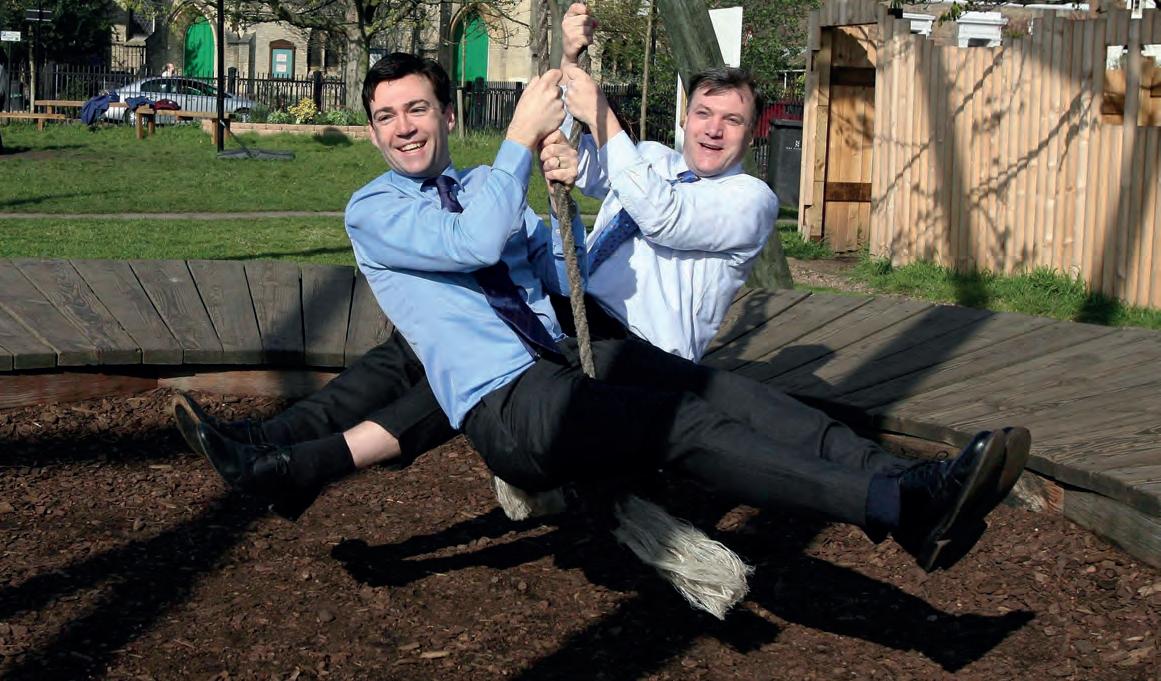
It’s time to finish what we started and give children their childhood back. Every child deserves the time, space, and freedom to play
A growing movement
Momentum is real and growing. In the past year alone, Play England’s advocacy has delivered results:
l Secured legislation to make public playgrounds smoke-free
l Won a key change to the National Planning Policy Framework to protect play spaces
l Put play back on the political agenda, shaping national debate on play
In January, Tom Hayes MP led the first parliamentary debate on play in over a decade. MPs from across the House and the Minister backed our call – not just for a new National Play Strategy, but for Play Sufficiency legislation requiring every local authority to assess and secure play opportunities for all children.
The 2008 strategy was ahead of its time. Its core principles – universal access, inclusive design, local leadership, and meaningful participation – remain rock solid, and even more relevant today than ever.
It’s time to finish what we started and give children their childhood back. Every child deserves the time, space and freedom to play. That’s why, on 13 May, we’ll launch Play England’s new organisational strategy at the Houses of Parliament, hosted by Tom Hayes MP. We’ll bring together over 100 senior figures – MPs, peers, sector leaders, funders and decision-makers – to put play back where it belongs: at the heart of public life.
And that’s not all, it will also mark the launch of a new All-Party Parliamentary Group (APPG) for Play – a cross-party coalition of Parliamentarians committed to building long-term political will and accountability around children’s right to play.
This isn’t just a launch. It’s a turning point – for children, for play, and for Play England. But we can’t do it alone. To build a future where every child can play, we need your support – as funders, partners and champions. Financially. Politically. Publicly.
If you believe in play, now is the time to act. Want to help? Contact: eugene.minogue@playengland.org.uk
In January, Tom Hayes MP secured and led a pivotal parliamentary debate on playgrounds and local authorities. In an exclusive for PlayNation, he outlines how the debate was a result of his passion for play and how he now plans to revive a National Play Strategy for England
On 8 January, I stood up in Parliament to lead the first debate on playgrounds in nearly a decade and the longest for 17 years. I did so because parents, grandparents, and community groups in my constituency of Bournemouth East kept telling me the same story: local parks are broken, fenced off, or simply no longer there – and nobody seemed to care. When children’s play is allowed to deteriorate like this, many families take it as a sign: “Politicians don’t care about us.” Parliament has overlooked something so important to families, and I couldn’t shake the feeling that if politics ignores the basics – like whether your park ever opens or not – people will lose faith in democracy.

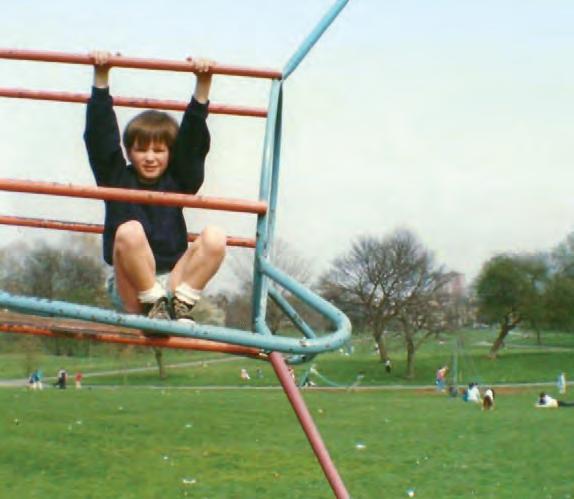

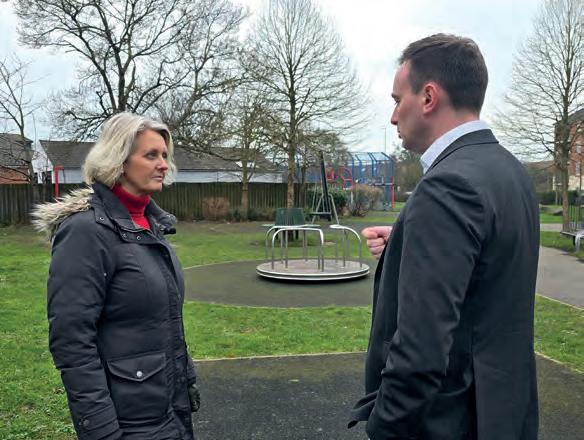
When I launched a survey, I was unsure if people would feel too hopeless to share their stories. I shouldn’t have been worried at all: as of writing, more than 700 people have joined this campaign.
First, I suppose I should go back to why. Despite the tireless efforts of organisations like Play England, playgrounds have quietly slipped off our political radar.
I heard this loud and clear during a recently held roundtable with parents – including some who have launched a grassroots movement to improve local playgrounds. They talked about families living in flats with no outdoor space, the rising cost of leisure activities, and the easy allure of a screen.
Screens are a big problem, but they’ve been seen as a solution to the lack of play
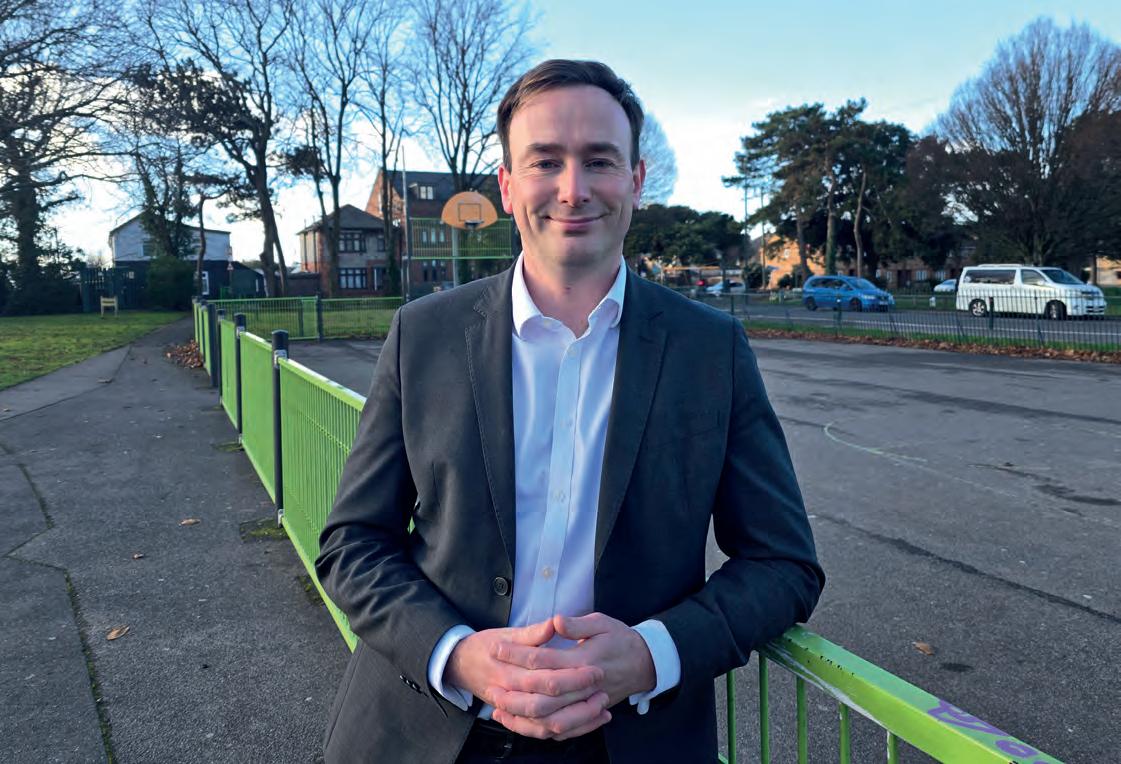
opportunities. They wanted their children to have somewhere to explore, invent games, and just be kids without it costing a fortune.
It was only fitting, then, that when I secured my first Parliamentary debate, it would be on playgrounds. This would be the first to happen in 17 years. To put that in perspective, there are teenagers sitting GCSEs who weren’t alive when Ed Balls and Andy Burnham introduced England’s first (and only) National Play Strategy. What started as a small roundtable in Bournemouth had become something much bigger: an hour in Westminster Hall, with a Minister responding, talking about our playgrounds, and – crucially – cross-party interest in a topic we hadn’t touched in nearly a decade.
I took the words of my constituents, some of the 642 who had responded to my survey before the debate, and brought them to Westminster. Mums who had found solace and friendship on a park bench, grandparents whose grandchildren grew up on monkey bars long disappeared, people who feel strongly about the next generation having somewhere to play.
A sharp reminder that playgrounds aren’t just “nice-to-have”.
Three months on
Local media like Politics South and BBC Radio Solent picked up the story, and I’ve been flooded with messages from parents who felt relieved that someone was finally taking playgrounds seriously. On doorsteps around Bournemouth East, it’s fast become one of
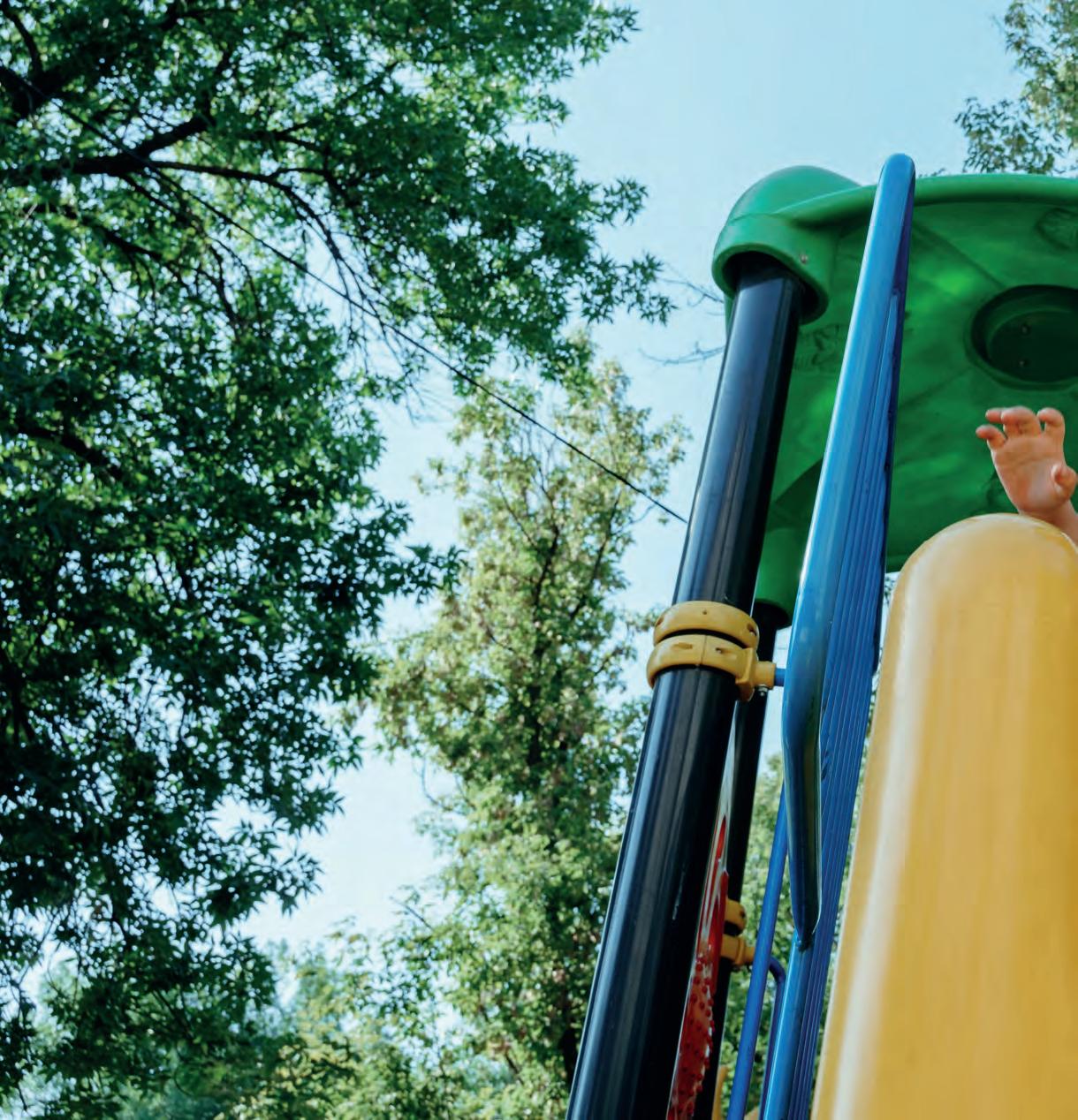

the most frequently discussed issues – right up there with housing, healthcare and rising bills.
Just as importantly, Bournemouth, Christchurch and Poole (BCP) Council has agreed to provide £3.9 million to overhaul and replace play equipment in our area, turning what was an aspiration into a promise. I welcome this investment, but parents don’t need to be let down yet again after their hopes have been raised. I’m pushing them to speed up the repairs so local families can see real improvements sooner rather than later.
For me, the spotlight on playgrounds isn’t just about repairing swing sets. It’s about recognising the role play has in children’s physical and mental wellbeing. That’s why I’ve folded these insights into my work on the Children’s Wellbeing and Schools Bill as one of a handful of MPs scrutinising the draft law. I’ve ensured that play is acknowledged as a key ingredient in healthy childhood development.
I’m also in discussions with the government
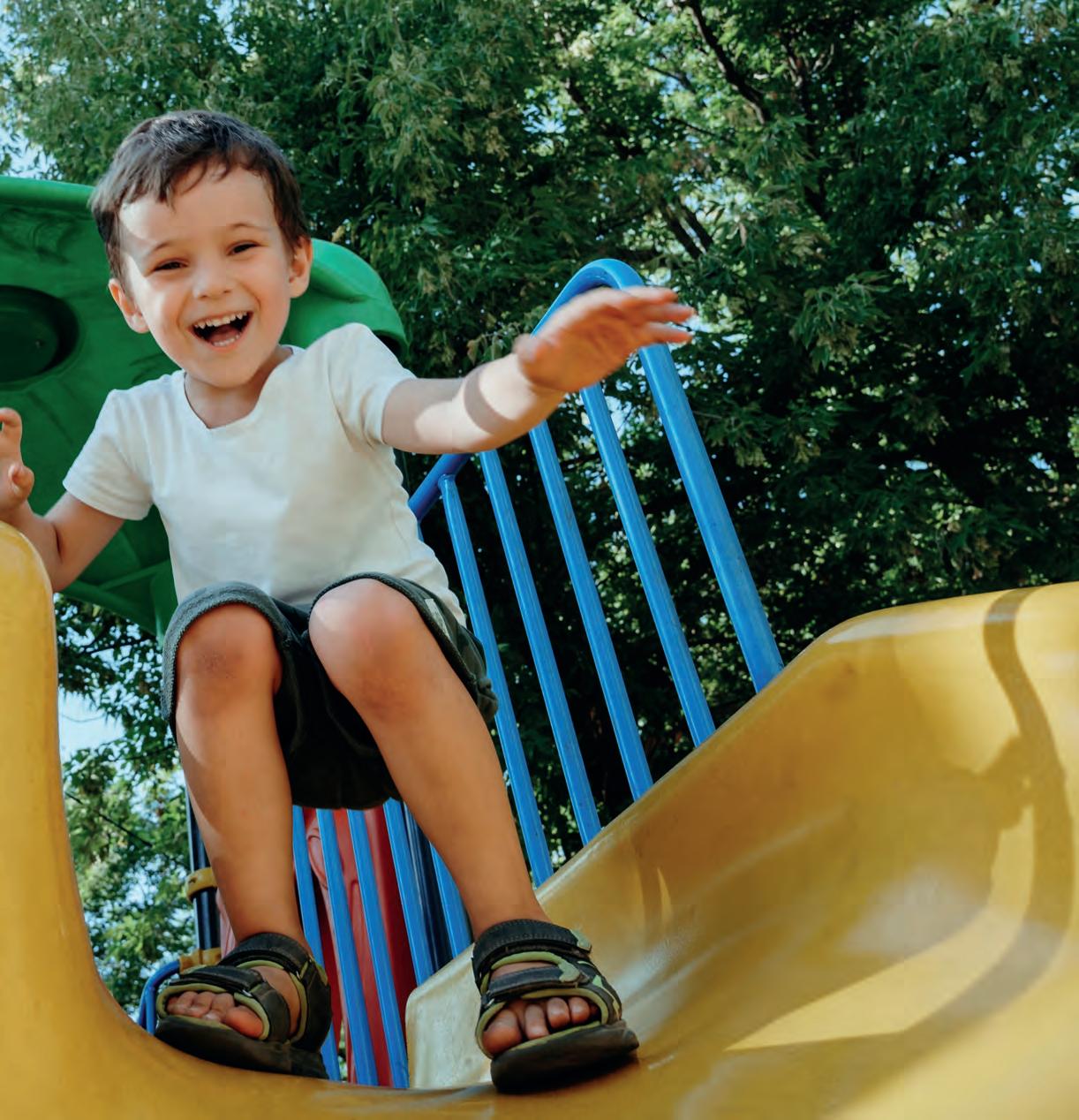
about reviving the National Play Strategy that was effectively shelved 17 years ago, as well as exploring how “play sufficiency” can be embedded into law – much like it is in Wales. If we can make progress on these fronts, local authorities could be required to treat playgrounds as essential infrastructure, opening up further funding streams and bringing new life to run-down parks across the country.
This is all so important, especially with growing concerns about the impact of social media and extensive mobile phone use on children. So many of the concerns parents have raised with me about these issues are explicitly linked to play and playgrounds. The biggest one seems to be that part of the reason children are on screens is because there’s nowhere for them to play. An unscientific survey of pupils at a local school in Bournemouth saw nearly all of them say that they would spend less time on electronic devices if their local playgrounds were better. As the saying goes: build it and they will come.
What has struck me most is how many parents link playground neglect to a deeper sense of being overlooked. If we can’t fix a single broken roundabout, how can we tackle monumental challenges like housing shortages or NHS waiting lists? On the flip side, by showing we care about something as tangible and everyday as local parks, we help restore confidence in the idea that politics can respond to real-life needs.
Three months on from the debate, I’m determined to keep the momentum up. Whether it’s pushing BCP Council to accelerate repairs or lobbying for a refreshed national play strategy, my aim is simple: to ensure that children in Bournemouth – and everywhere else – have safe, welcoming spaces to be active, sociable and imaginative.
Because if we want to raise a generation that values community and civic life, we can’t ignore something as fundamental as a place to play.
The publication of the Play Commission’s interim report, State of Play, has been hailed as a signi cant milestone in the journey towards improving the status of play for children across England
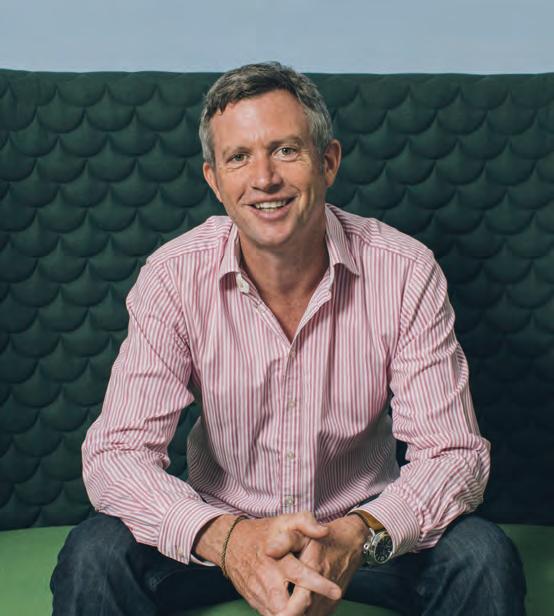
Paul Lindley OBE
We can’t continue to watch as our children become increasingly unhealthy and unhappy


The Raising the Nation Play Commission published its interim report, State of Play – Raising the Nation, in February. The play sector hailed the publication as a “significant milestone” in the journey towards elevating the status of play in society. The interim report provides initial findings and recommendations, with the full report – covering all themes of the Commission – set to be published on 11 June 2025.
The Commission was launched in June 2024 by its chair, entrepreneur and campaigner Paul Lindley OBE – founder of Ella’s Kitchen, the UK’s biggest baby food business. It is working in partnership with former Children’s Commissioner Baroness Anne Longfield’s Centre for Young Lives think tank.
The commission’s interim report reveals some of the growing barriers to play in England, including playground closures, concerns about traffic and safety, cuts to park budgets and play facilities, and the growth of a ‘No Balls Game’ anti-play culture. It warns that generations of children are spending less time playing, less time outside, less time with their friends, and more time inside glued to digital tech, at a time when millions of children are growing up unhealthy, unhappy, and not ‘school ready’.

Play is a crucial tool for reversing the growing number of children with obesity, mental ill health and developmental problems. It’s time to get our children playing again
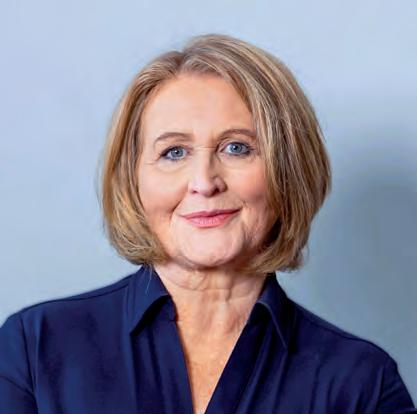
Baroness Anne Longfield CBE
Play is being squeezed out of their lives, and the consequences for their mental and physical health, and their development, are dire
The report sets out the huge benefits of play for children and calls on the Government to introduce a National Play Strategy to ‘get children playing again’, alongside a legally binding requirement for councils in England to provide play facilities and opportunities for children, new funding for playgrounds, and a review into the use of ‘No Ball Games’ signs.
The Interim Report lays down foundations for a play strategy for England to be proposed to the Government in the commission’s final report in June. The report argues that a National Play Strategy is more urgent than ever, with around four in 10 children living with an unhealthy weight, more than a quarter of children overweight (including obese), one in five children and young people in England struggling with a diagnosable mental health problem, and around one in three children not school ready.
The report also reveals how, despite the immense benefits of breaktimes to children’s development and learning, play time has been squeezed out of the school day over a 25-year

period. It analyses four national surveys carried out in 1995, 2006, 2017, and 2021, shared with the Play Commission, which show the significant decline in average total breaktime in minutes per day in England’s schools between 1995 and 2021.
Baroness Anne Longfield CBE, Executive Chair of the Centre for Young Lives and former Children’s Commissioner for England, said: “Generations of children are now growing up spending less time playing, less time outside, less time with their friends, and more time inside, glued to phones and social media.
“Play is being squeezed out of their lives, and the consequences for their mental and physical health, and their development, are dire.
“This interim report puts forward positive, workable, evidence-based proposals to support those aims, including a crossGovernment National Play Strategy for England that would boost those ambitions.”
According to the report, the youngest school children in England have lost 23 minutes breaktime a day, on average, when compared to their counterparts in 1995. The average total time dedicated to breaktime in a day fell by 18 minutes over the same period for older primary school children, and by 17 minutes for Key Stage 3 children.

It also shows how breaktimes have fallen most sharply in primary schools in the most deprived parts of England. Schools with a higher proportion of children in receipt of Free School Meals have shorter breaktimes. While state secondary schools have seen a significant fall in breaktime, there has been no discernible decline in the time devoted to play in England’s private schools since 1995.
The report argues that an overbearing national curriculum and highly pressurised accountability system has led many schools and teachers to view breaktimes as nothing more than a loss of valuable teaching time. It also warns that many schools are punitively withholding breaktimes from children for behavioural reasons.
The report also highlights how children have been “designed out” of public spaces. The spaces that could accommodate them are disappearing and nothing is being put in place to replace them.
“In the public realm, formal spaces to playsuch as local playgrounds - have been closed at an alarming rate,” the report states. “Playing out on local streets in the community has also declined, as a result of more cars now occupying these spaces and concerns about crime growing.
“Across all spaces, whether it be local playgrounds or public space, the planning system often overlooks the needs and views of children, creating spaces which are inaccessible, unsafe, or even unwanted. Typically, this disproportionately impacts girls, children with special educational needs and disabilities (SEND), children from low income backgrounds, and ethnically minority children.”
To tackle this, the report recommends a process which would guarantee investment into spaces designed for children
“To ensure children have safe places to play, we support the introduction of a Play Sufficiency Duty, to provide a framework and guidance for local authorities to protect and provide opportunities to play,” the report says.
“This should encourage creativity at a local level to adapt and evolve places, such as by opening school playgrounds for wider community use outside of the school day. We also recommend a realignment of the planning system, so that it is able to serve children and young people’s needs. This includes requiring developers to consult children on their views on the spaces which they will live in and use, as well as ensuring that they recognise the need of all children and young people to have access to outdoor and green space.”
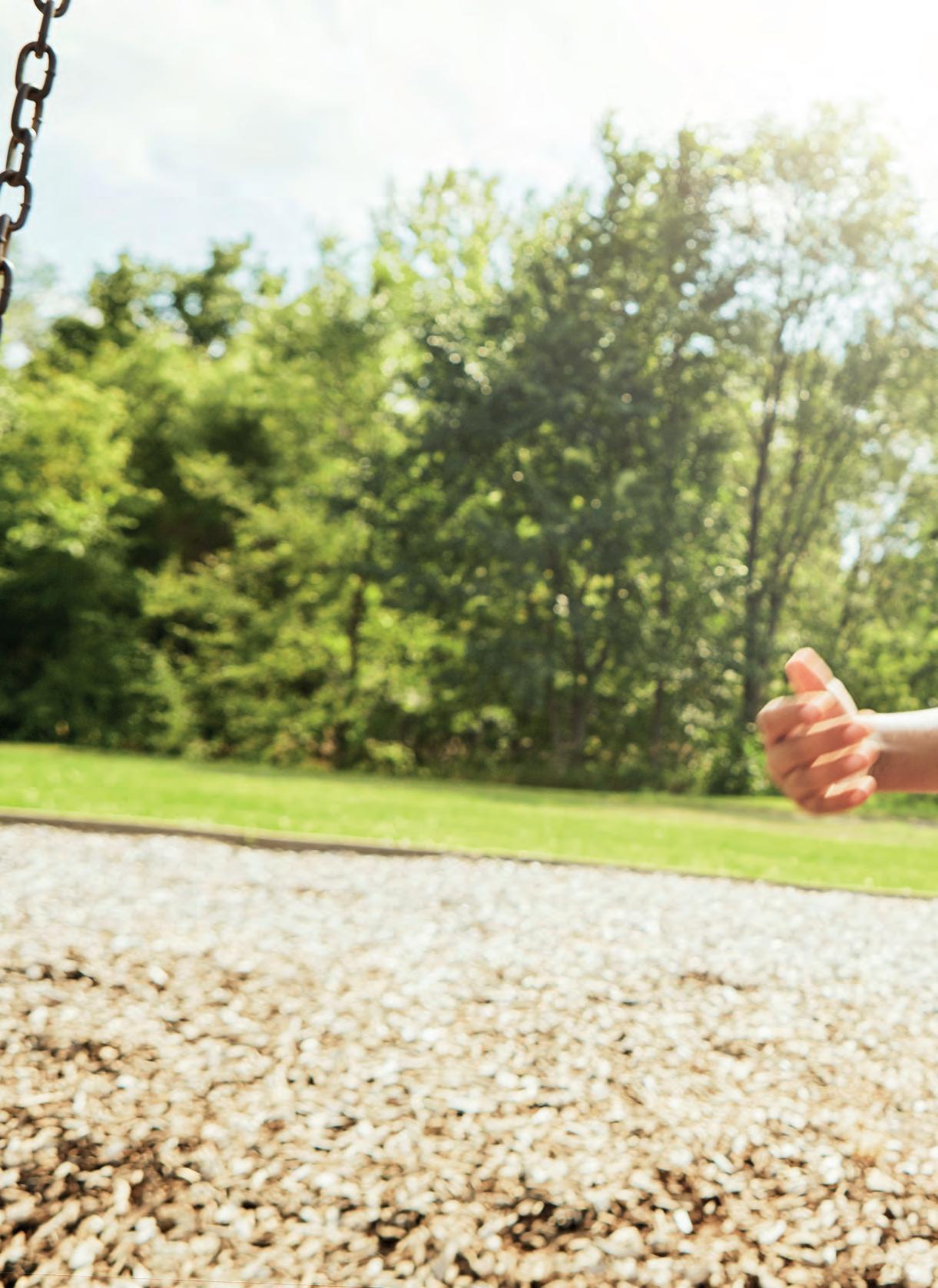
The report recommends a process which would guarantee investment into spaces designed for children
The full and final report will be published in June and the message of it will be simple: England needs a play strategy. The publication date is no coincidence either – 11th June is the International Day of Play.
Paul Lindley OBE, Chair of the Raising the Nation Play Commission, said: “Play should be a crucial part of growing up. It improves development, physical and mental health, social skills, and school readiness.
“Yet our Commission has heard countless examples of how England’s children are missing out on the same play opportunities that their parents and grandparents enjoyed. An anti-play, ‘No Ball Games’ culture has emerged. Hundreds of playgrounds have closed, half of all youth centres have gone, school playing fields have been sold. Our streets and public spaces feel less safe, and children are losing hours of play time at school every month.
“We can’t continue to watch as our children become increasingly unhealthy and unhappy. Play is a crucial tool for reversing the growing number of children with obesity, mental ill health, and developmental problems. It’s time to get our children playing again.”


The State of Play report makes a range of evidencebased recommendations to government to reverse the loss of play time in schools, including:
● Calling on government to establish the first National Play Strategy for England since 2008 led by the Department for Culture, Media & Sport. The strategy would set out a clear, long-term vision to ensure children can easily access and enjoy places to play in public, at school, and at home.



● New statutory Department for Education guidance to ring-fence time within the school day for breaktimes and lunchtimes, and support for The British Psychological Society’s call for an extra 10 minutes of play to be restored to the school day.
● Ofsted to include play sufficiency – specifically time to play - as a measure of school performance to encourage schools to boost play in school

time and reward those schools who value play highly.
● School teachers, staff, and supervisors to receive high-quality and mandatory play training to enable healthy and active breaktimes and playful learning.
● Ring-fenced funding for local authorities to maintain and renovate playgrounds and provide new ones in playground deserts.
● The adoption of a legally binding Play Sufficiency Duty for England, bringing England into line with Scotland and Wales, to ensure that local authorities provide sufficient play opportunities and to communicate them to parents and families.
● A Review of the use of ‘No Ball Games’ signs and update byelaws for Parks and Open Spaces to create a more welcoming, healthier, and active environment.
● A national campaign to encourage and support parents to play with their children, as part of the drive to improve school readiness.


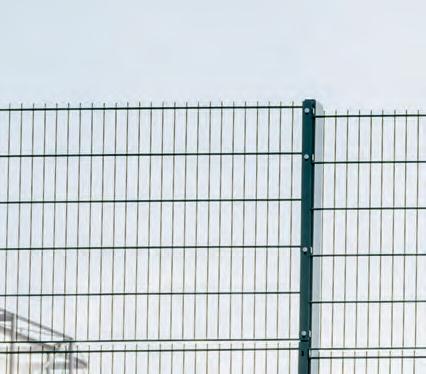
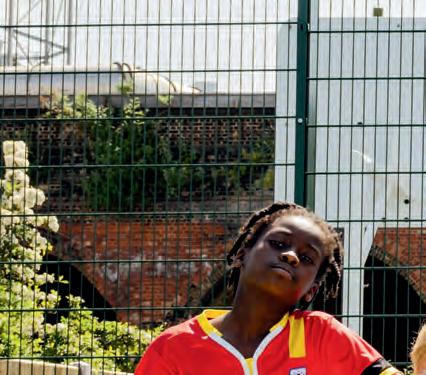
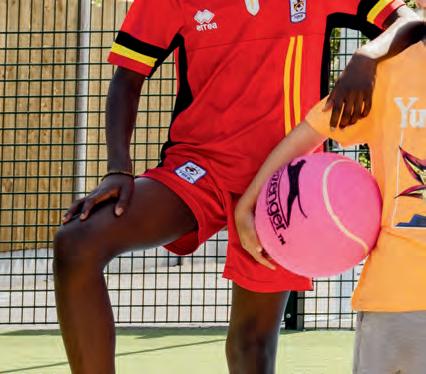

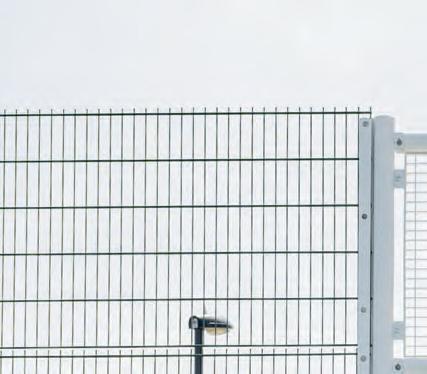
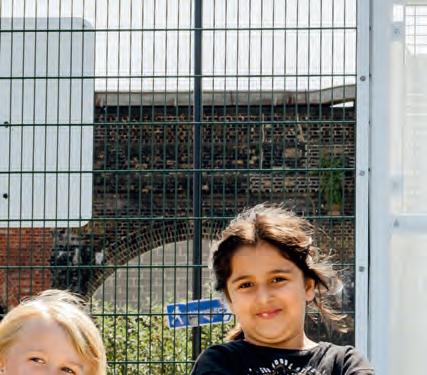

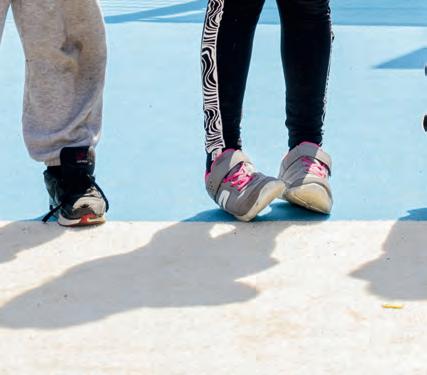





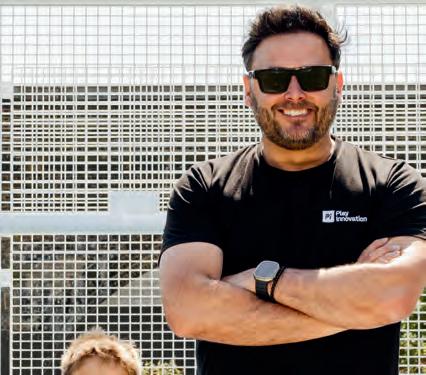









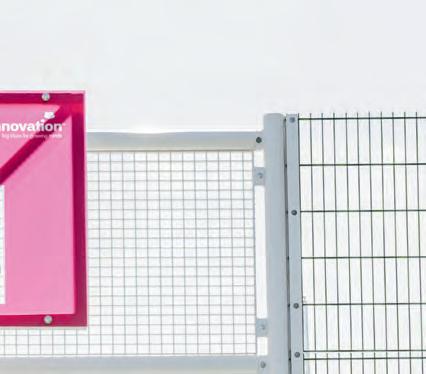


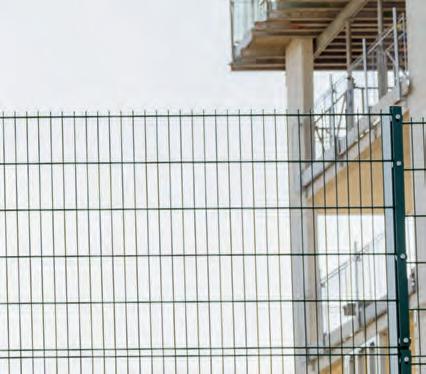




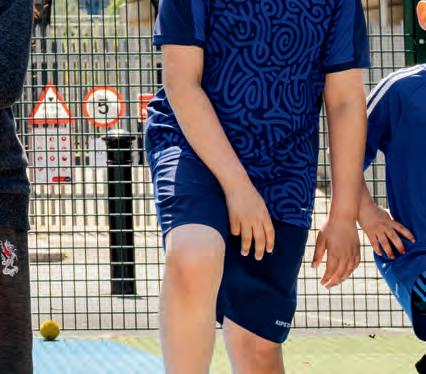
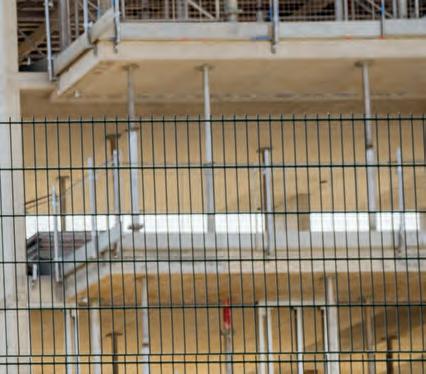
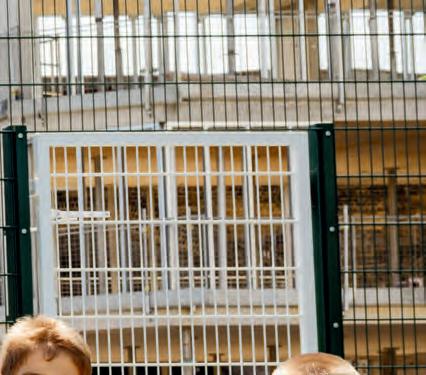
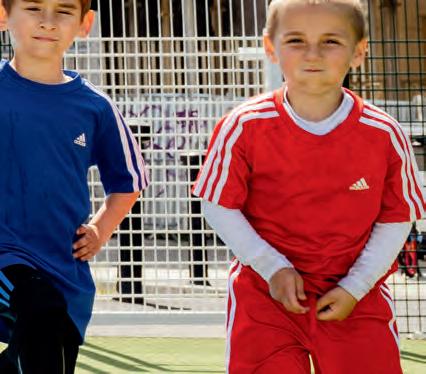
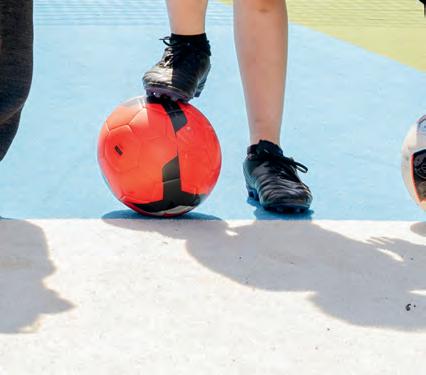
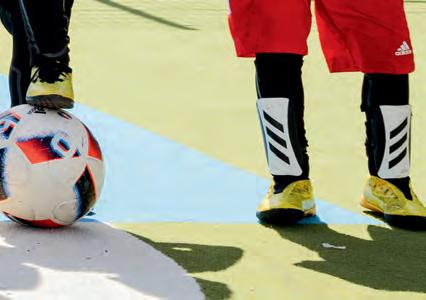
& builders of beautiful sports courts.






Bournemouth, Christchurch and Poole Council has introduced a strategy for play with the aim of providing high quality, accessible, safe and inclusive play spaces for all. PlayNation looks at the strategy in detail and speaks to council leader, Millie Earl, on what it all means
Bournemouth, Christchurch and Poole Council (BCP) approved and adopted a wide-reaching strategy for play in December 2024. Called Plan for Play, the blueprint consists of three strategic documents: the Play and Wheeled Activity Strategy, Design Guide and Improvement Plan. Perhaps most importantly, the strategy is accompanied by a recommendation that the council should invest £3.9m in improving and developing play spaces.
Plan for Play sets out how the play infrastructure should be managed, designed and improved. Its vision is both clear and ambitious: “To provide high-quality, accessible, safe and inclusive play spaces, where everyone of all abilities, across Bournemouth, Christchurch and Poole, can learn, have fun and be active through play. All ages and abilities should feel safe, confident and excited to use our play spaces as part of leading fulfilled lives with brighter futures.”
There are currently 171 play sites across the BCP area comprising 1,175 individual pieces of play equipment (excluding fences, gates, benches etc). The council recognised that the play stock had been largely inherited from the preceding councils and was in major decline
towards end-of-life soon. There was therefore a challenge to set out the future needs for play.
“Without investment, there is a real risk of wholesale removal of equipment and site closures,” the council says. “This will have an immediate impact, not only on the health and wellbeing of our young people, but also on the wider quality of green spaces, feelings of safety and levels of anti-social behaviour.
“The Plan for Play comes in three-parts – the main strategy document that provides the detail on spatial provision, state of play in BCP and a national context. It also comes with a design guide that will shape the quality and delivery of future play spaces. Within the strategy, there is an improvement plan which sets out how any funding that can be secured will be directed and prioritised.”

Having assessed and identified the issues regarding the play sites and equipment, BCP Council realised that finding the resources – and being able to prioritise them – to improve things would be demanding. And that’s where Plan for Play comes in.
“Funding the required level of investment will be a challenge,” the council said. “However, this will be clearer and easier with a defined strategy in place, helping to prioritise any available
Around 120 play spaces will bene t from Phase 1 repair funding – with major refurbishments starting from Autumn 2025
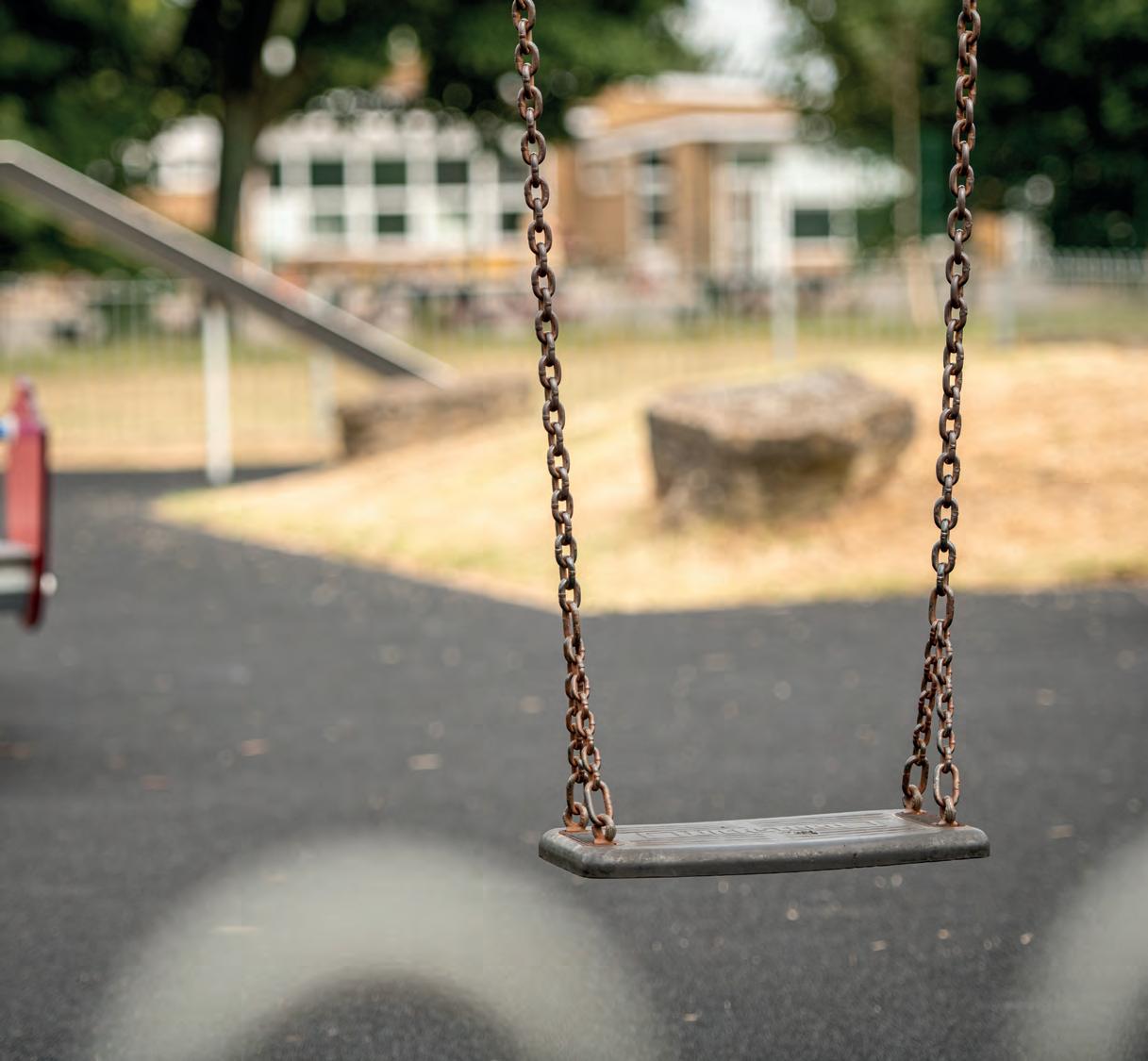
funding. This is supported by the valued work of community and stakeholder groups who are of increasing importance in championing, resourcing and sustaining local play needs.”
The Council’s own Community Infrastructure Levy (CIL) (developer contributions for the delivery of infrastructure to support housing growth) will be an important funding mechanism, alongside external funding available to charities and community groups.
“Extensive evidence defines where the highest demand for new facilities is across BCP and provides a platform for decision making,” the council said.
“All communities and their stakeholders will advocate for their play spaces to be at the top of this list. The strategy therefore sets out a rationale for delivery in a prioritised manner and process. It identifies the need for defect repairs, refurbishment, replacement, creation of new

play spaces and repurposing; while taking in to account the diverse needs of our community.
The Plan for Play aims to secure the future of play areas and wheeled sports provision. To ensure the aims laid out in the strategy remain achievable, they include BCP Council-owned play areas – including rebound walls, natural play, play trails, play sculptures and multi-use games areas (MUGAs), as well as wheeled provisions including skate parks, BMX tracks and Cyclogyms. The Plan for Play does not include other play opportunities, such as splash parks, adult outdoor fitness equipment or facilities managed by organised groups. Equally out of scope are indoor or private spaces, such as school playgrounds that are generally inaccessible to the public.
The detail of the Improvement Plan and work streams to deliver this investment will be developed and published later this year (2025).

So, what – and when – will families and residents see as a result of the strategy? According to the council, changes are already taking place and will be noticeable.
“Through 2025 people should start to see local play facilities improve,” the council told PlayNation. “Whether through repairs to existing equipment that are worn or broken, or more substantial redevelopment of whole sites.
“Around 120 play spaces across the area will benefit from Phase 1 repair funding to bring valuable play equipment back into life. This includes a new seesaw in Littledown, a replacement goal in Southbourne, and fixed swing seats in Christchurch. In total, 17 sites have been earmarked for major refurbishment or replacements throughout the first phase of Plan for Play and these will be delivered from Autumn 2025.
“Included in these major projects is a £300,000 replacement skate / BMX park at Baiter and £200,000 for a brand new play space in Muscliff & Strouden. Public consultation is being planned for the sites that require the biggest amount of change. The consultation will be hosted on the BCP engagement website, but will also feature on site and face-to-face consultation with young people, park users and residents.”

I was really lucky because I grew up in the Ashley Road area of Poole and I had access to lots of really good quality play spaces nearby. My best friend lived in Uppleby Road so we spent a lot of time in the Uppleby Road play park – it had a really wide slide which was great fun because lots of you could go down on it together.
I used to injure myself all the time from jumping off swings – which I don’t recommend, by the way – but we were pushing boundaries and being competitive.
I think the beauty of having had those experiences is that just talking about it now takes me right back to being a six year old running around and having the time of my life. That’s what we as a Council want to provide to future generations and it’s all about providing high quality play areas that give them that safe space to create their own social network, learn, and, ultimately, just enjoy going to.
We’ve all experienced play parks over the years and it is so valuable when we look at children’s development – it is essential for health and wellbeing, it’s important for social skills, and it supports children in being active and not glued to their screens all the time.
The benefits of play are so much more than just in the moment – it’s the freedom we take from learning and growing outside of school, it’s the resilience we build from tripping and scraping our knees, it’s the courage we gain from doing something different, and it’s the joy we have when we look back on those memories in years to come.



Play isn’t just fun – it’s freedom, resilience, courage and joy that lasts a lifetime

It’s so important we provide those same building blocks for development to future generations and provide spaces where children want to play.”
What does Plan for Play mean for you as a council leader?
This has been one of our priorities since we took over the running of the Council in 2023we were really concerned about the state and sustainability of play parks across Bournemouth, Christchurch and Poole, and we have been determined to produce a long-term fix.
We also want to ensure our play areas are inclusive and accessible - making sure they’re safe and provide high-quality fun for children.
We started creating the play strategy as one of our first priorities and now, a year later, we’ve published it and passed it through Council. I am really proud because it addresses our concerns and I’m feeling really confident that, by the end of it, we’re going to have really good quality play areas across our three towns which can be enjoyed for generations to come.
I’m excited that the consultation stage of Plan for Play will mean actively engaging with communities and, essentially, co-creating play spaces with them. It is vital that we look at the needs of each community – what they’re calling for – and cater for that. We want to create that sense of community ownership over a play space – it means it’s more likely to be used and cherished and gives people a real connection to a space that they’ve helped to create.
The consultation will also bring out things we don’t necessarily know about as a Council – particularly when it comes to what children want to see – so I’m really excited for families to be able to get stuck in and help create some really good community play spaces.
How is Plan for Play being funded?
More than 80% of Phase 1 funding comes from Strategic CIL (Community Infrastructure Levy) and that is money paid to the Council from developers to mitigate the impact of their developments. We can then re-invest that money into infrastructure and priorities that we know will benefit the surrounding community.
The important part is that it’s a large capital pot, not at the cost of the taxpayer, that we can use to provide tangible improvements for our residents.”
What would BCP Council like to see from national government?
I think it’s really important that the Government should want to invest in children and young people. They have talked about a prevention agenda (investing in resources to prevent crime and ASB) but, actually, play is a huge marker in the development of children and young people.
From my point of view, the Government needs to look at a play strategy as part of their prevention agenda. They should be committing money to make sure that every child across the country has access to play otherwise it becomes a postcode lottery about what provision is actually afforded in a community.”



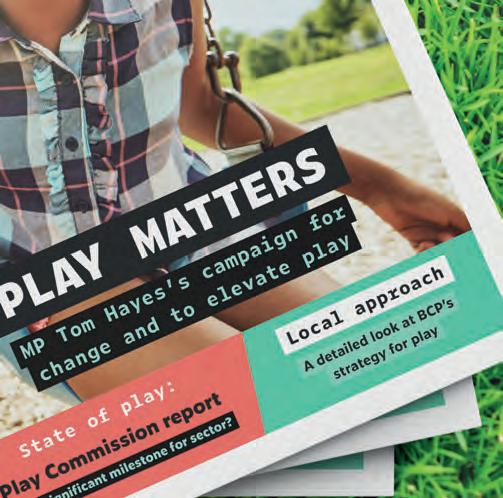



into a Fast-Emerging Racket Sport

Researched and written by Ray Algar. Published April 2025
Ray Algar, Managing Director, Oxygen Consulting, UK
Introduced to the UK 26 years ago, why is padel gaining momentum now?
The UK Padel Report is written for senior stakeholders and represents the country’s first comprehensive investigation into the growth of padel across the nation.
This landmark report explores
● The strategic drivers shaping UK padel
● A detailed audit of all UK padel courts, including a future forecast
● Analysis of the UK’s top 10 operators
● Exclusive new player research exploring why people are choosing this exciting sport
● Expert interviews with stakeholders shaping the sport’s future
No advertising. Just actionable insight.

